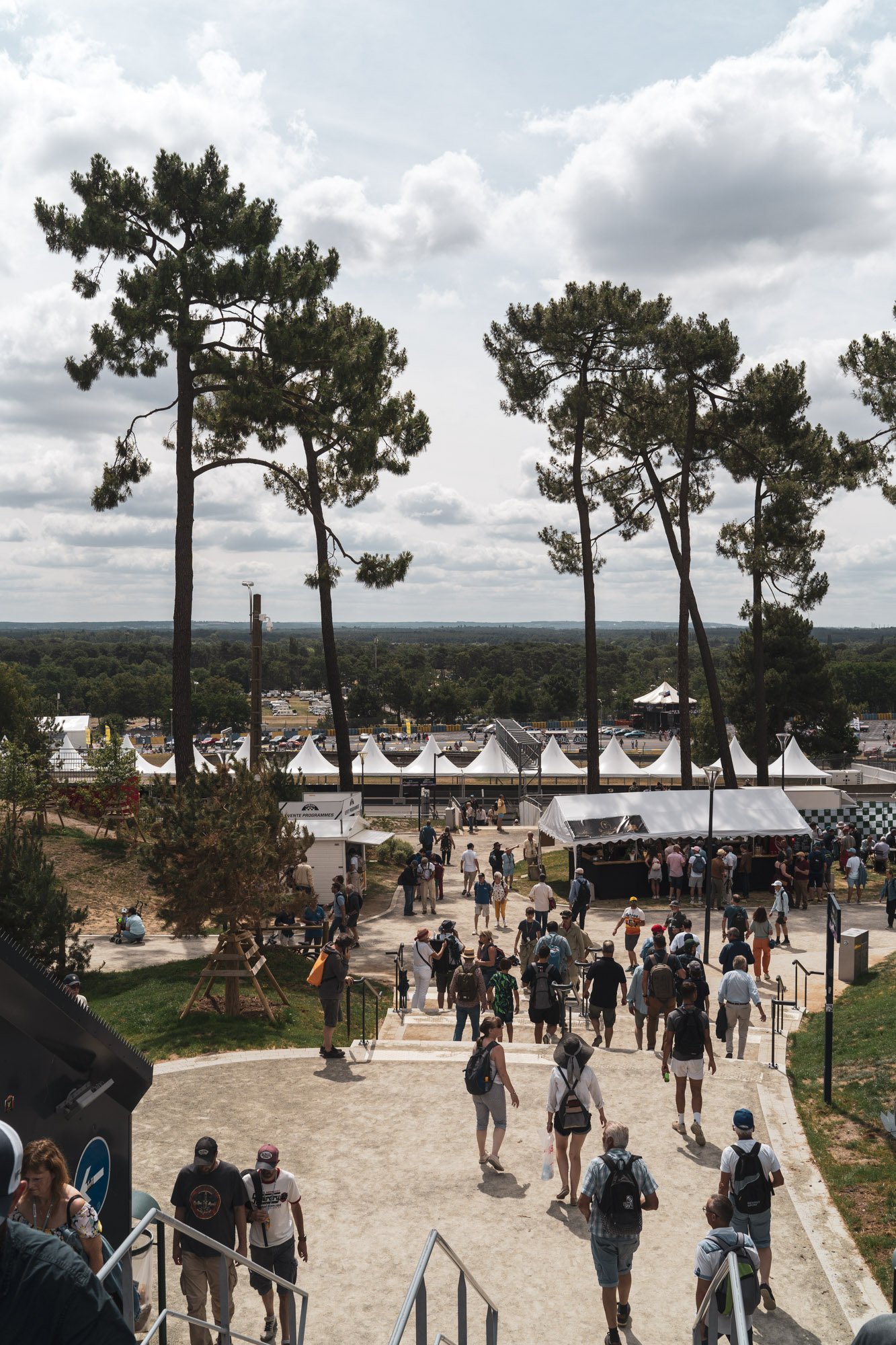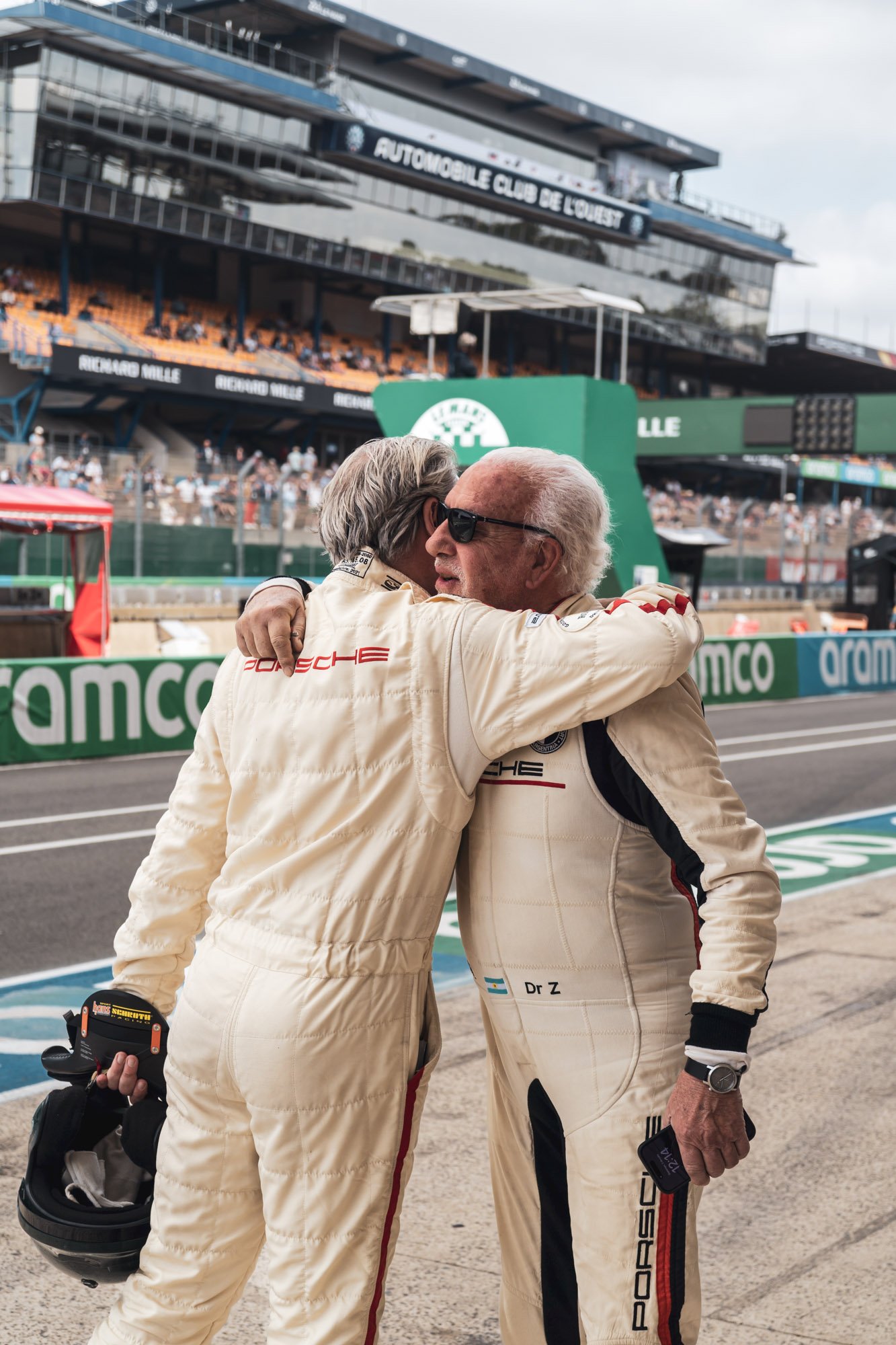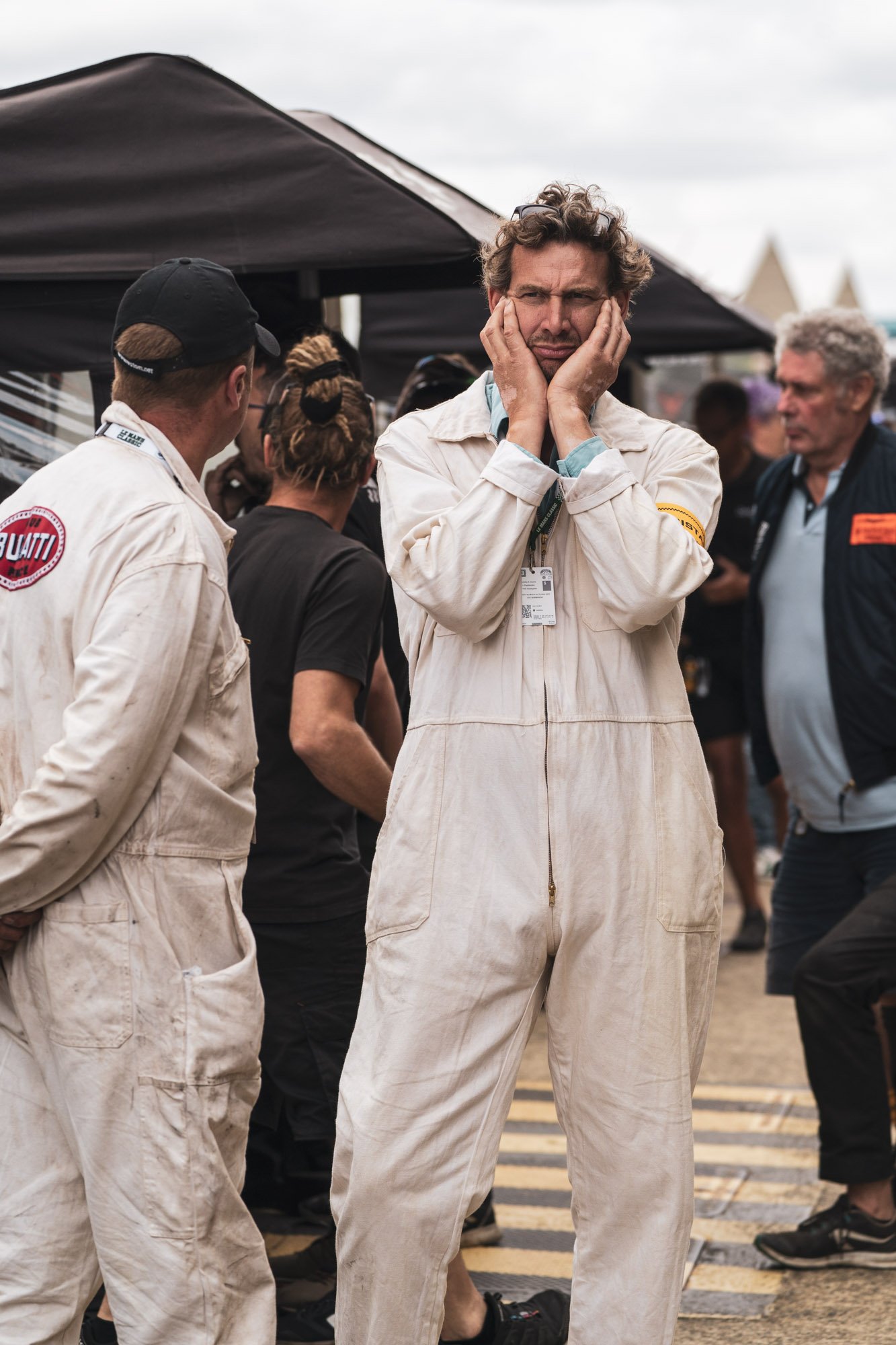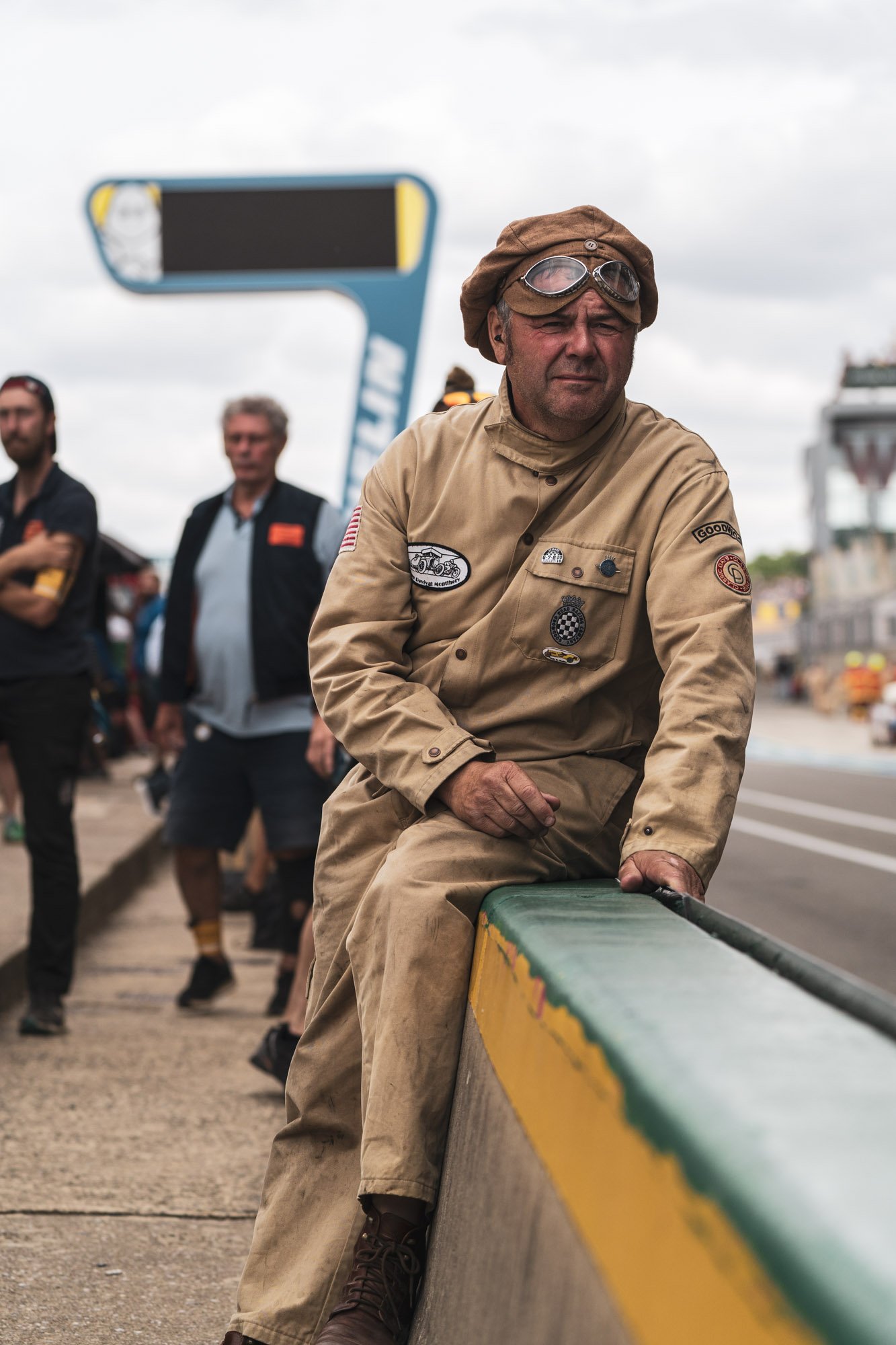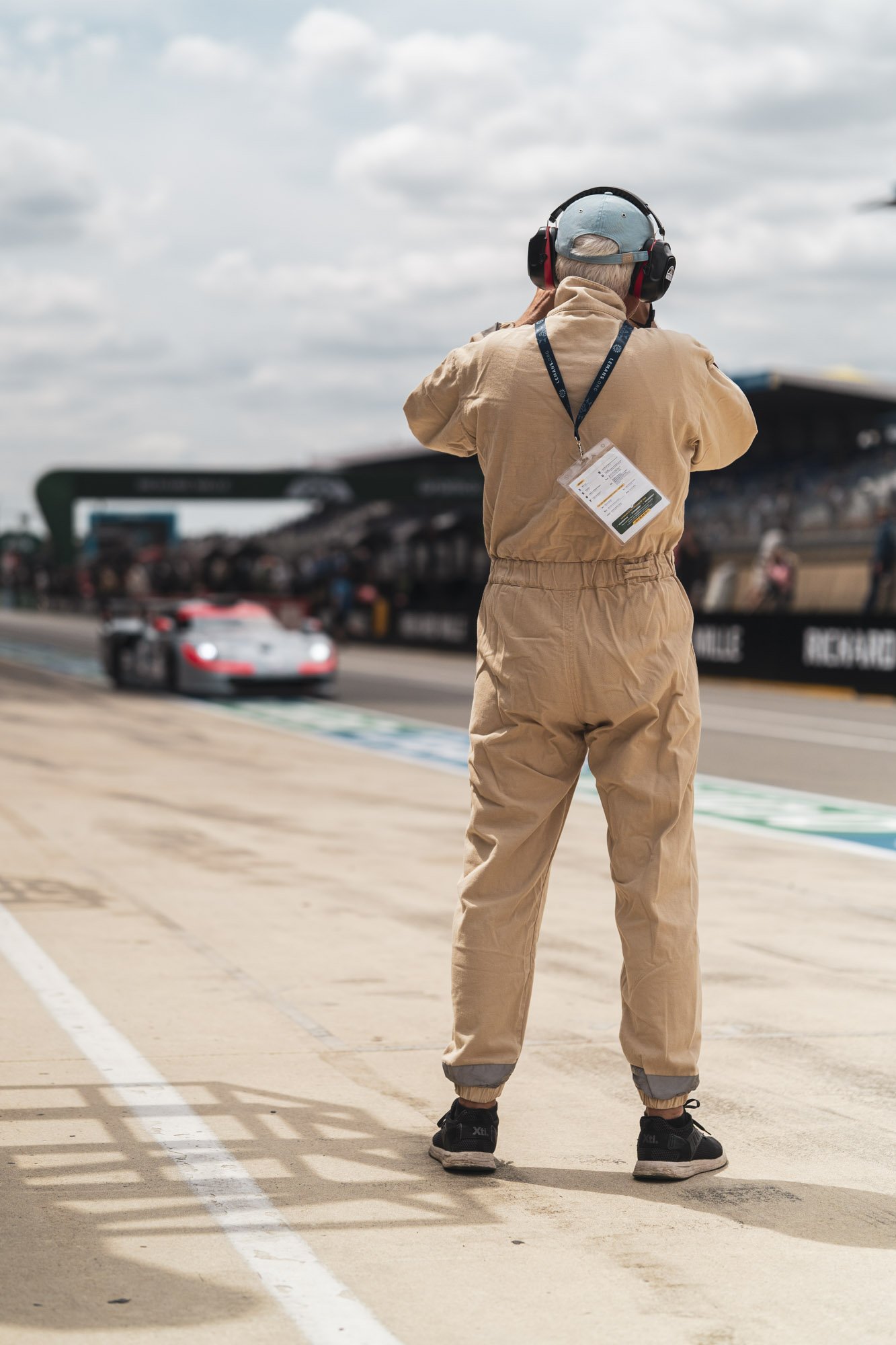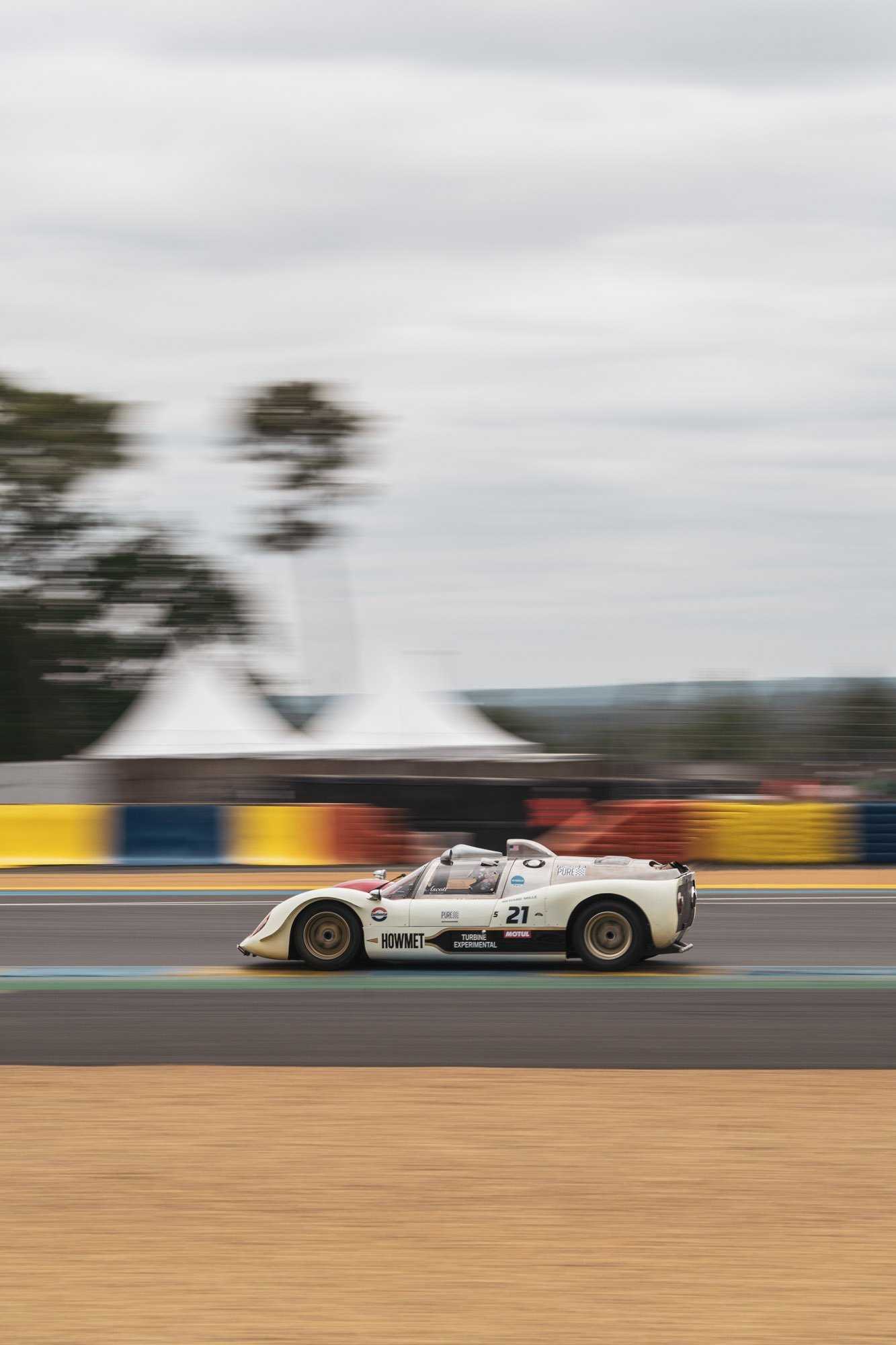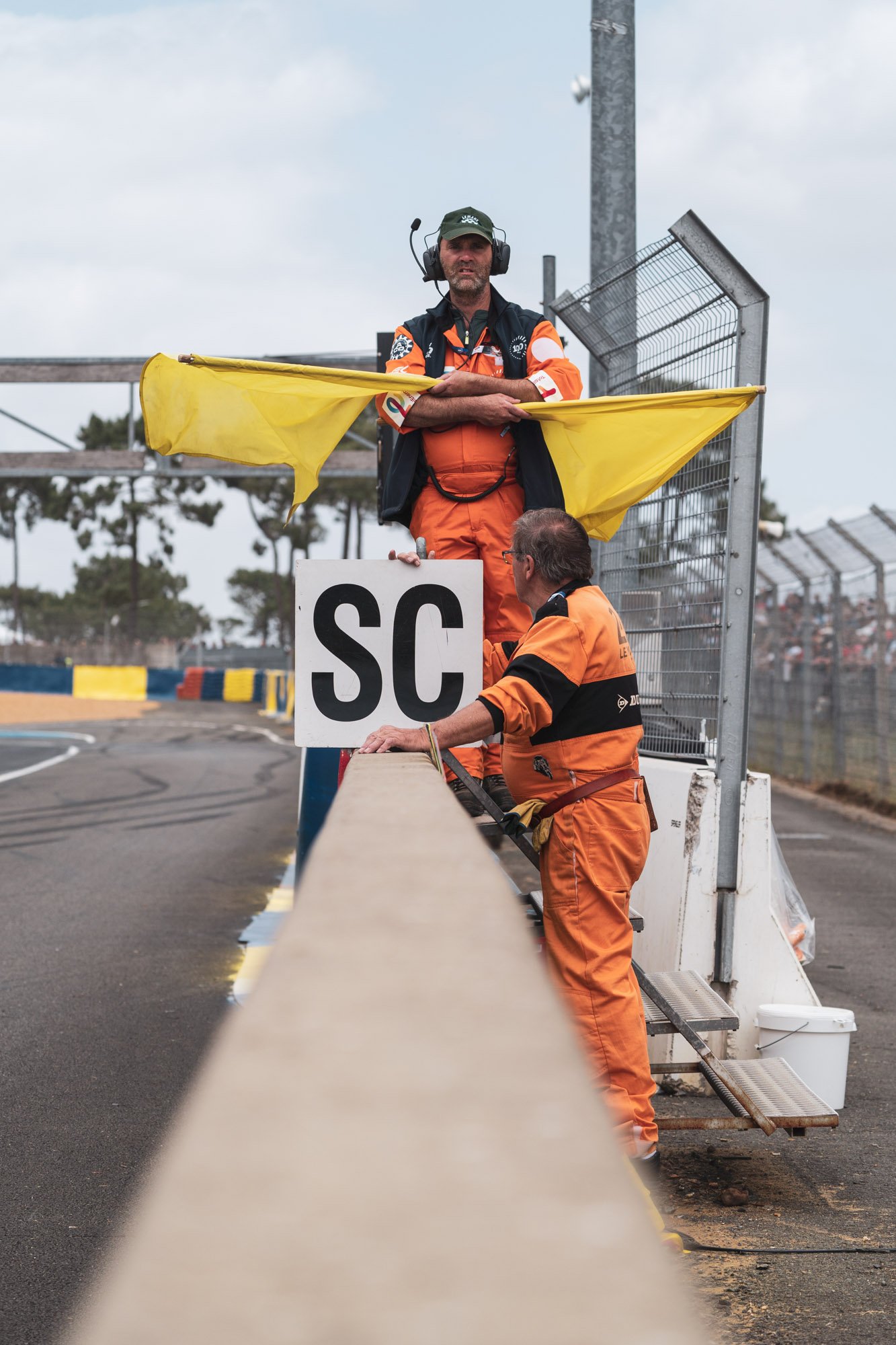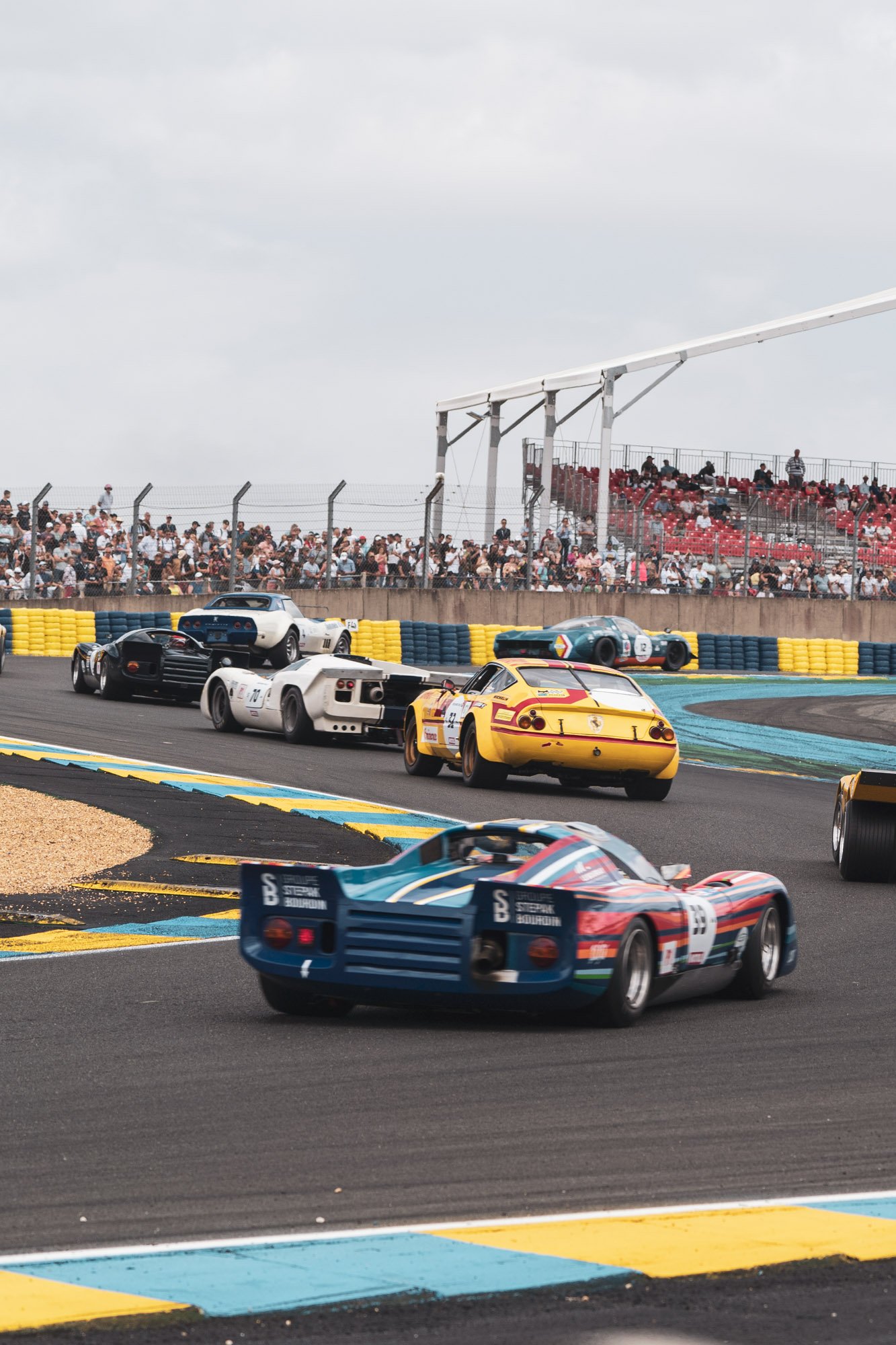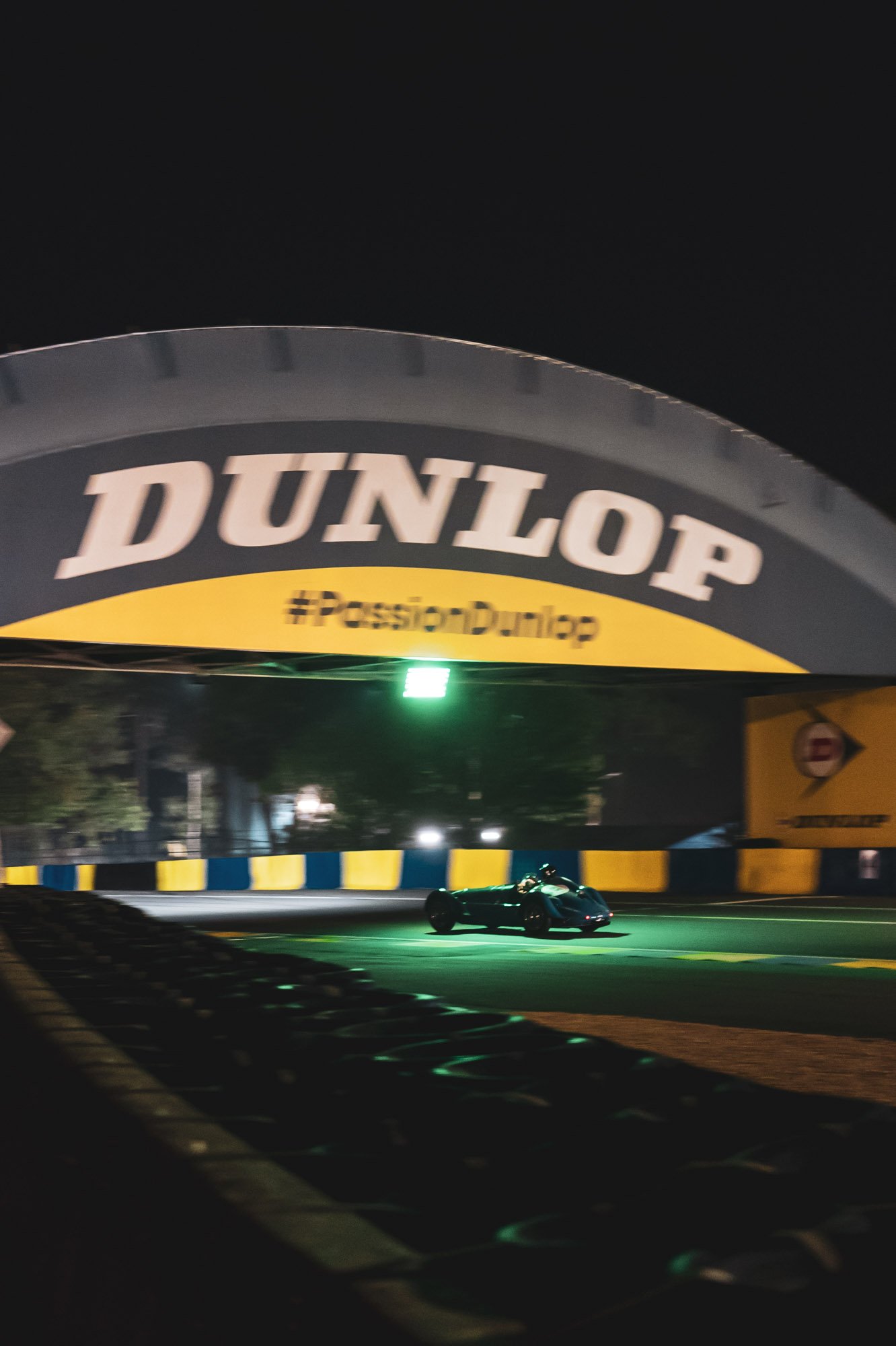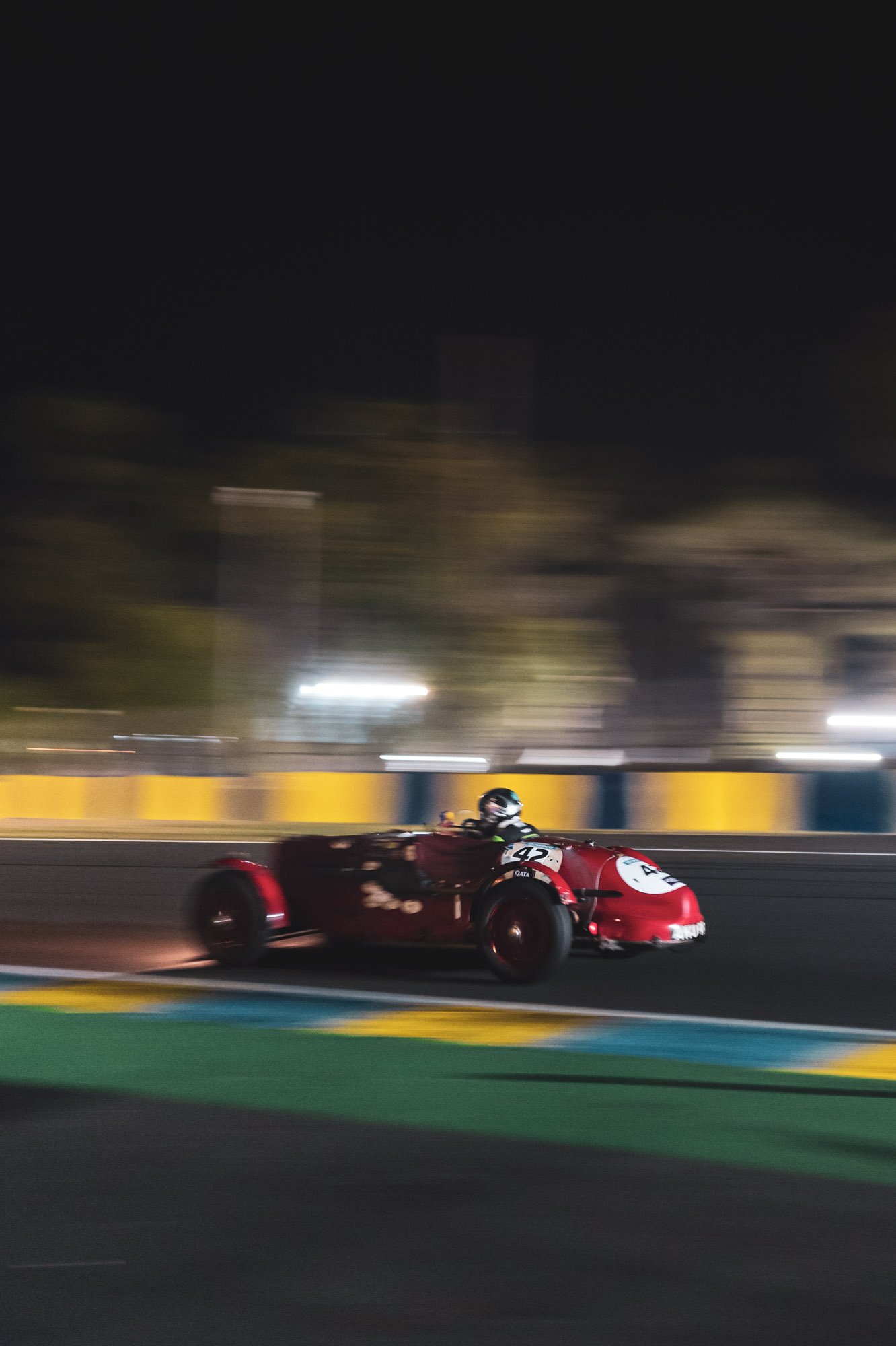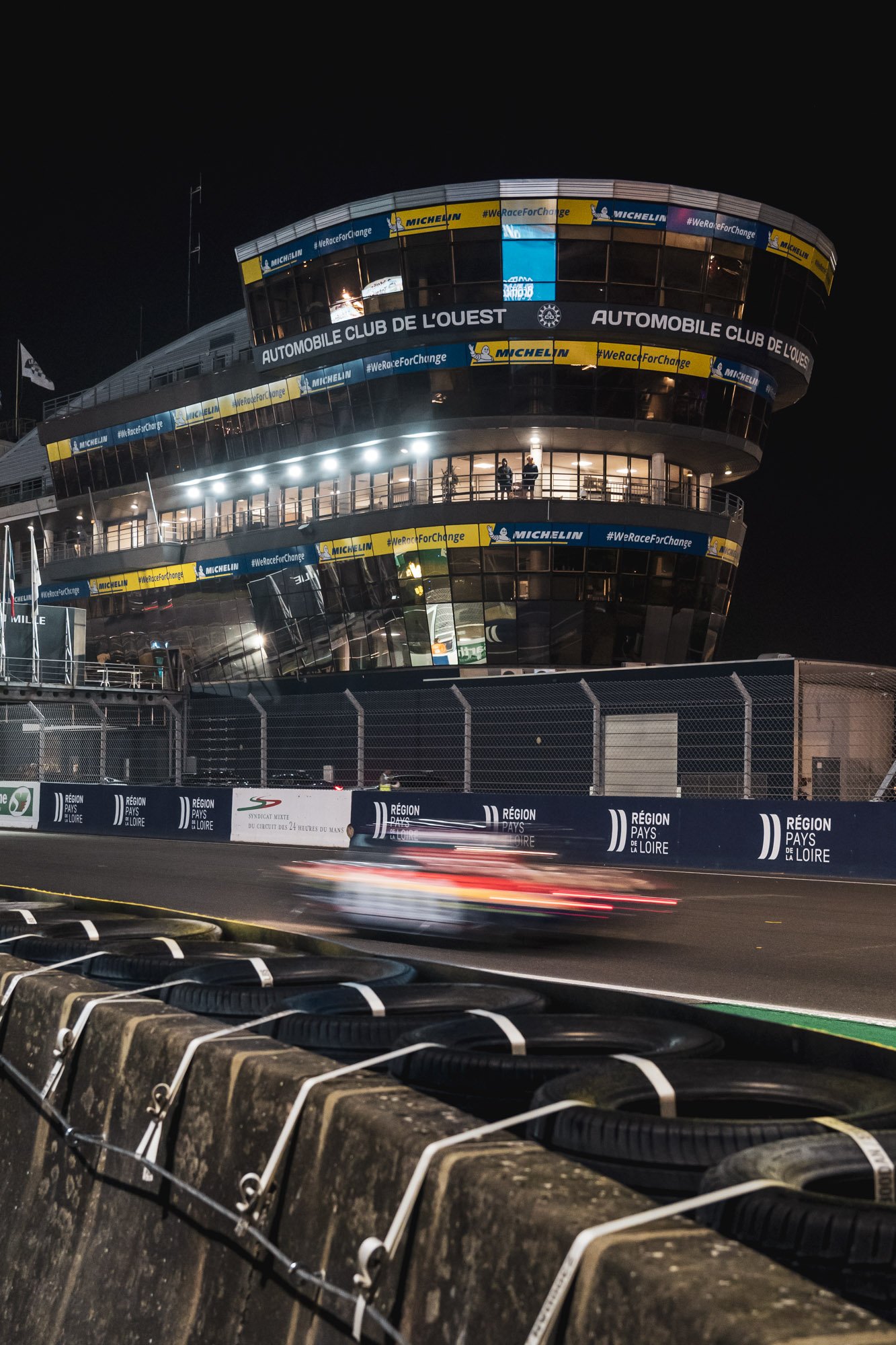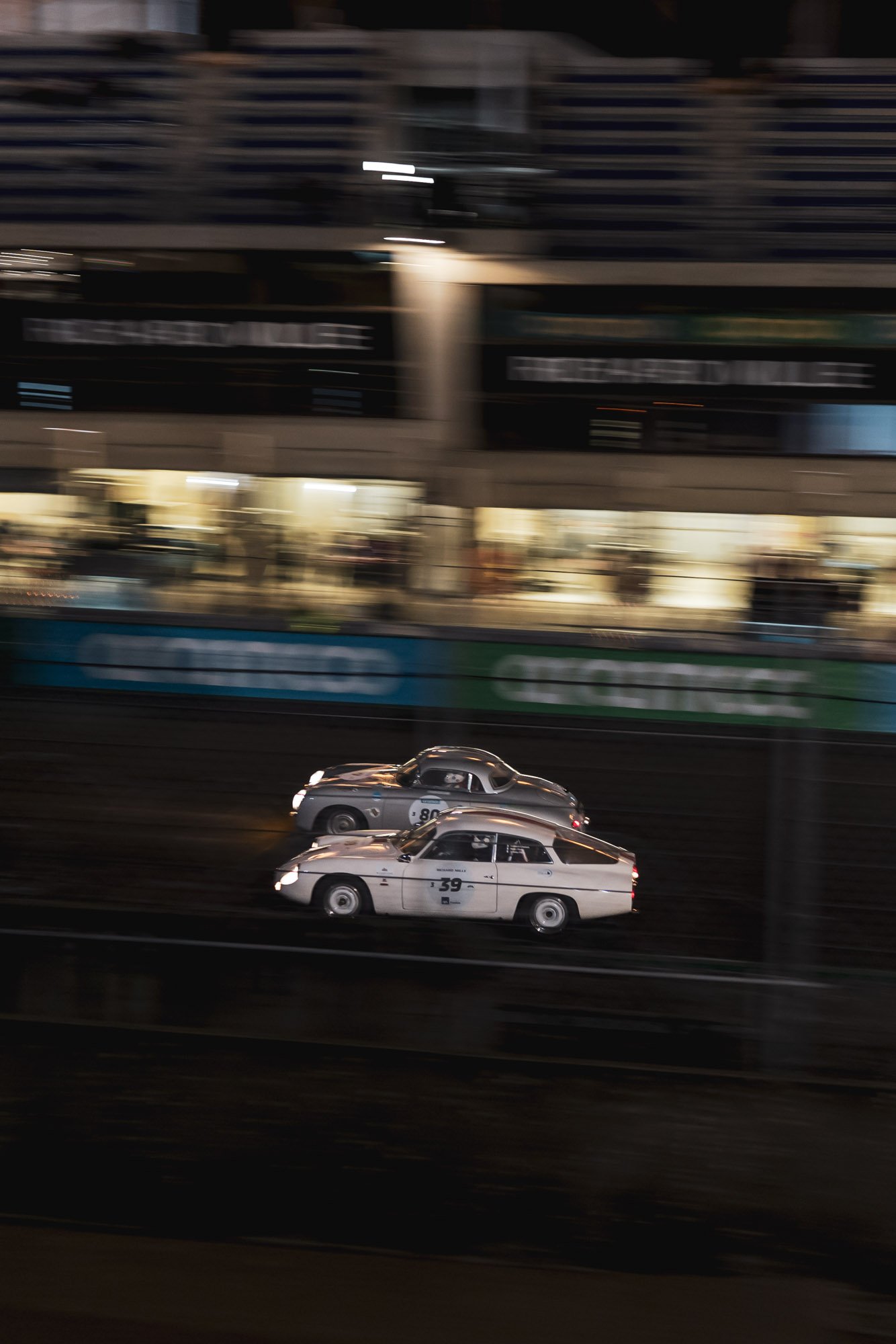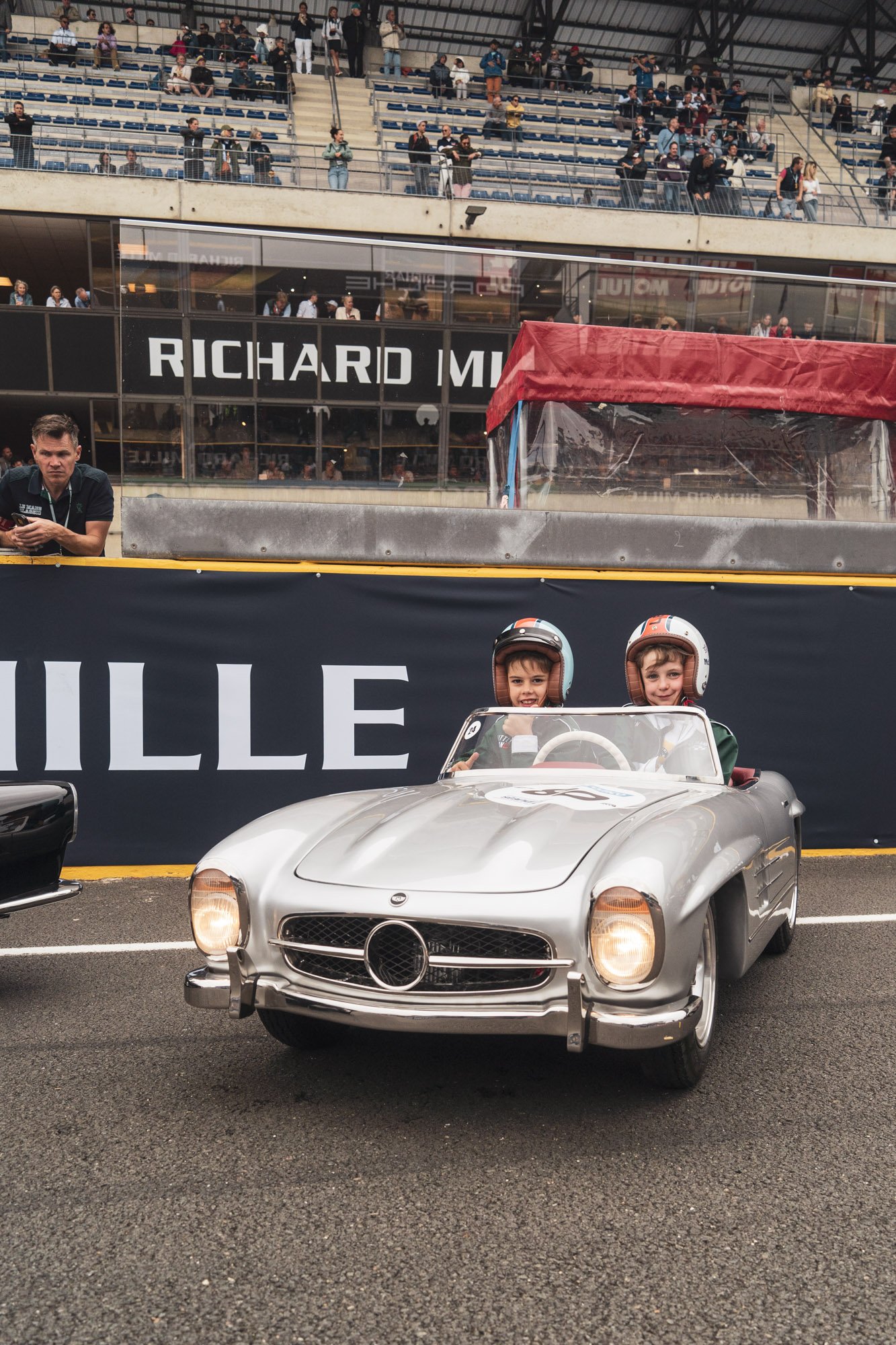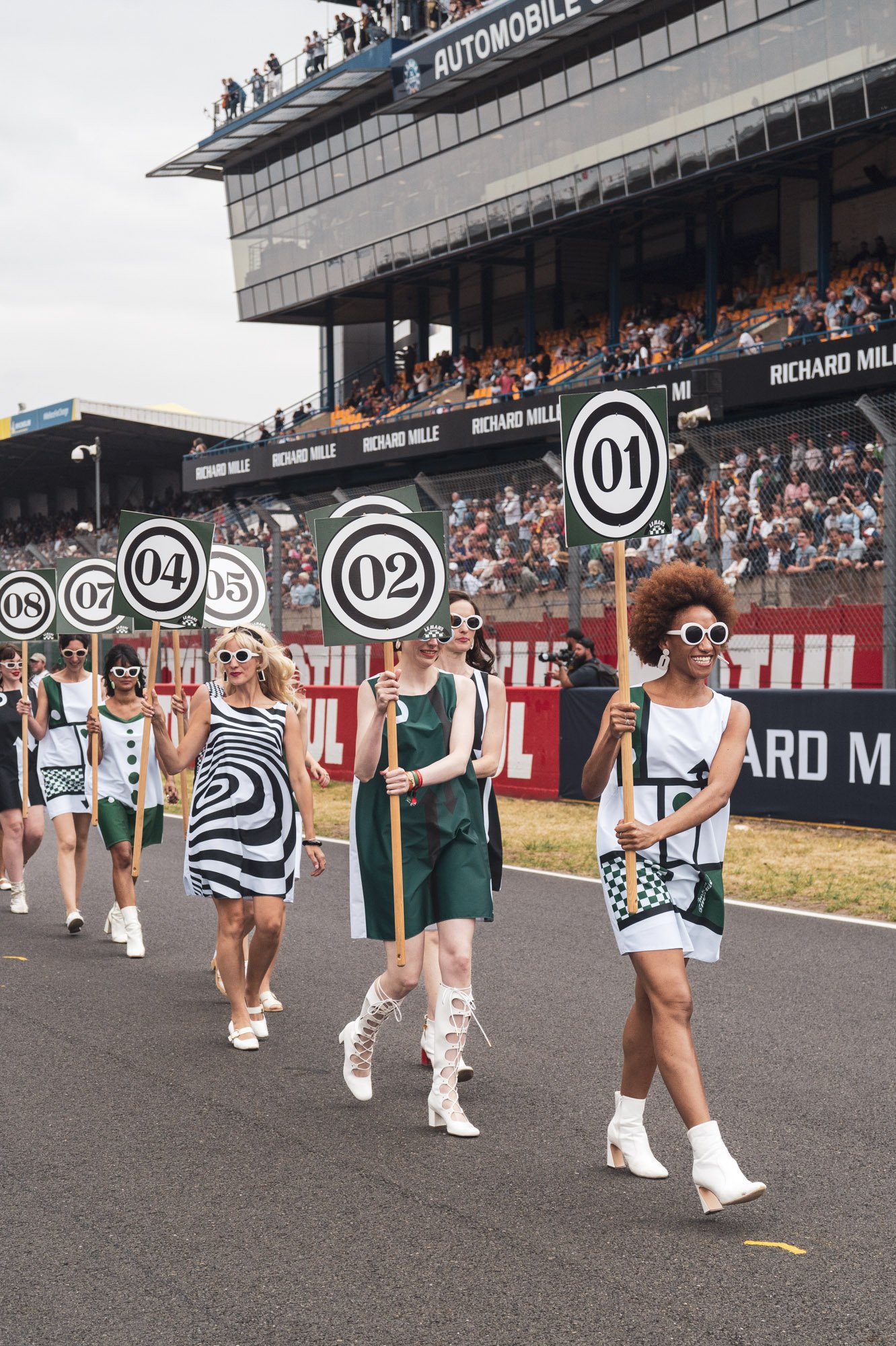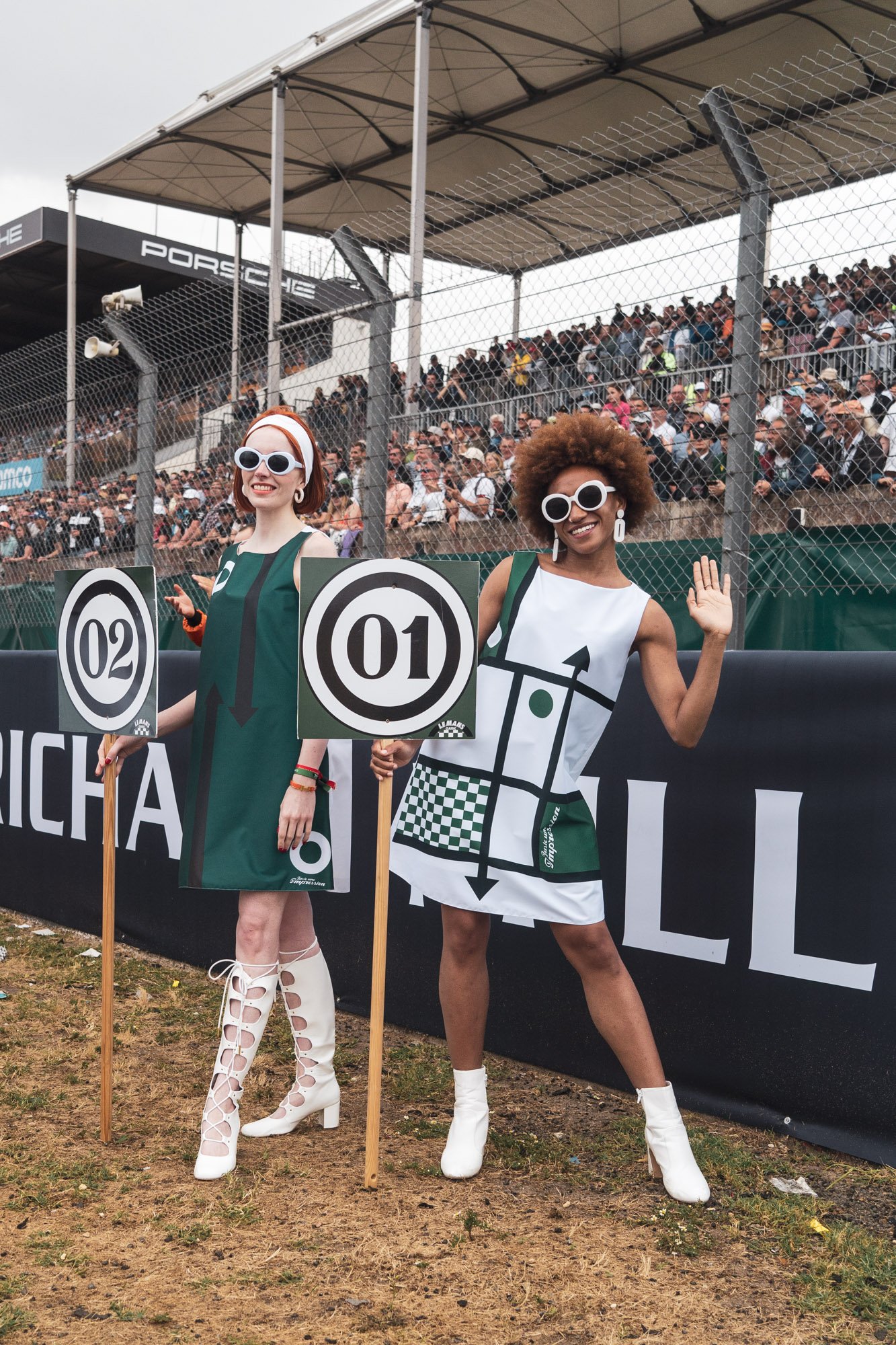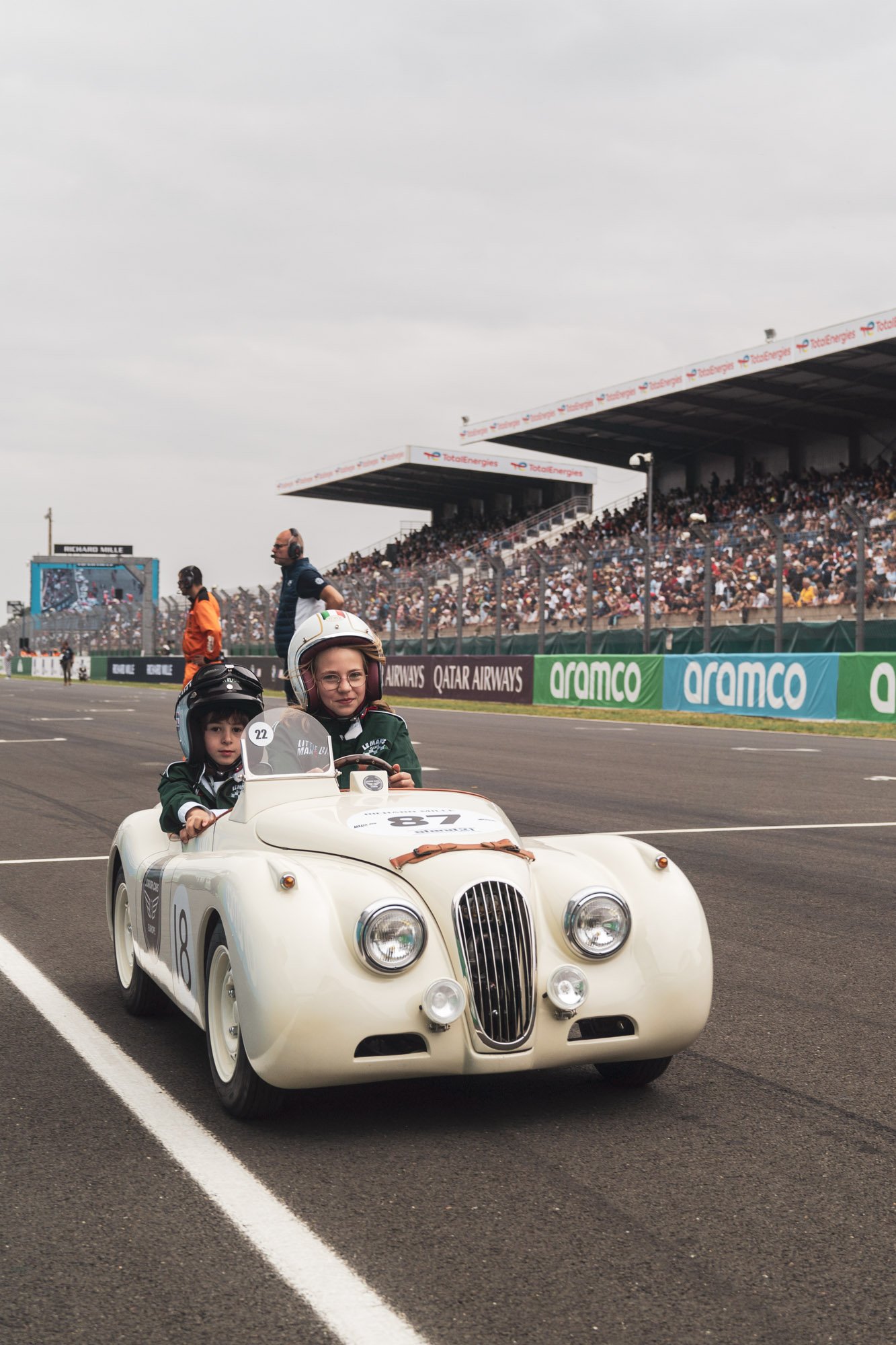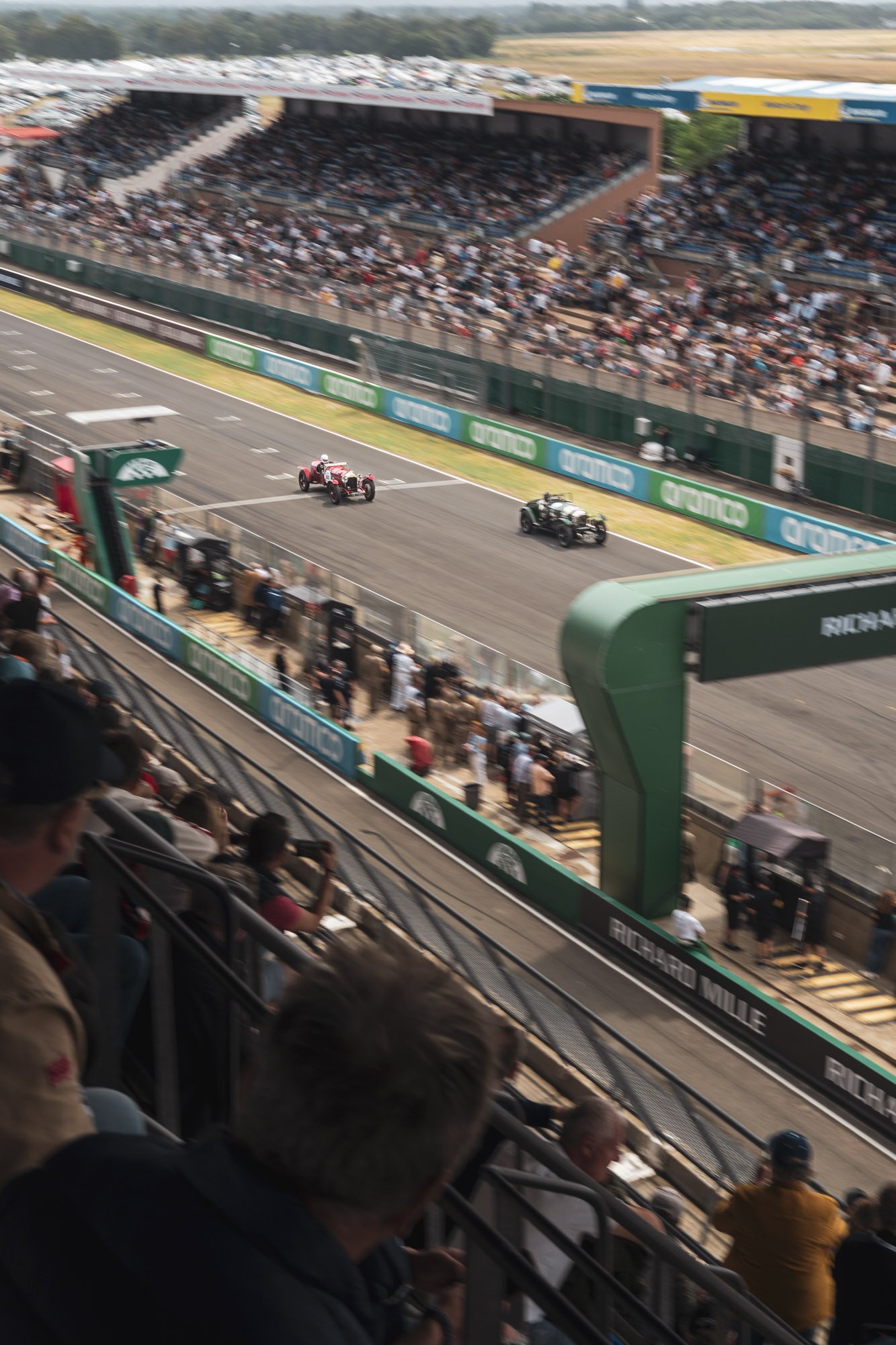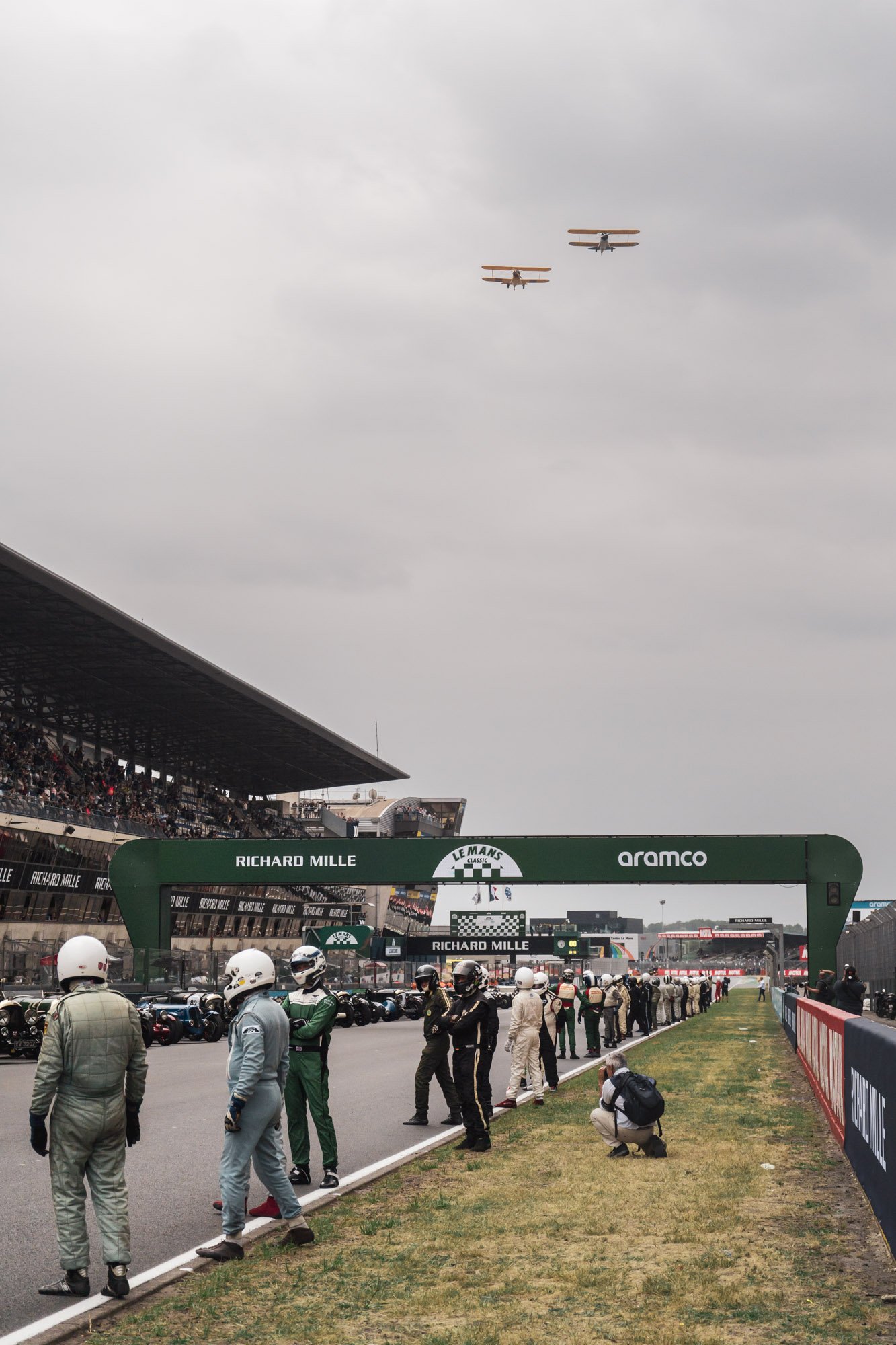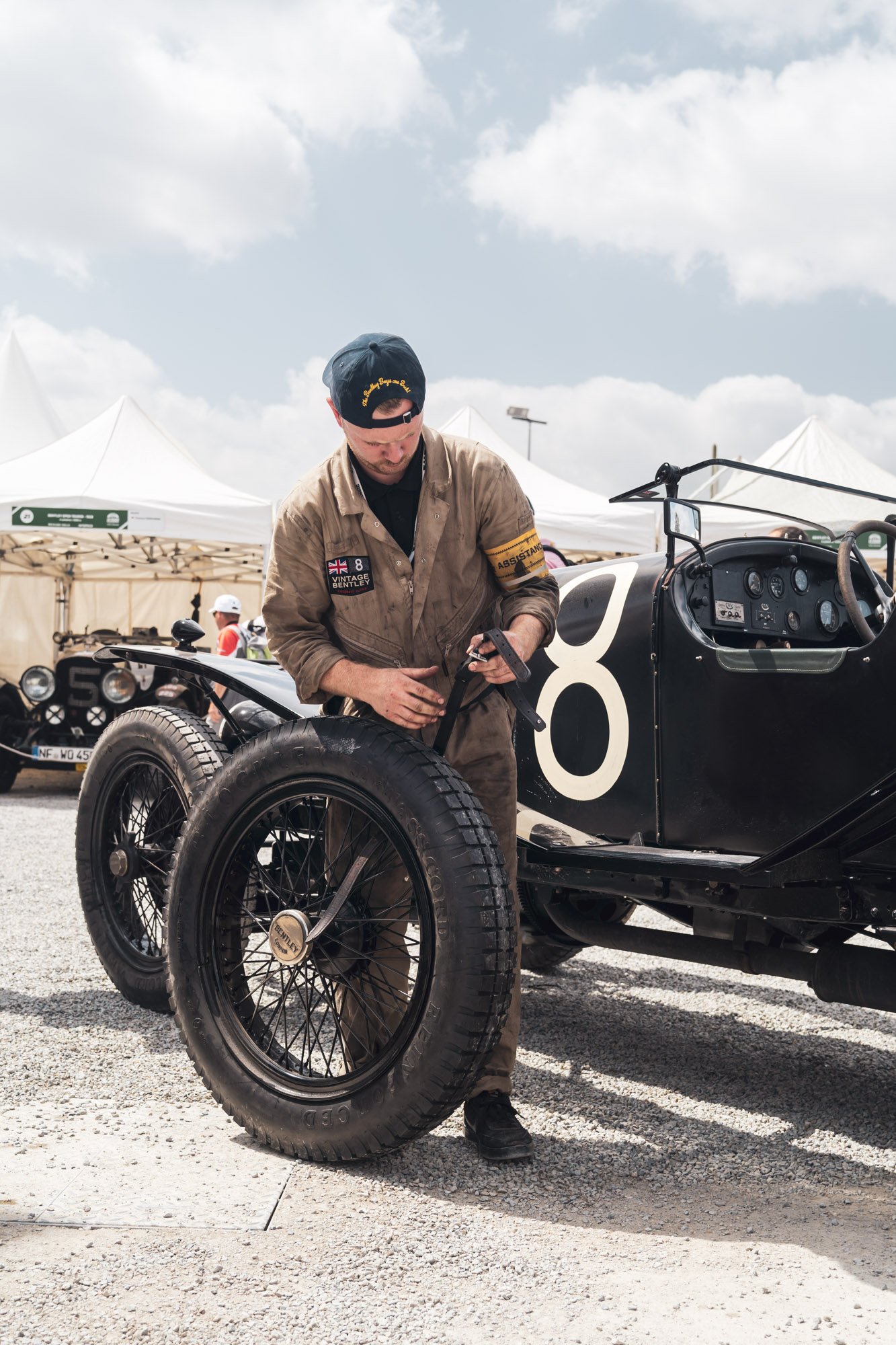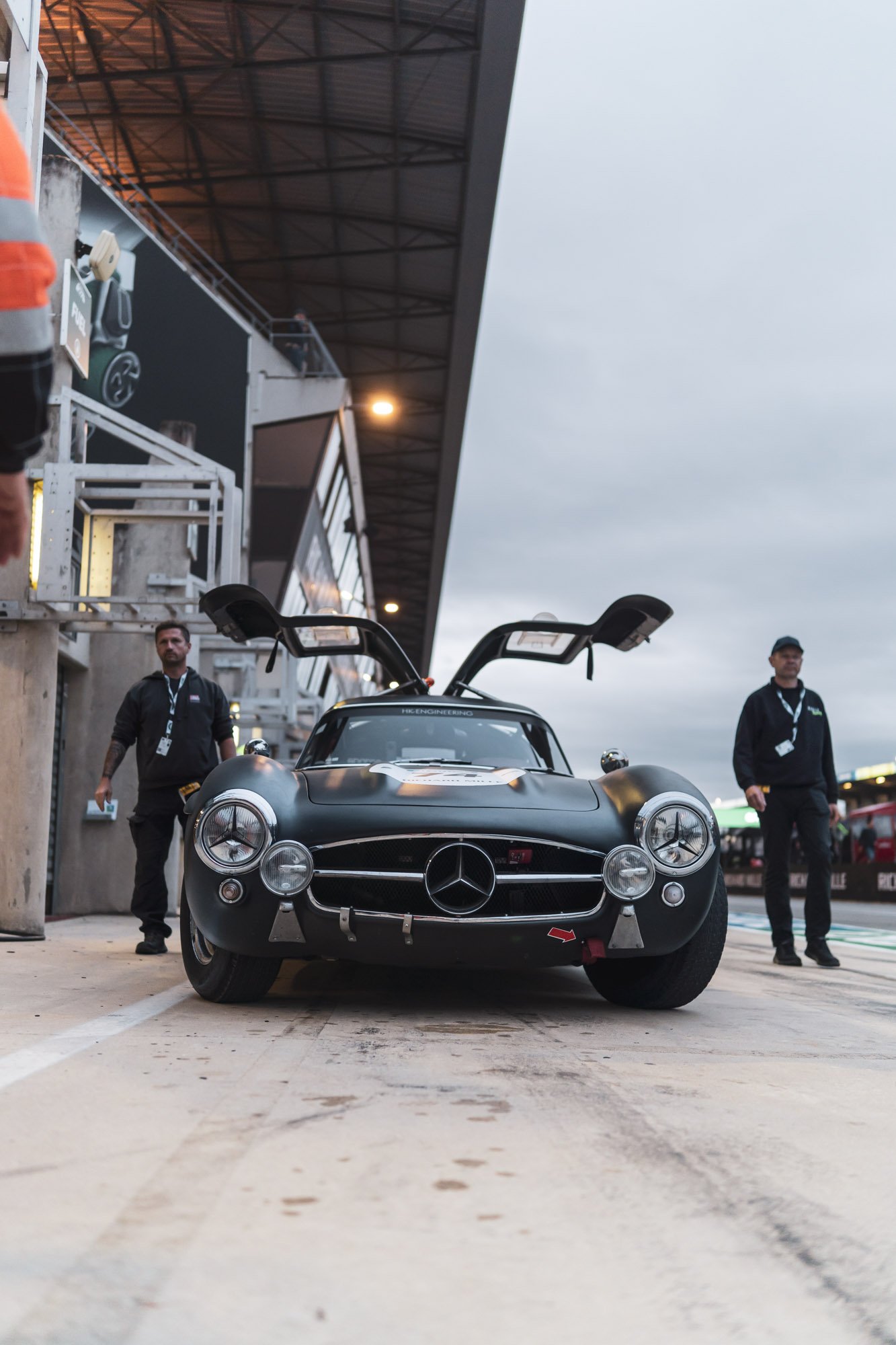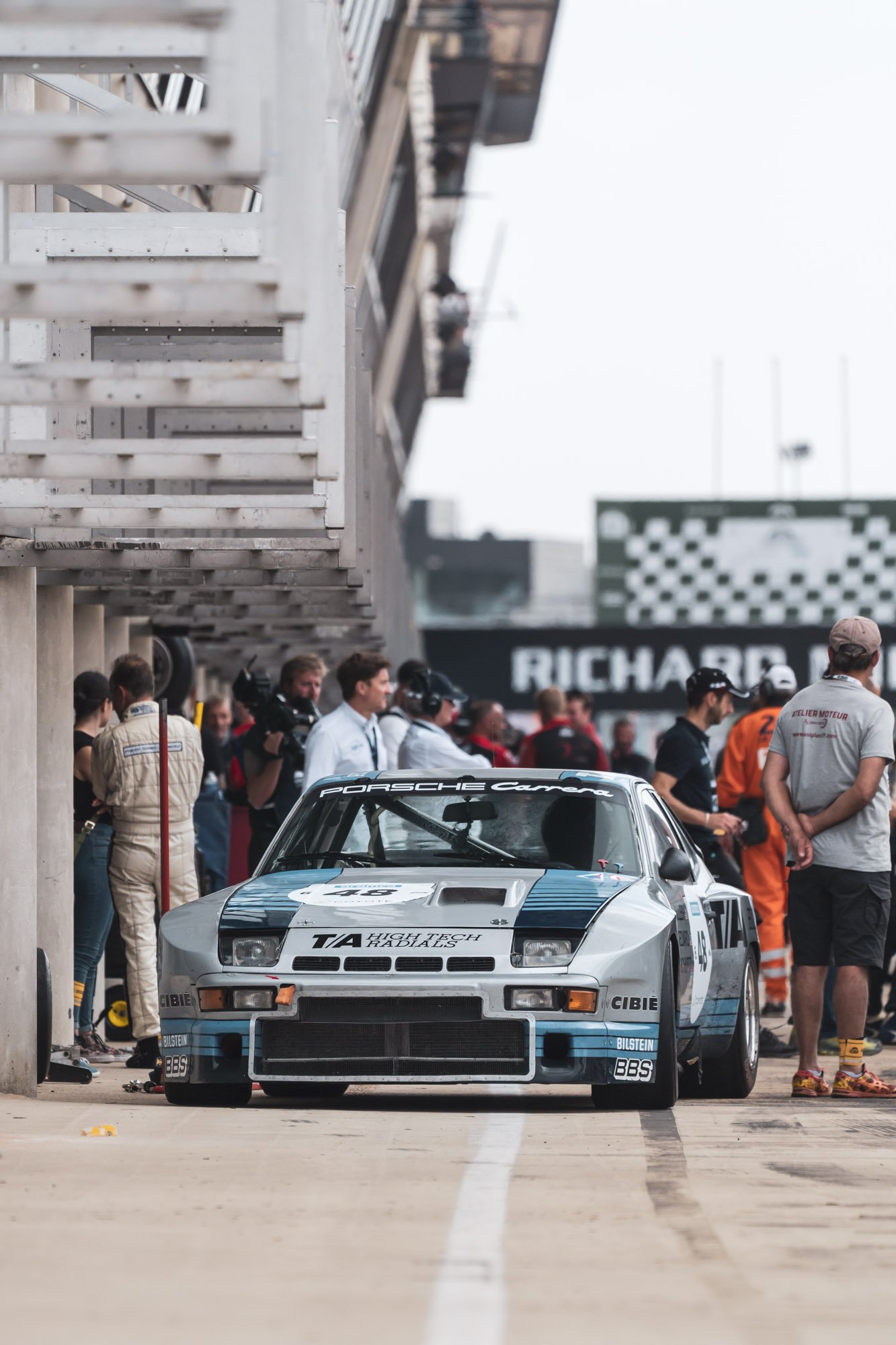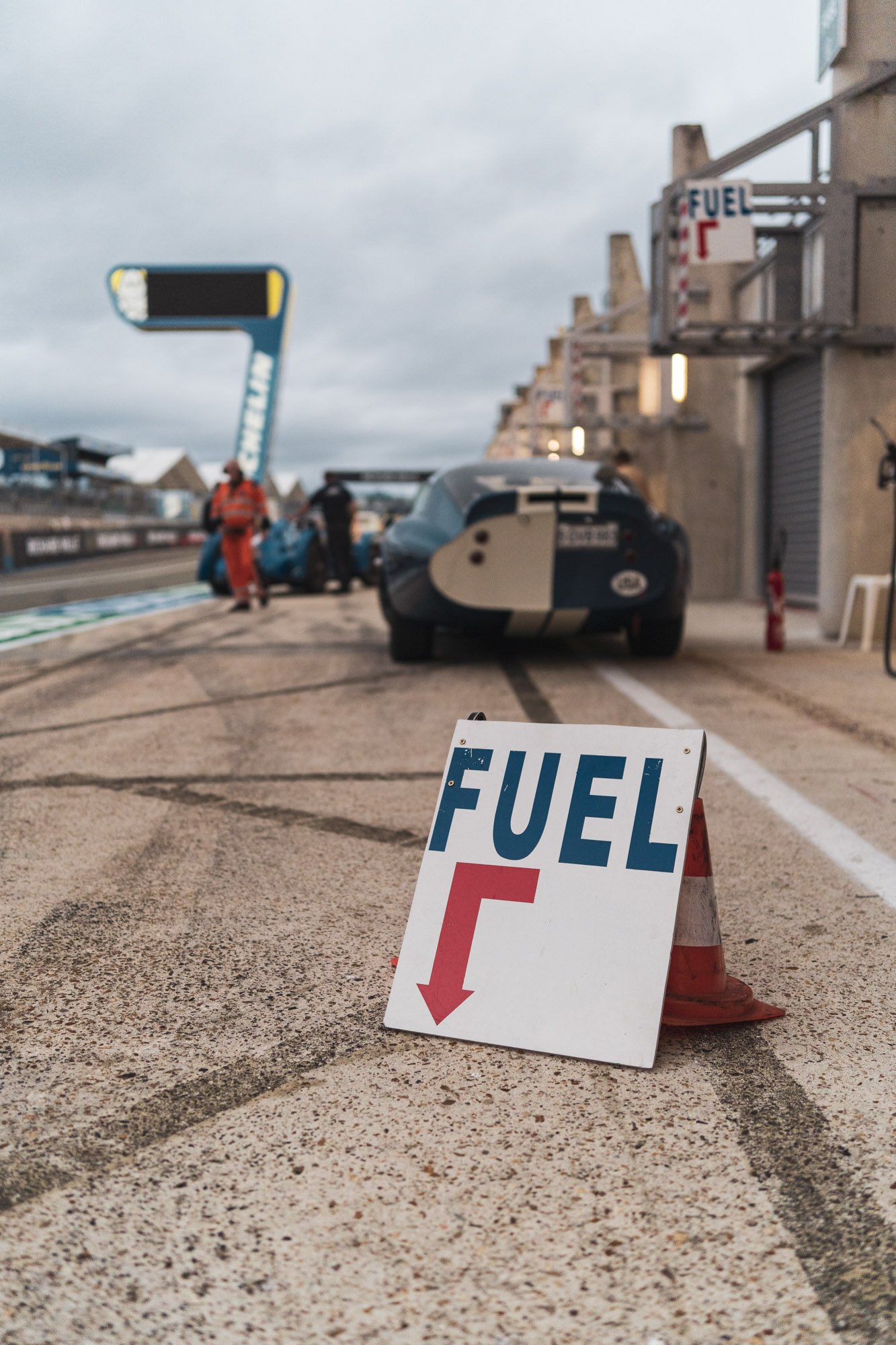Le Mans Classic – “The” Event of 2023
100TH YEARS OF LE MANS – SERVED CLASSICALLY
I could clearly hear at least a couple V8 engines rambling ahead, followed by a bit more subtle, yet still potentially quite violent at times V12. The immense heat generated from their exhausts warms up this rather dull day and immediately converts the falling drizzle into steam. My body trembles emotionally in anticipation of what’s to come, unreasonably resonating with my mechanical companions… in the hour-long traffic jam towards Circuit de la Sarthe.
Hearing the hard racing from not so far away, I appreciated what was probably the most beautiful road congestion I had experienced. A few Shelby Cobras, a Mustang and a couple Ferraris moved as slowly as did my rental Fiat 500. Shortly, I will be experiencing their racing counterparts on what likely is the most famous racetrack in the world. Parking my car by the Mari Marvingt Stadium, a few hundred metres away from the straight leading to the Chicane Daytona reminded me what I forgot to bring with me… earplugs.
A COMPLETE SHOW-STOPPER
Passing through the entrance gate was a shock for me. Well, I am used to partaking in various racing and concours events all over the world, but Circuit de la Sarthe left me speechless. How could it be so big?! Not only the sheer size of the venue enclosed by the 13650m long racetrack was overwhelming, but also the scale of the event itself. Let the numbers speak for themselves. The weekend attracted 235 thousand spectators who had the pleasure of admiring 9200 classic cars on display. And that’s exclusive of the 784 racers competing in 10 classes!
Walking amongst countless Porsches, Alfa Romeos or Ferraris I felt like a kid in a sweet shop. Every corner brought yet another curious modification of a 911, the Instagram-famous Giulia Super ‘Pulizia’ by Squadra Kidston or a couple dressed historically to match their classic Citroen. My attention span was reduced to the absolute minimum but the call from the engines rocketing past the pit straight was firm and undeniable. Nearly hypnotised, my feet led me to what can easily be described as the heaven of classic motoring.
JUST STEP INTO THE PITS
To get to the pits one needed to cross, or sometimes walk around the two parc fermés located just in front of the very impressive grandstand building. Standing some thirty metres tall and a couple hundred long it works alike a magic curtain, enclosing the prize until the very last moment. A quick passageway walk through and here I was, in the middle of the action encountering motor racing from the very closest I ever have!

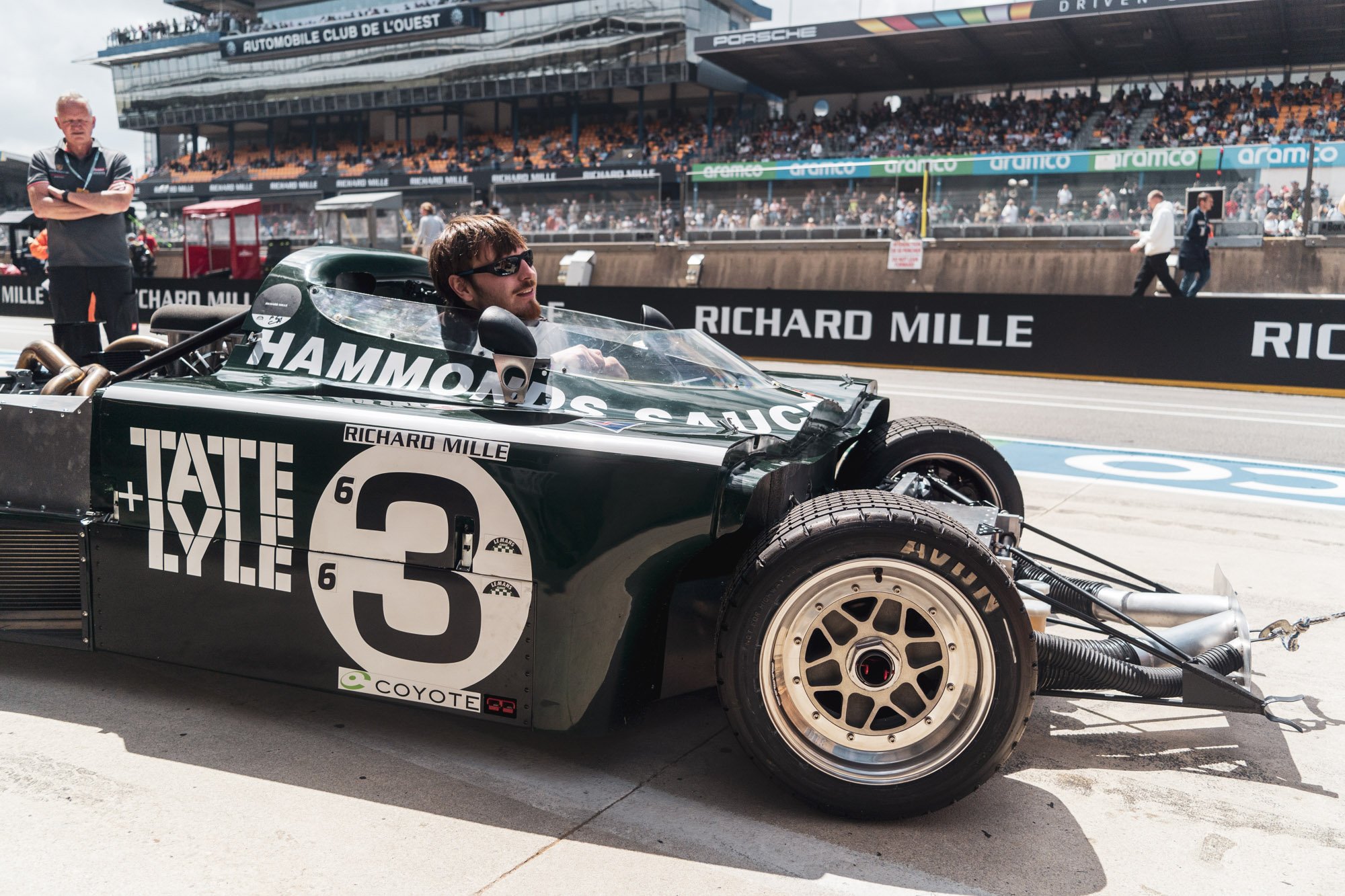
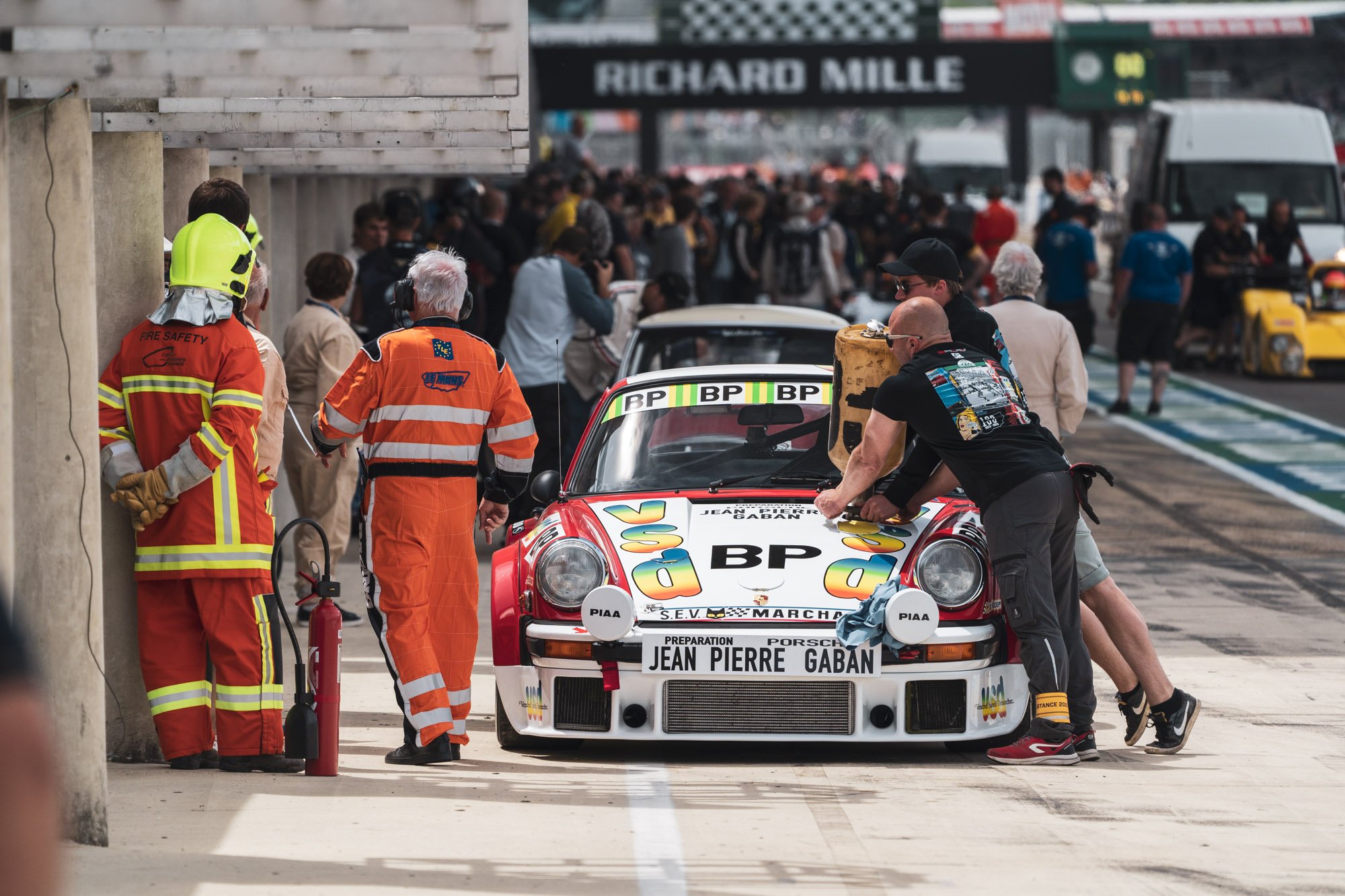
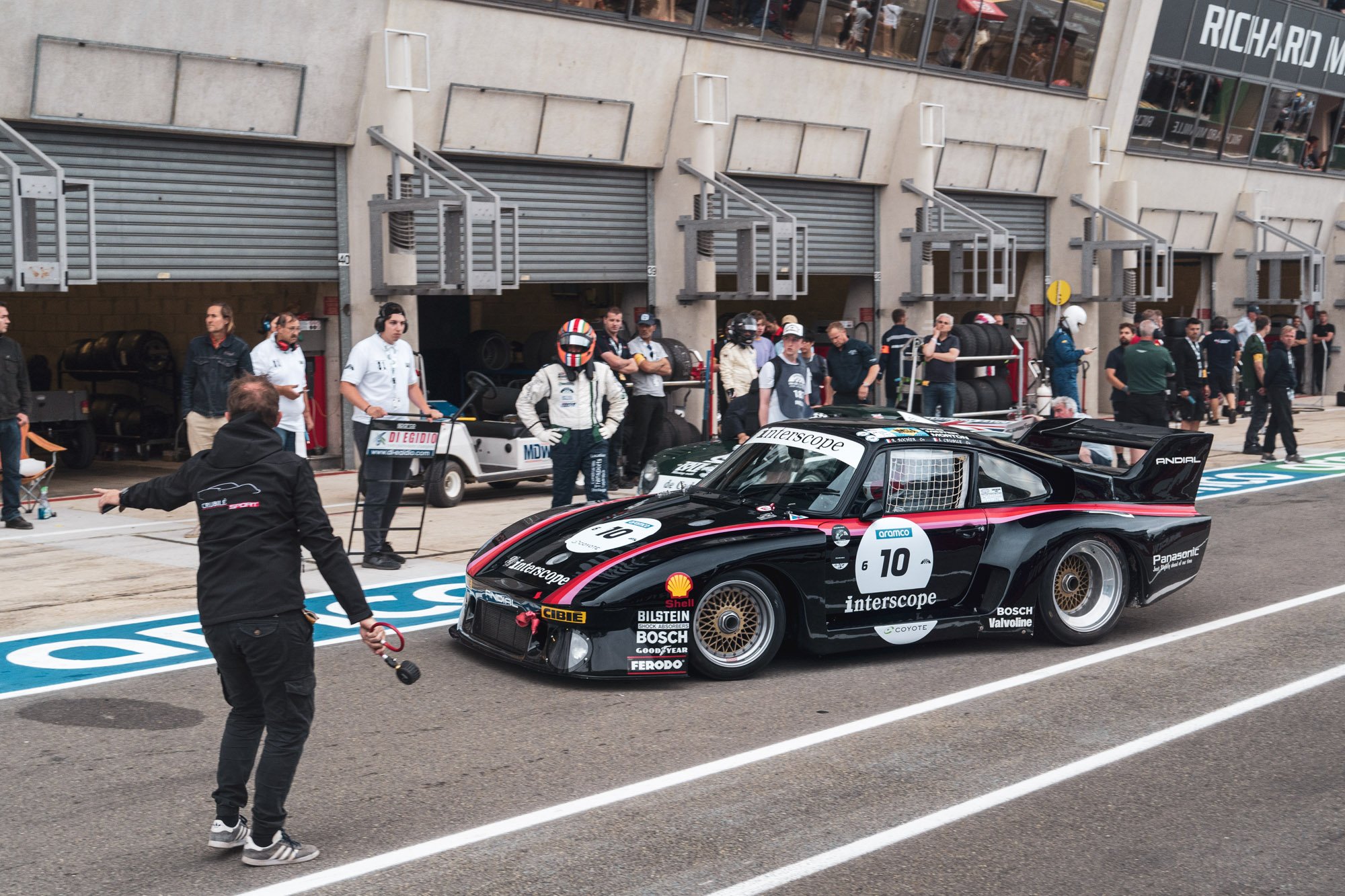
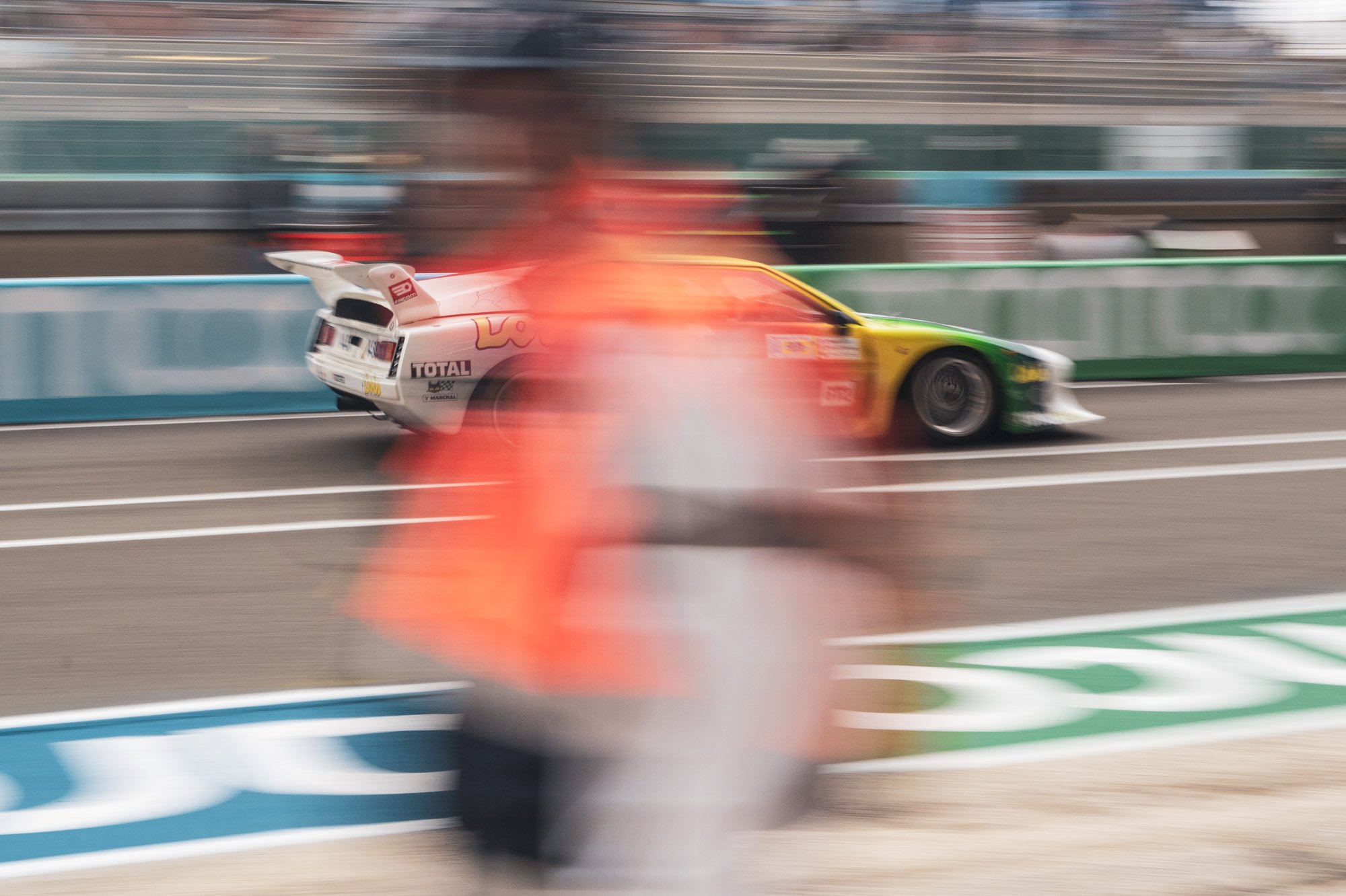
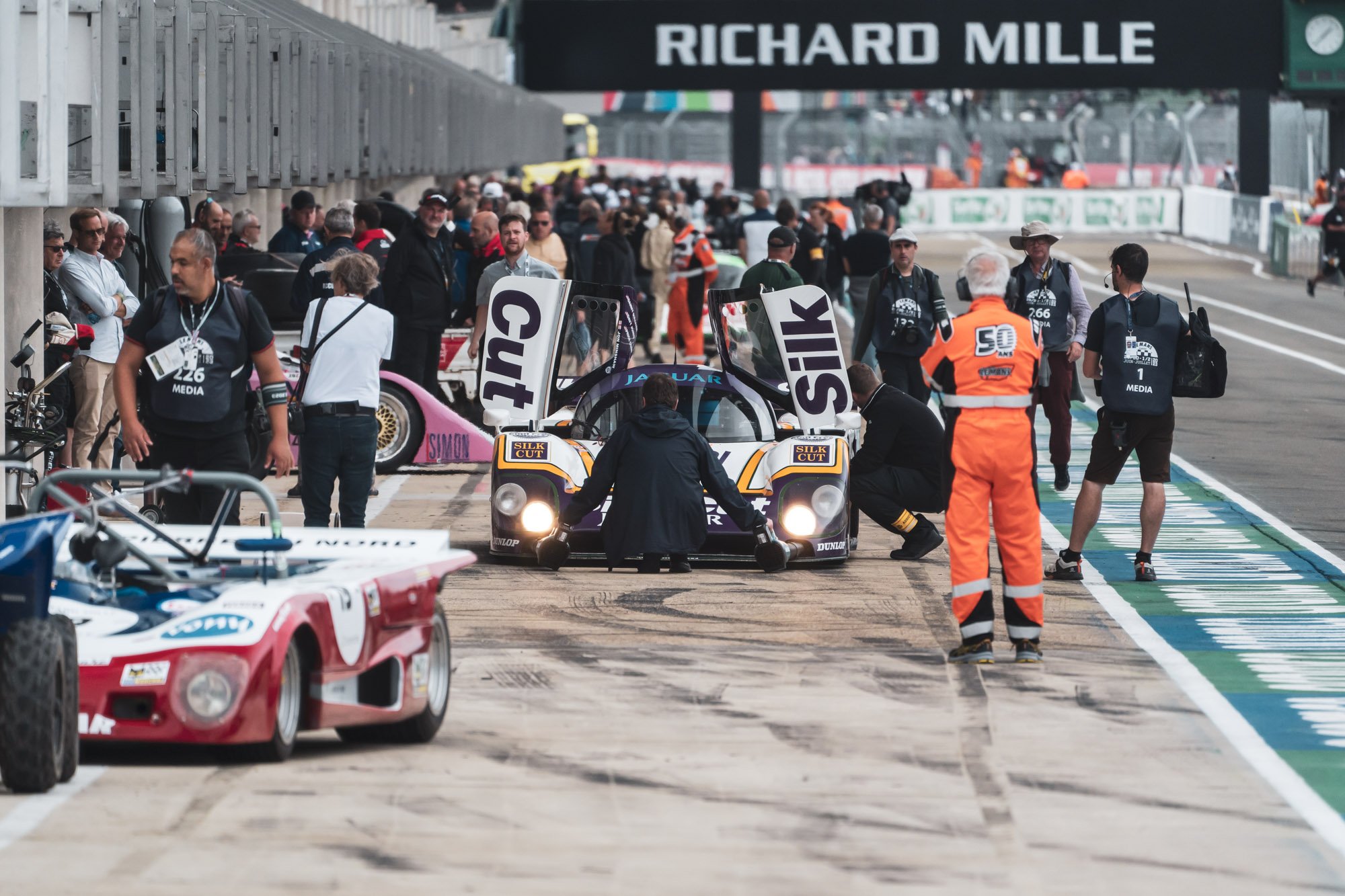
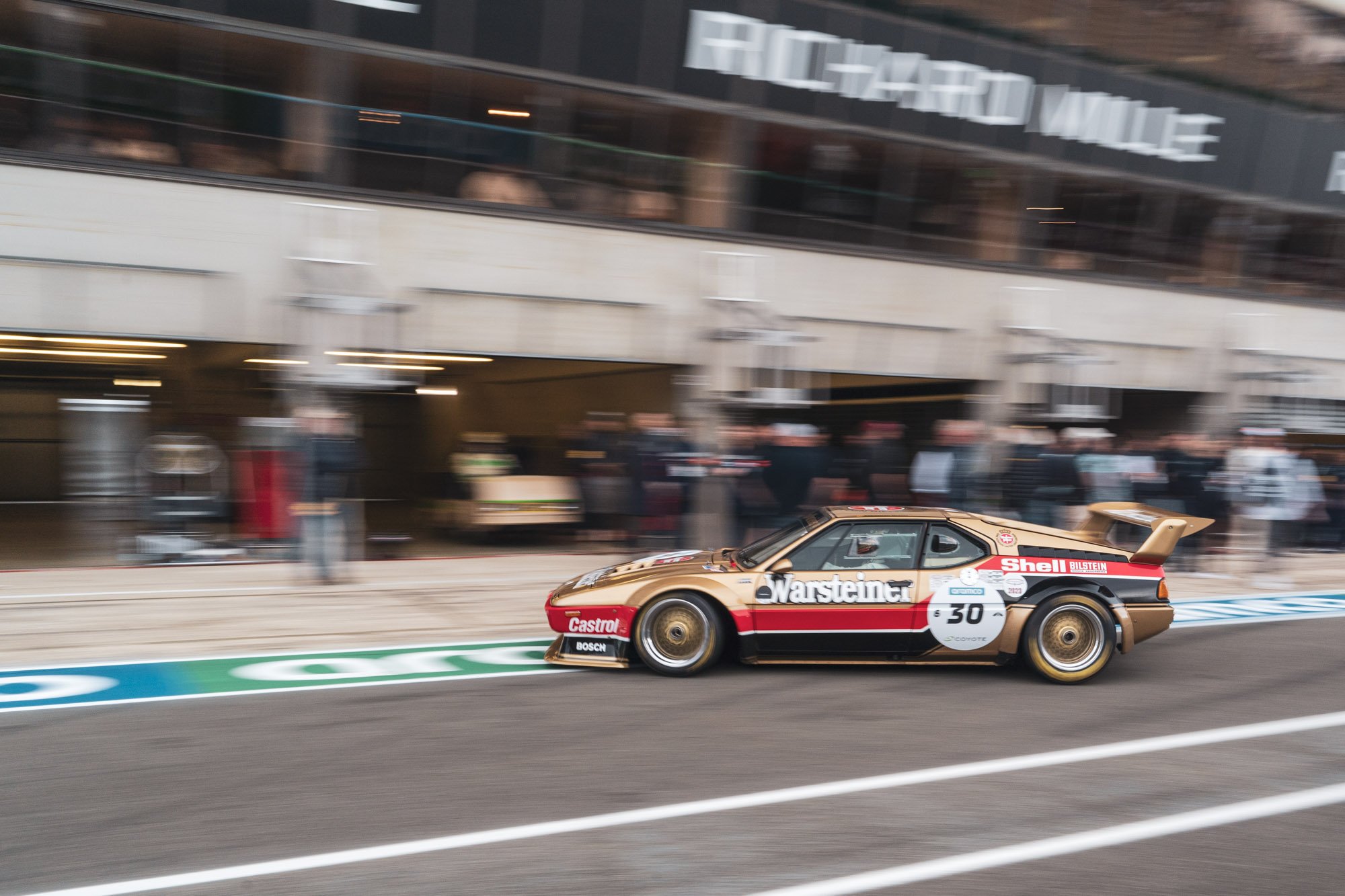
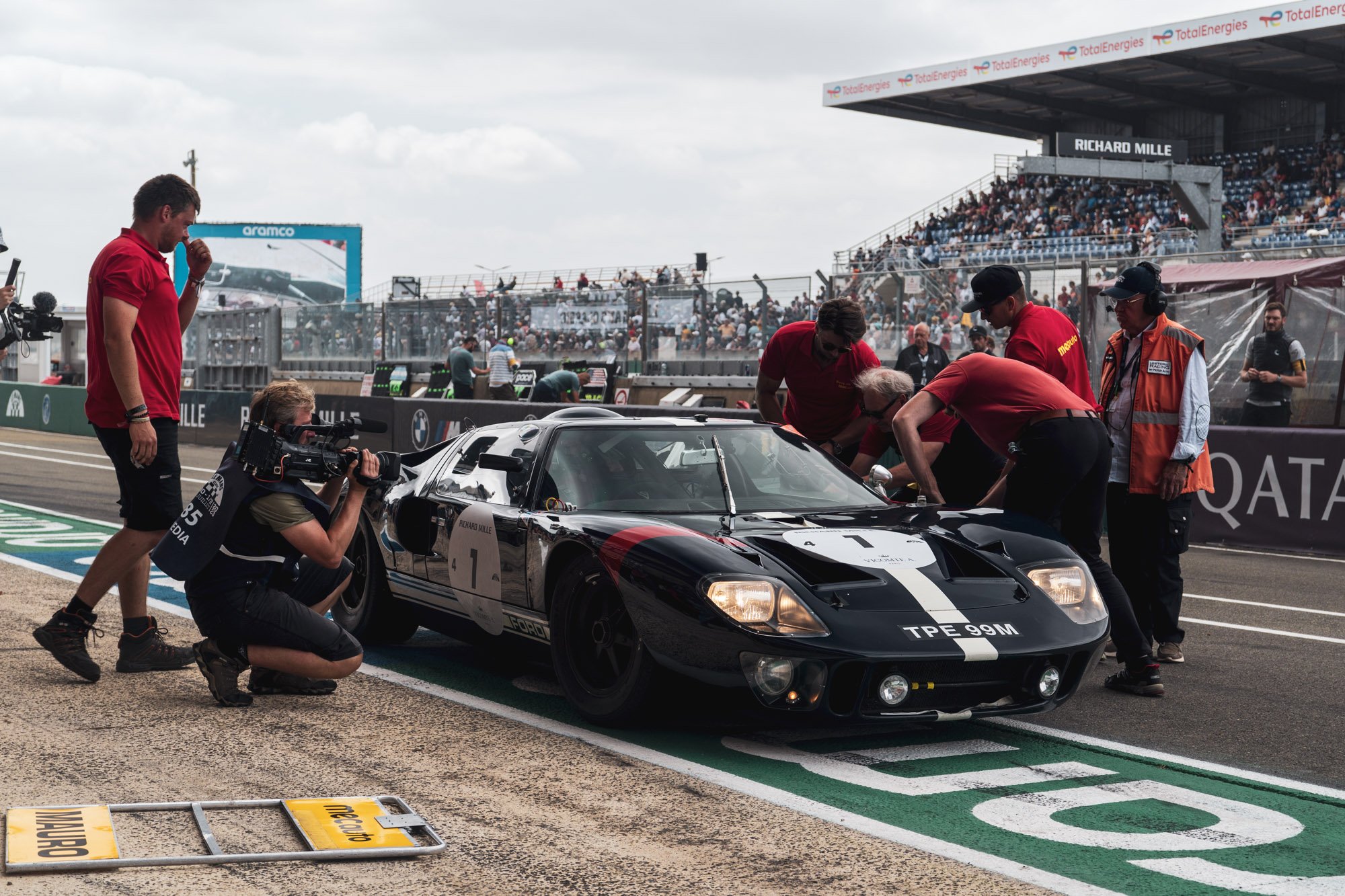
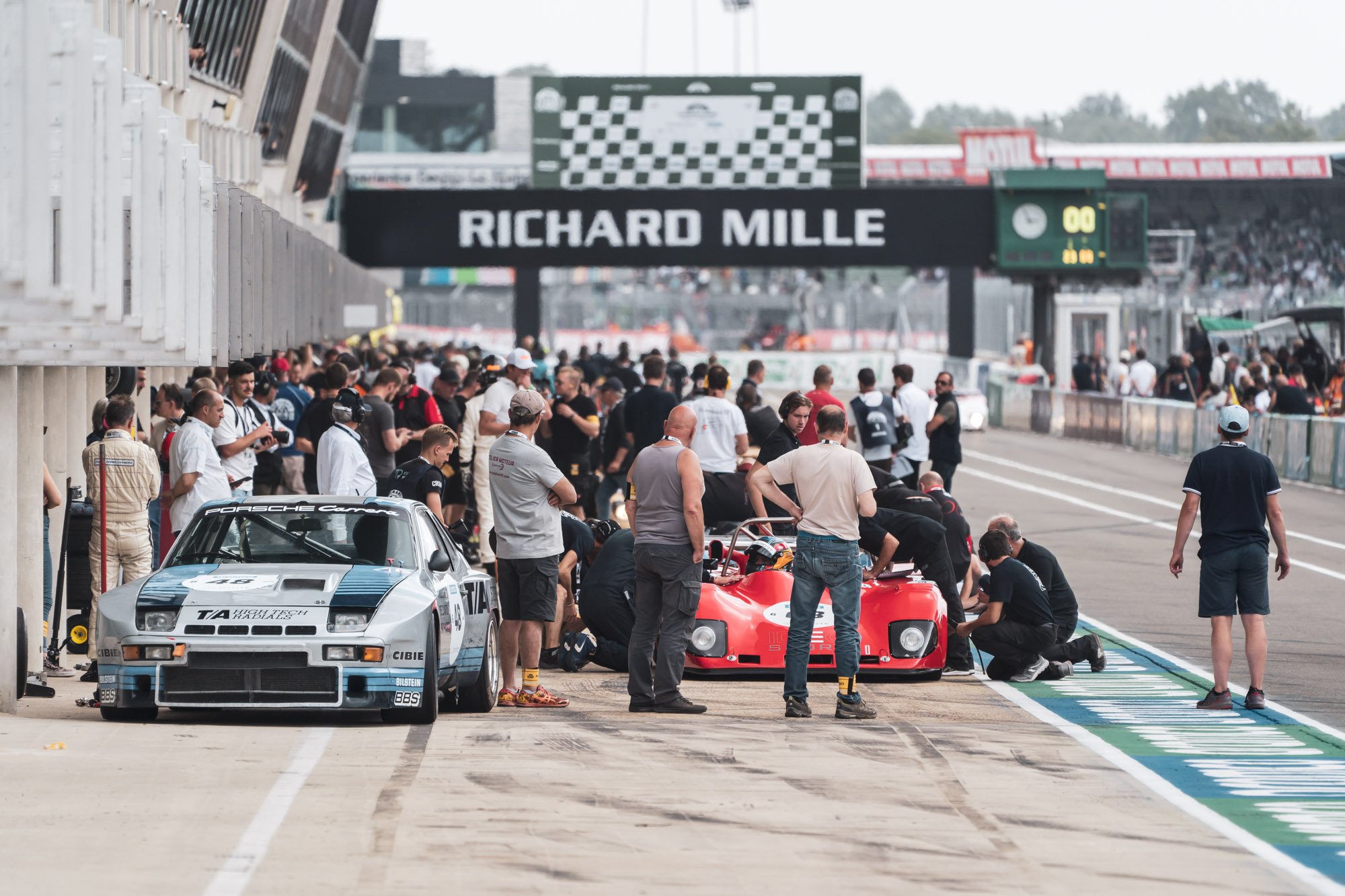
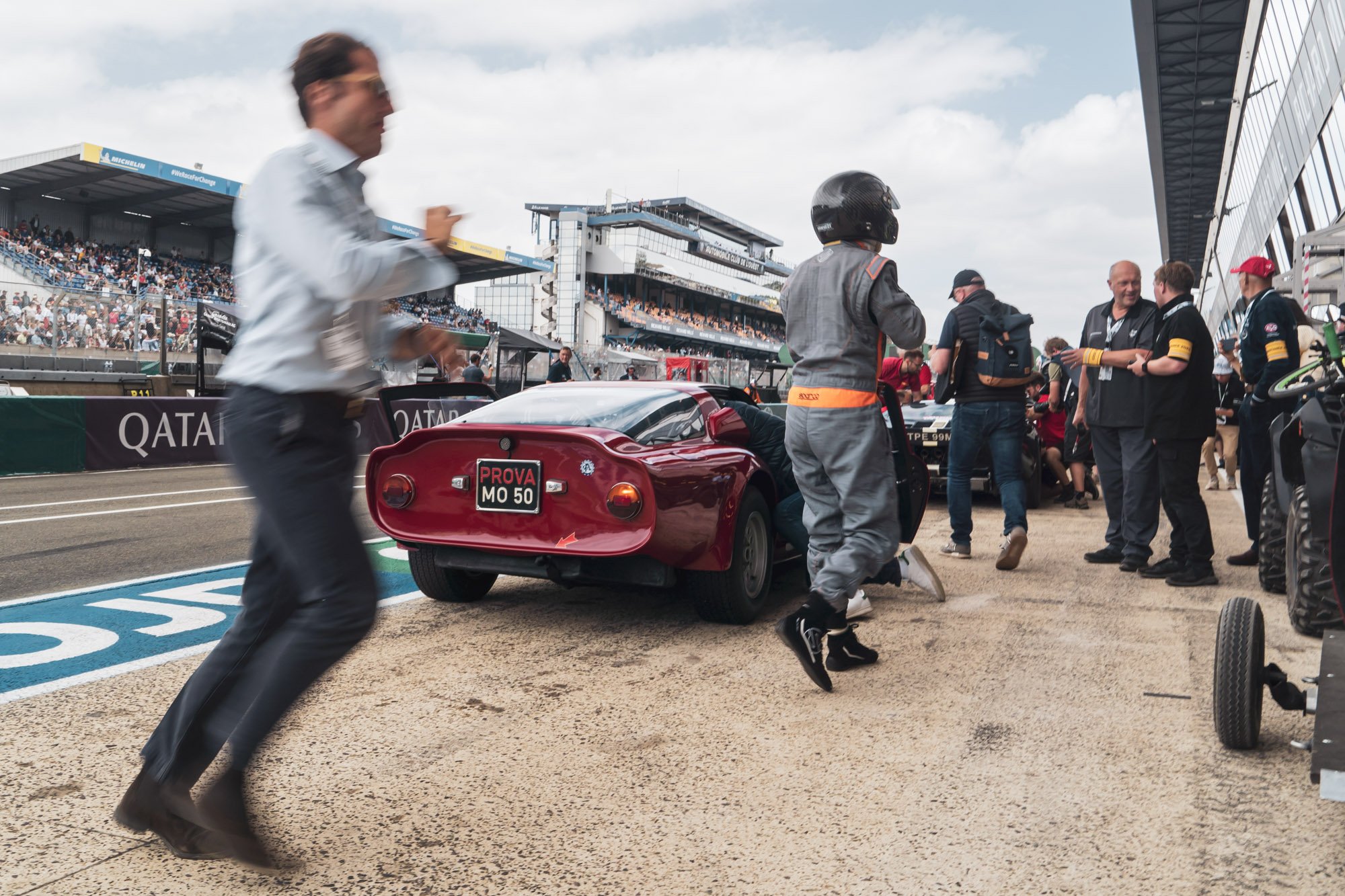
I took some time to wander around the pit lane, enjoying my insight into the back of house of what probably is the most famous race of them all. I observed how the race machine works – whilst one plateau (or grid, if you prefer) is racing, other cars are allowed in the pits to fill up their tanks through an authorised fuel provider. Unless something extraordinary happens, usually mid-race, each car pitted. Some teams were fixing problems, others switching drivers, some… might have needed to retire the car. Pity, but with some cars being as old as the race, it was more than understandable. However, what impressed me the most was how smoothly the boxes were swapped between teams, inter-race. Organisational masterclass!
It is important to note that Le Mans Classic format differs significantly from the 24h race for modern cars. Instead of a continuous, day-long pursuit of the trophy, vintage bolides partake in a qualifying and day-practice, free session at night and three races of approximately 45 minutes each. These sessions are planned between Friday and Sunday. To me, such a solution not only lifts the already significant pressure on the old-timers, but also provides spectators with a constant show! Just imagine a change of play every hour or so, restarting emotions through a different pack of around eighty cars. How exciting!
RACING LIKE THERE IS NO TOMORROW
Don’t be deceived! At Le Mans Classic neither the age nor the rarity and corresponding value of the partaking racers prevent their pilots from going pedal-to-the-metal. The average race speeds nearing 170-200 kmph for most of the Plateaus are there to prove it. Cars are thrown into the corners mercilessly, fought wheel to wheel with no room to spare. Sometimes, it results in a spectacular overtake, sometimes ends up with picking up a huge cloud of gravel from the sand trap.

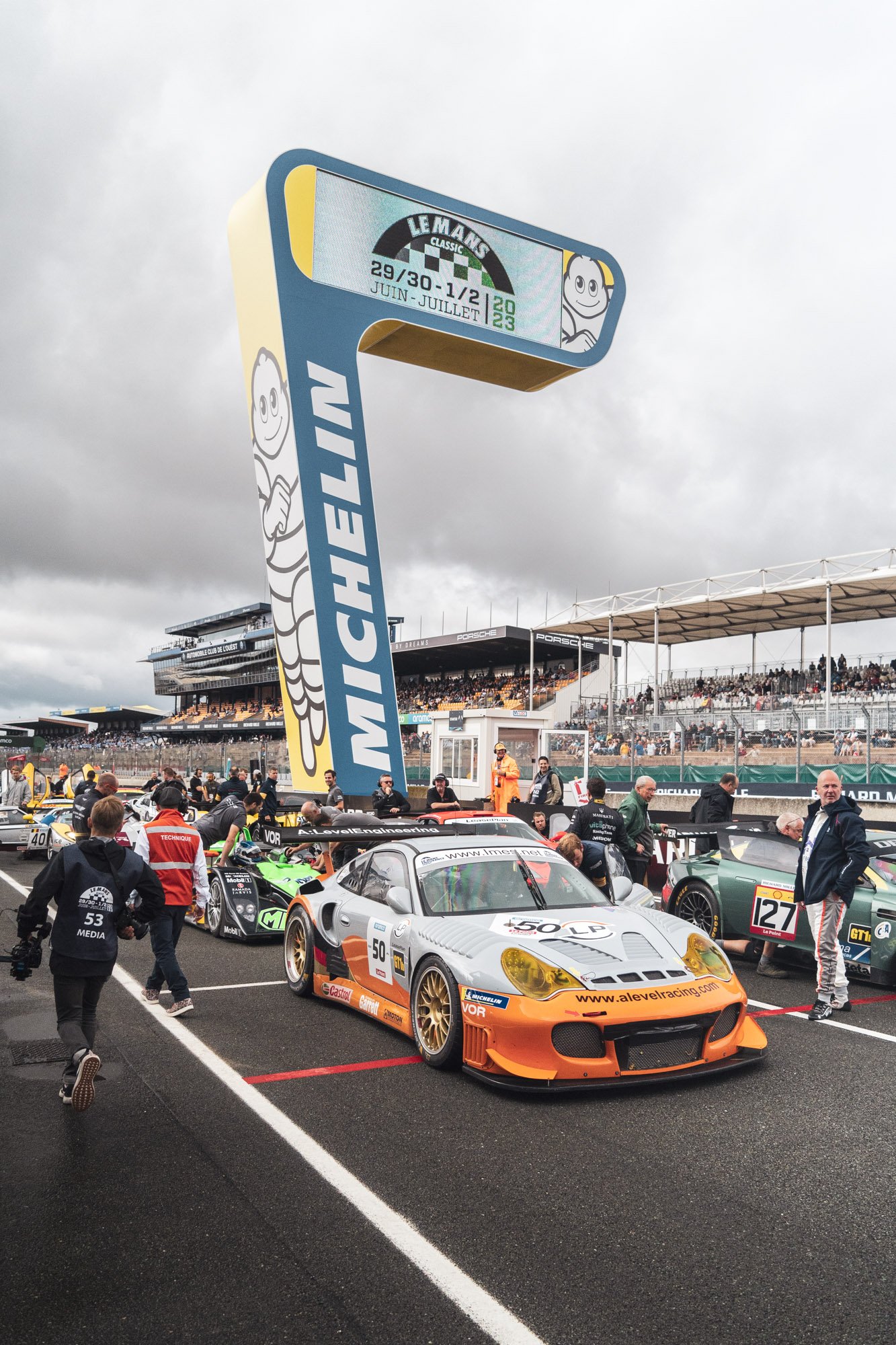

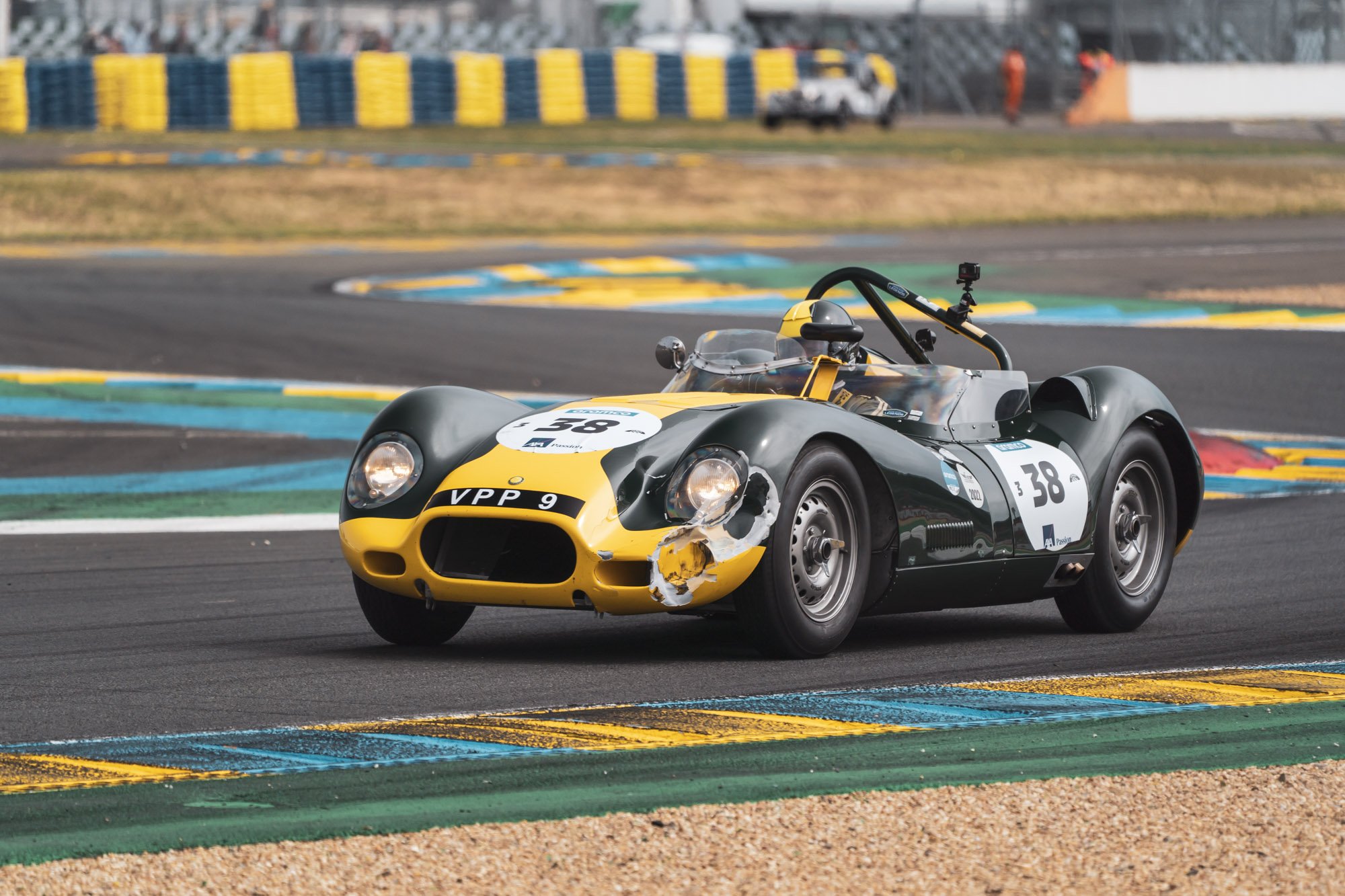
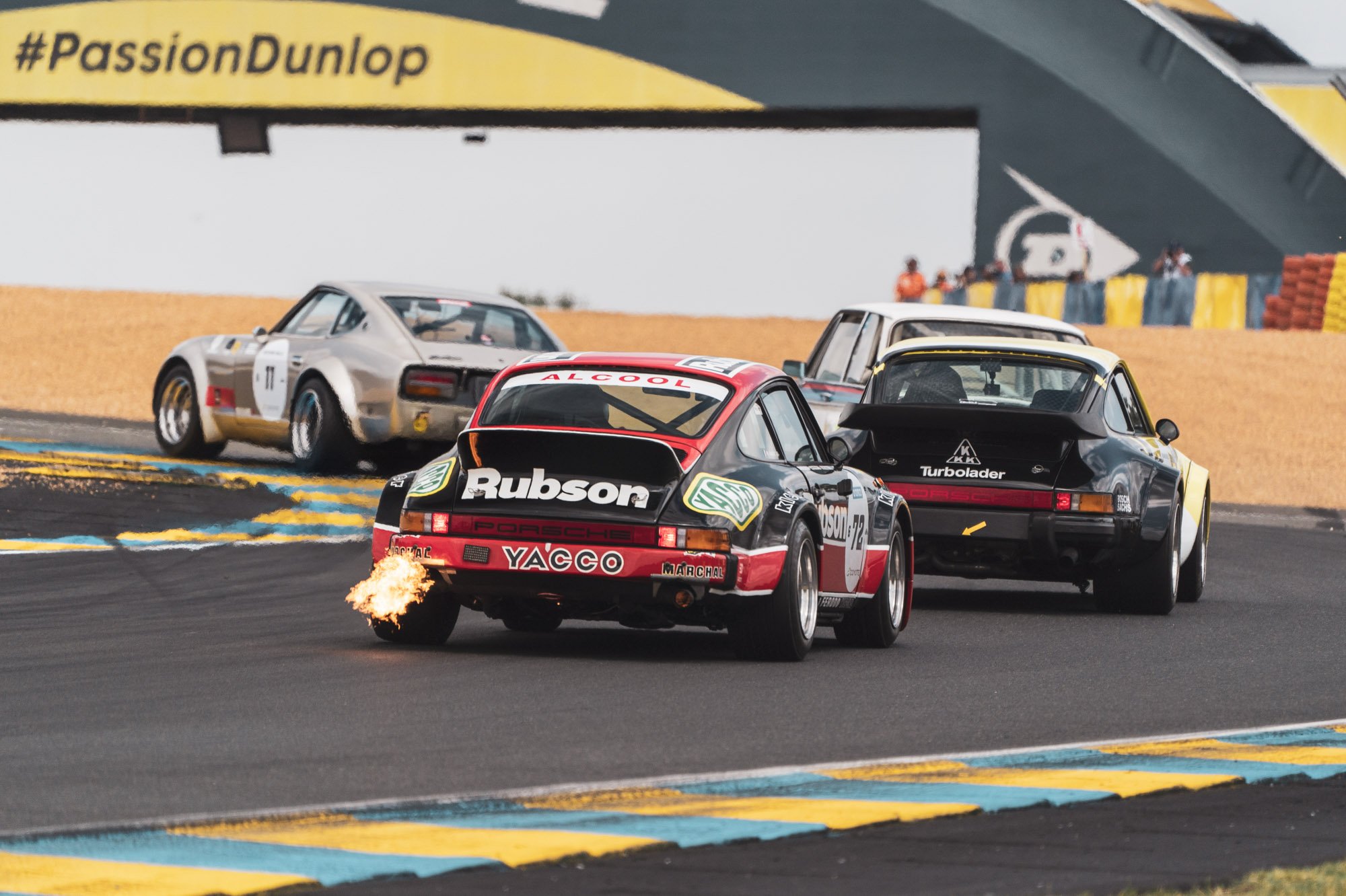
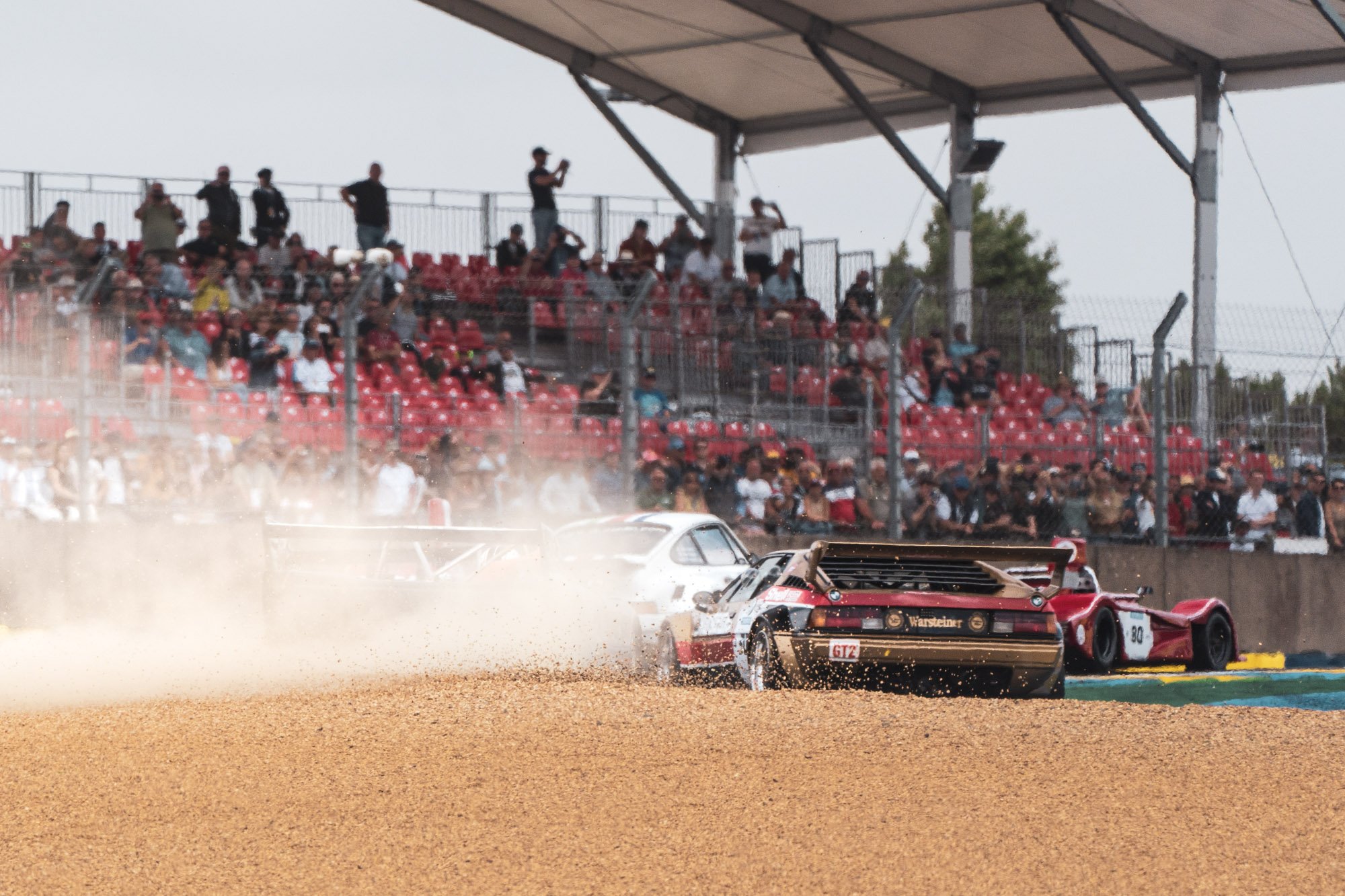
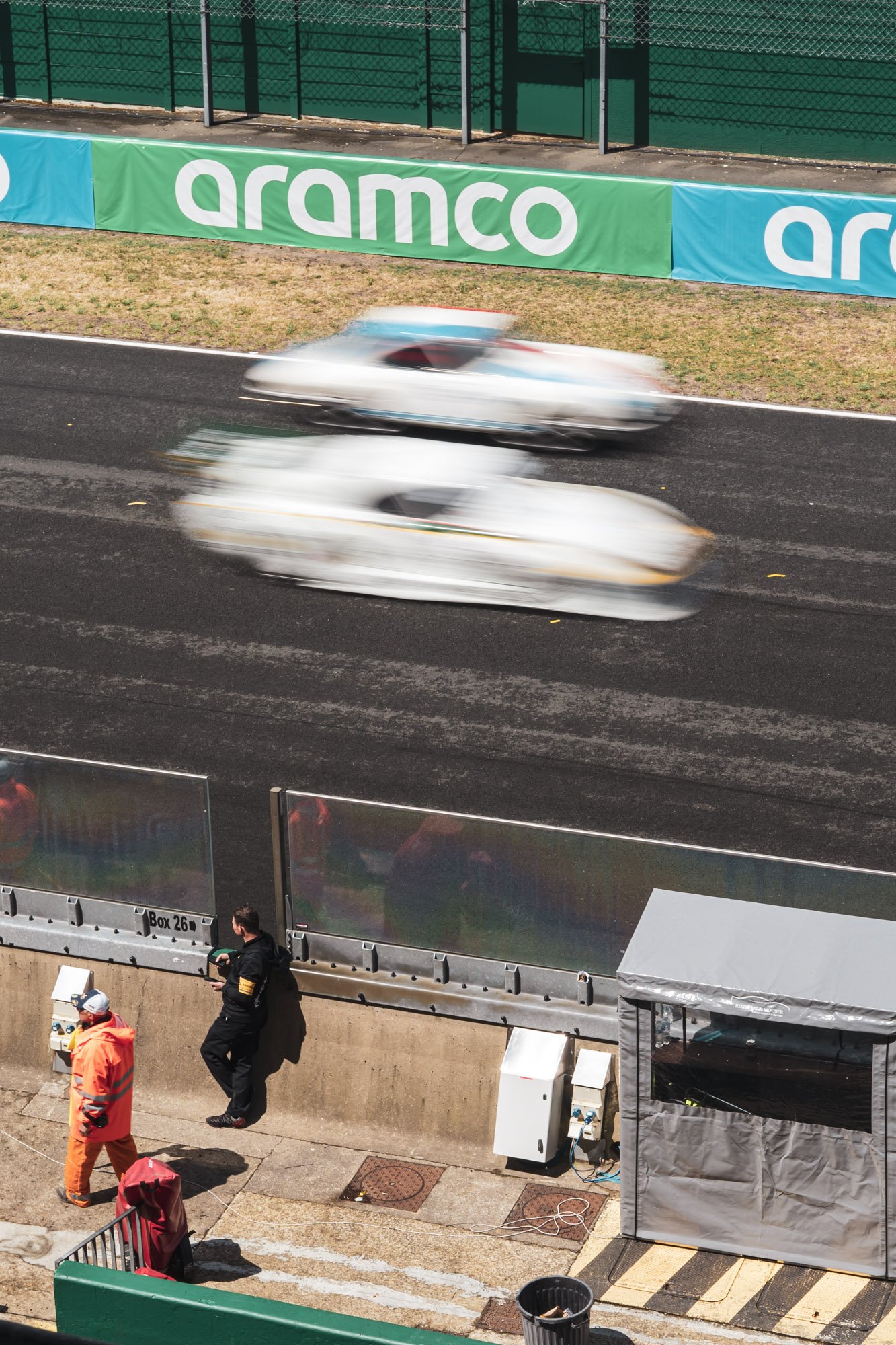
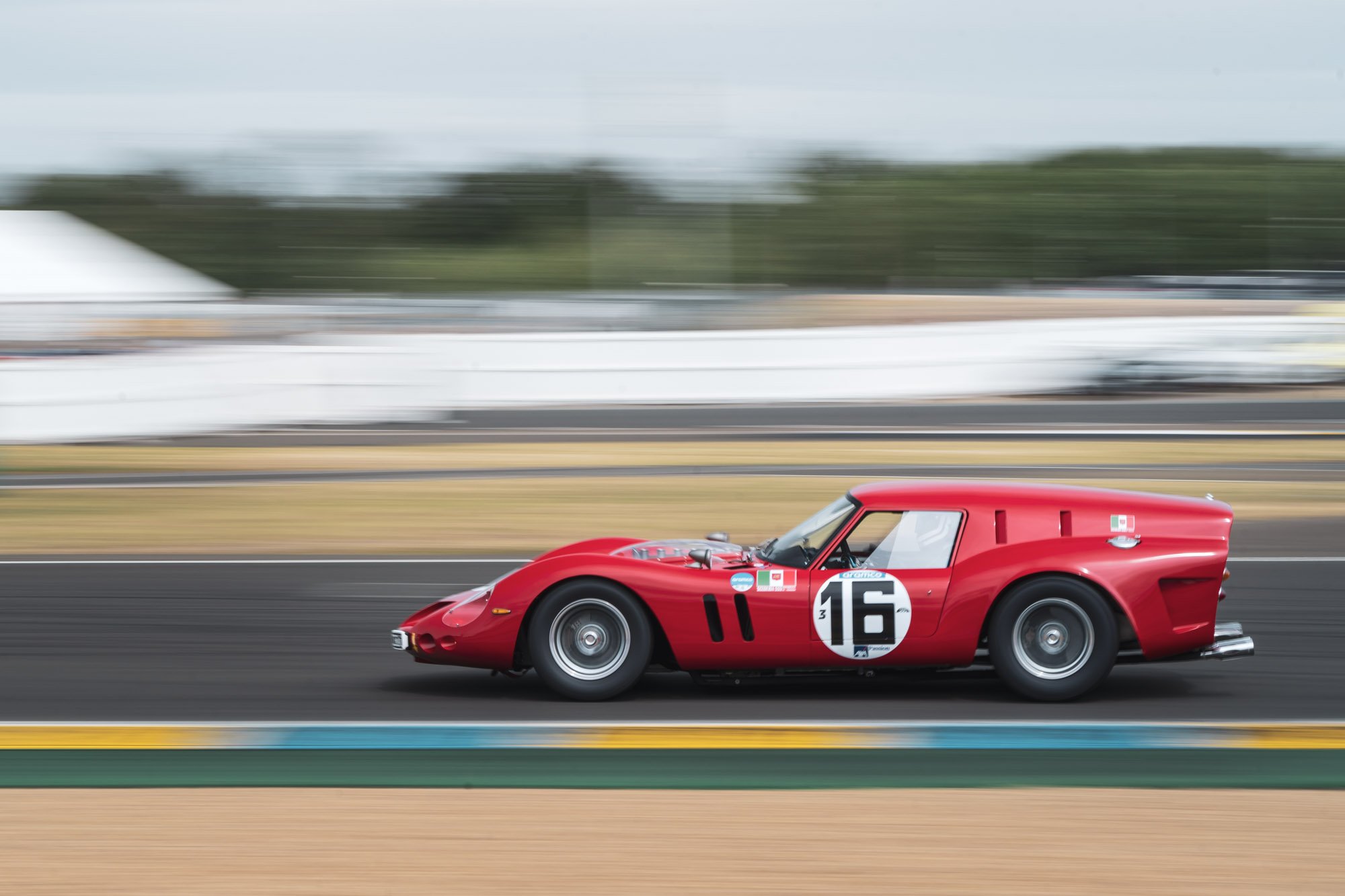
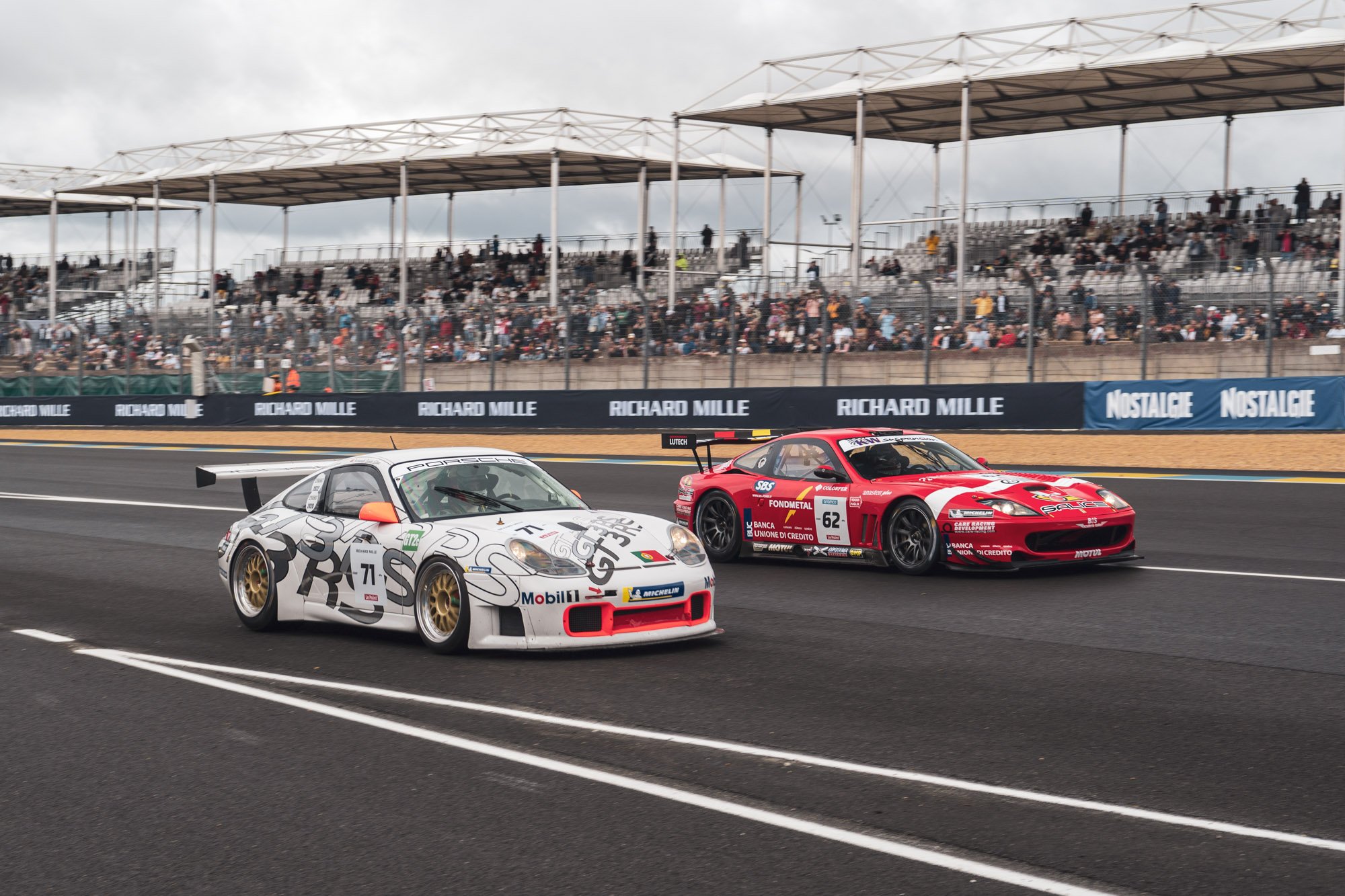
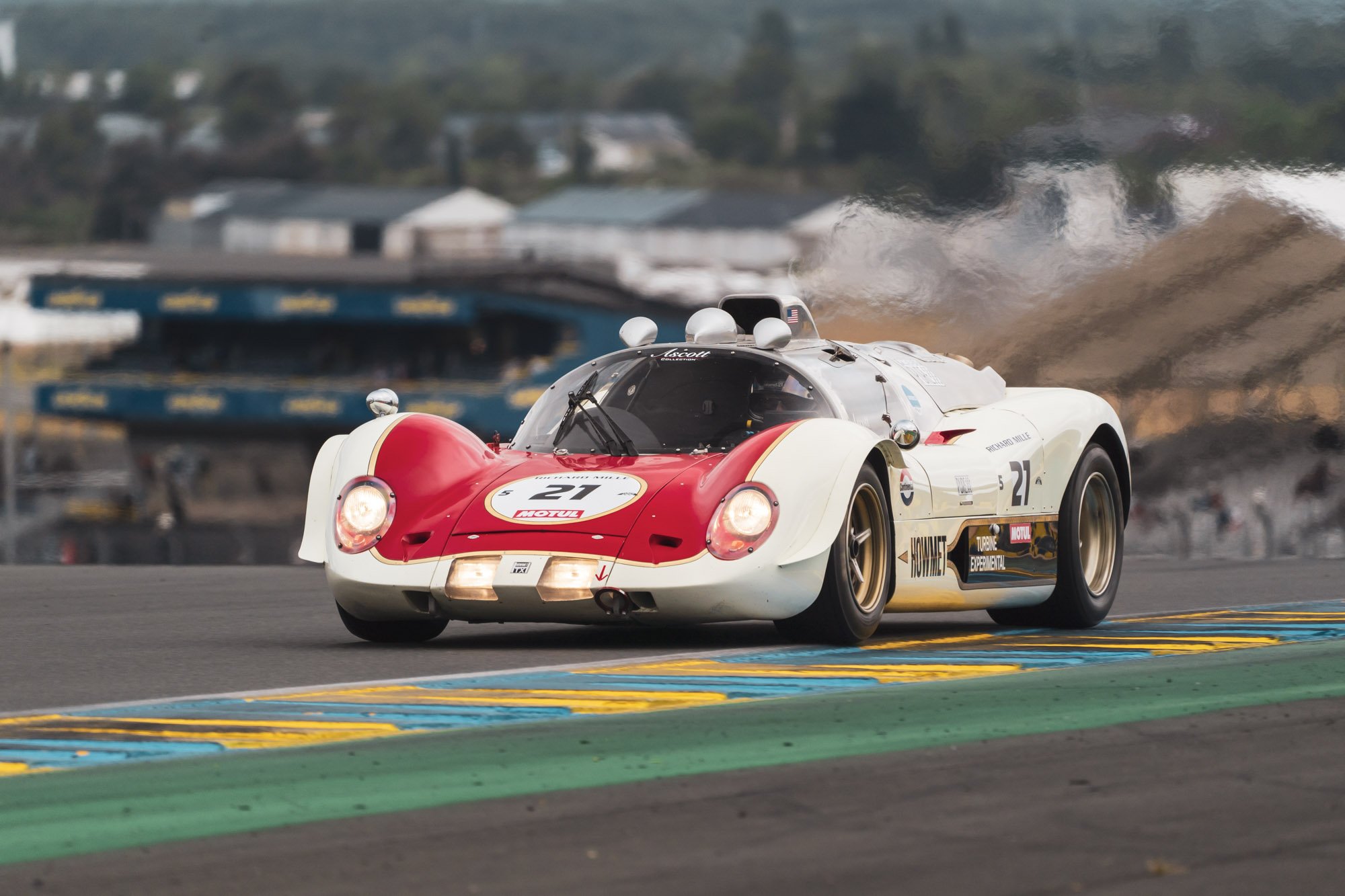
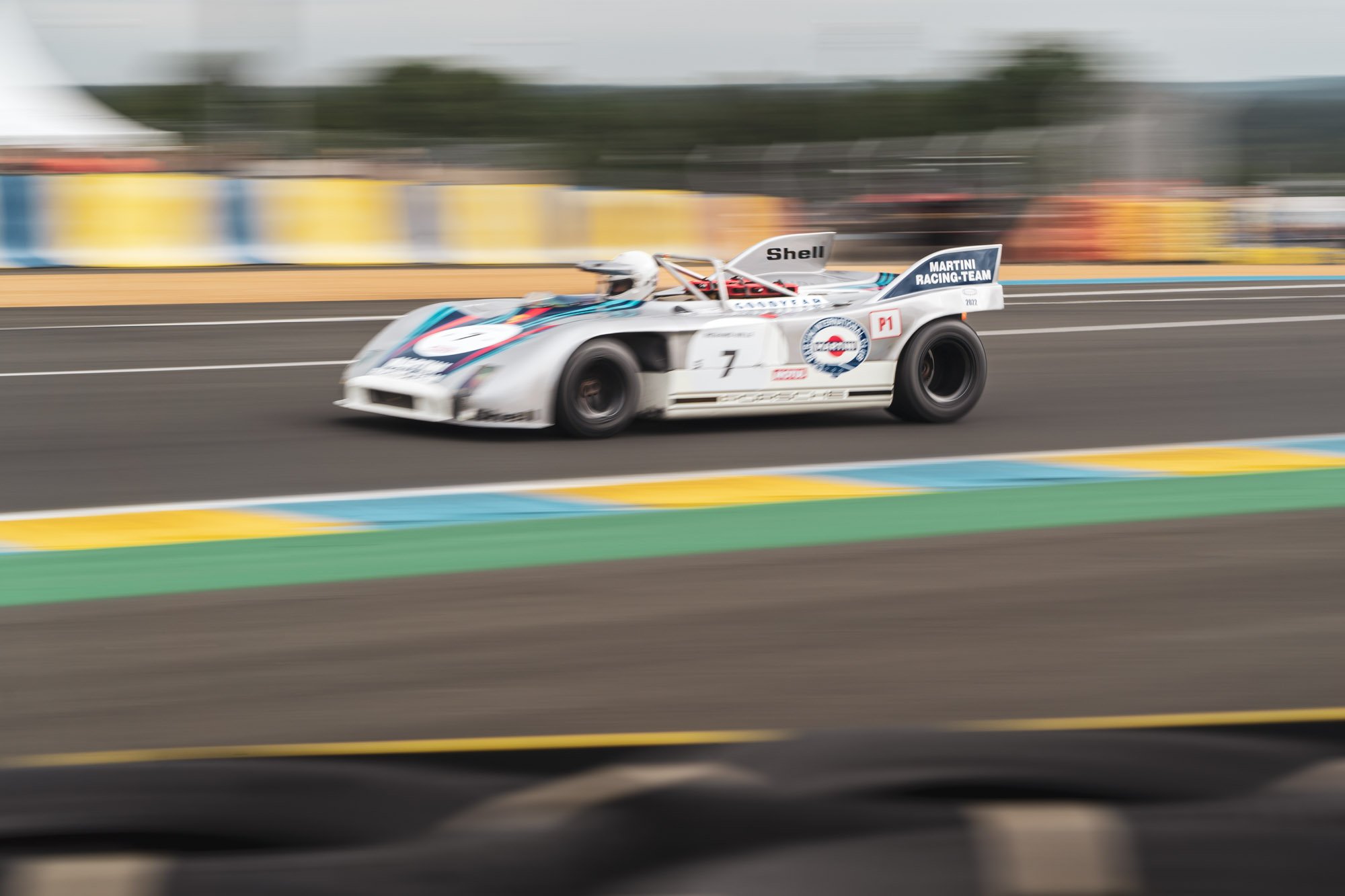
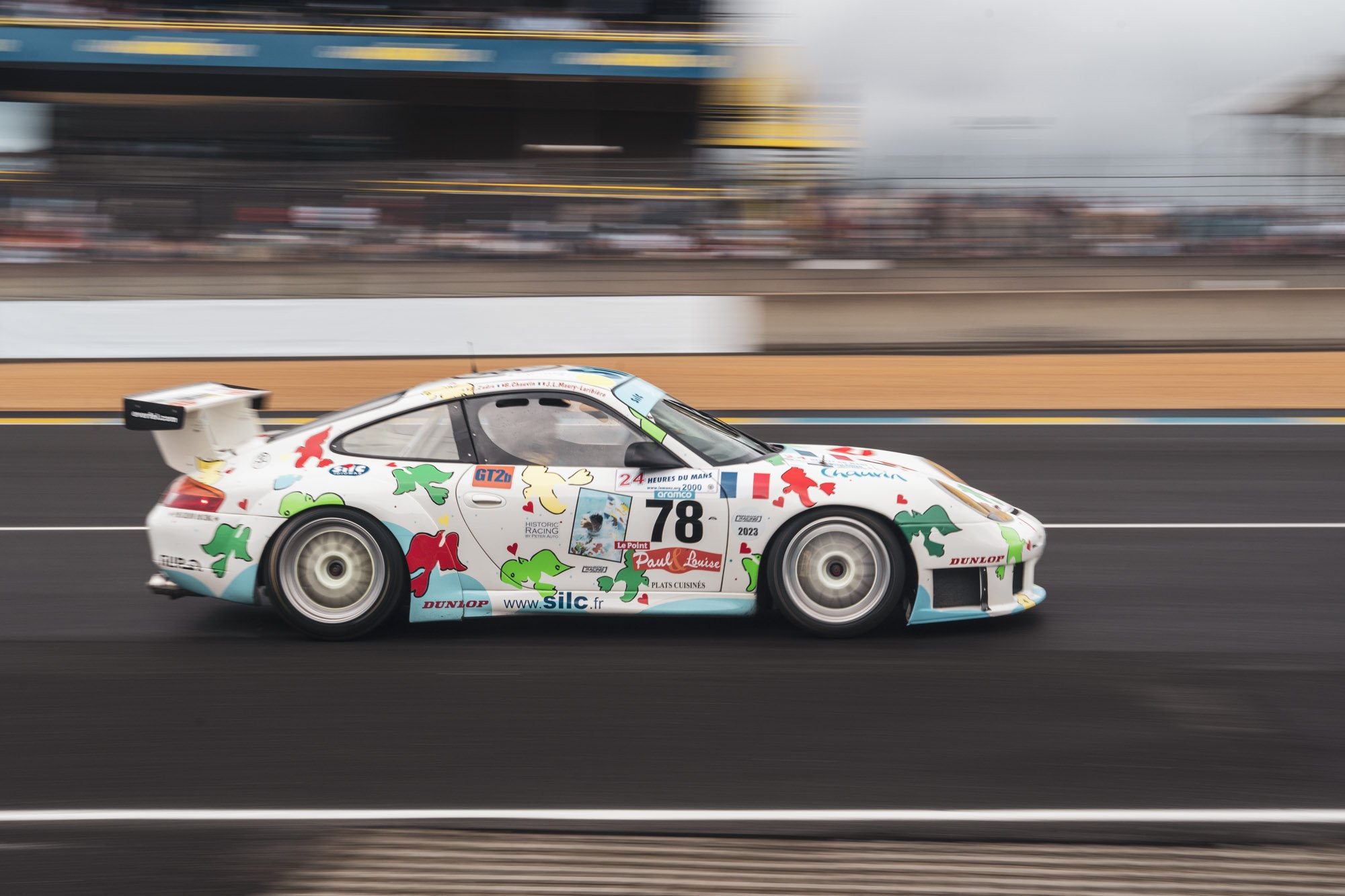
The show is at its best especially with a neutralised stake during the very first laps or right after a safety car… and yes, there were incidents. These Plateau 6 cars fighting at the Dunlop Chicane serve as a prime example, and you can tell for yourself which moment is the most impressive. Is it the tight rejoin of the open seater after overshooting the turn? Or maybe one of the downshift exhaust flamethrowers performed by the BMW M1 Procar or the Porsche 911 SC Group IV? One thing is for sure, the heat was on… sometimes quite literally!
CIRCUIT DE LA SARTHE DOESN’T SLEEP
If daytime was exceptional, how would I ever be able to describe the atmosphere when the sun went down? Well, what happened at dusk to me was sheer sorcery, dark magic if you like. When on Friday evening dark clouds covered the paddock, every nook and cranny of it being detail-lit with cross-taped headlights of incoming race cars. Ferrari 365 GT/4 Daytona Competizione, De Tomaso Pantera Group IV or Porsche 910 for a night lamp? Yes please!
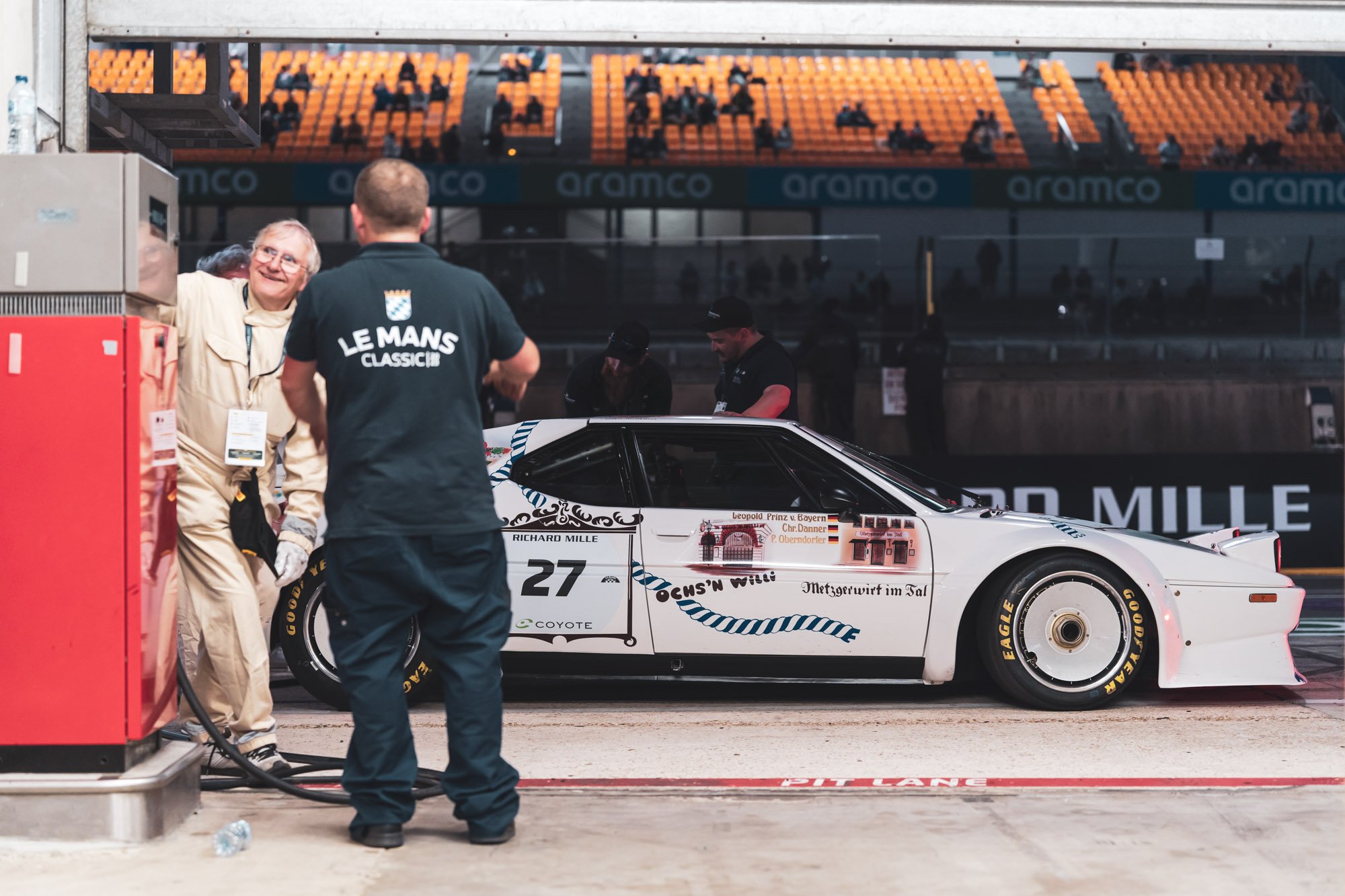
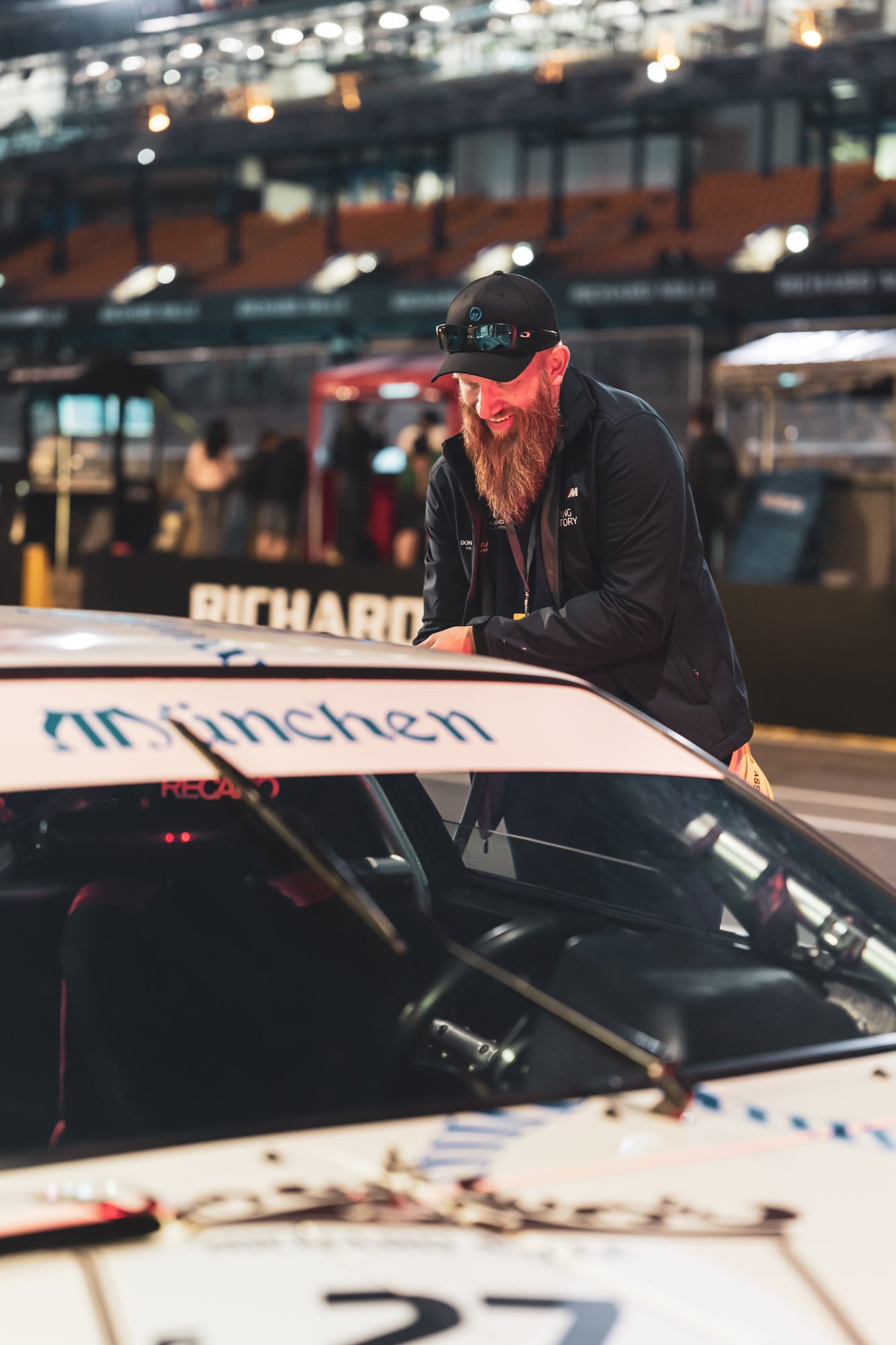
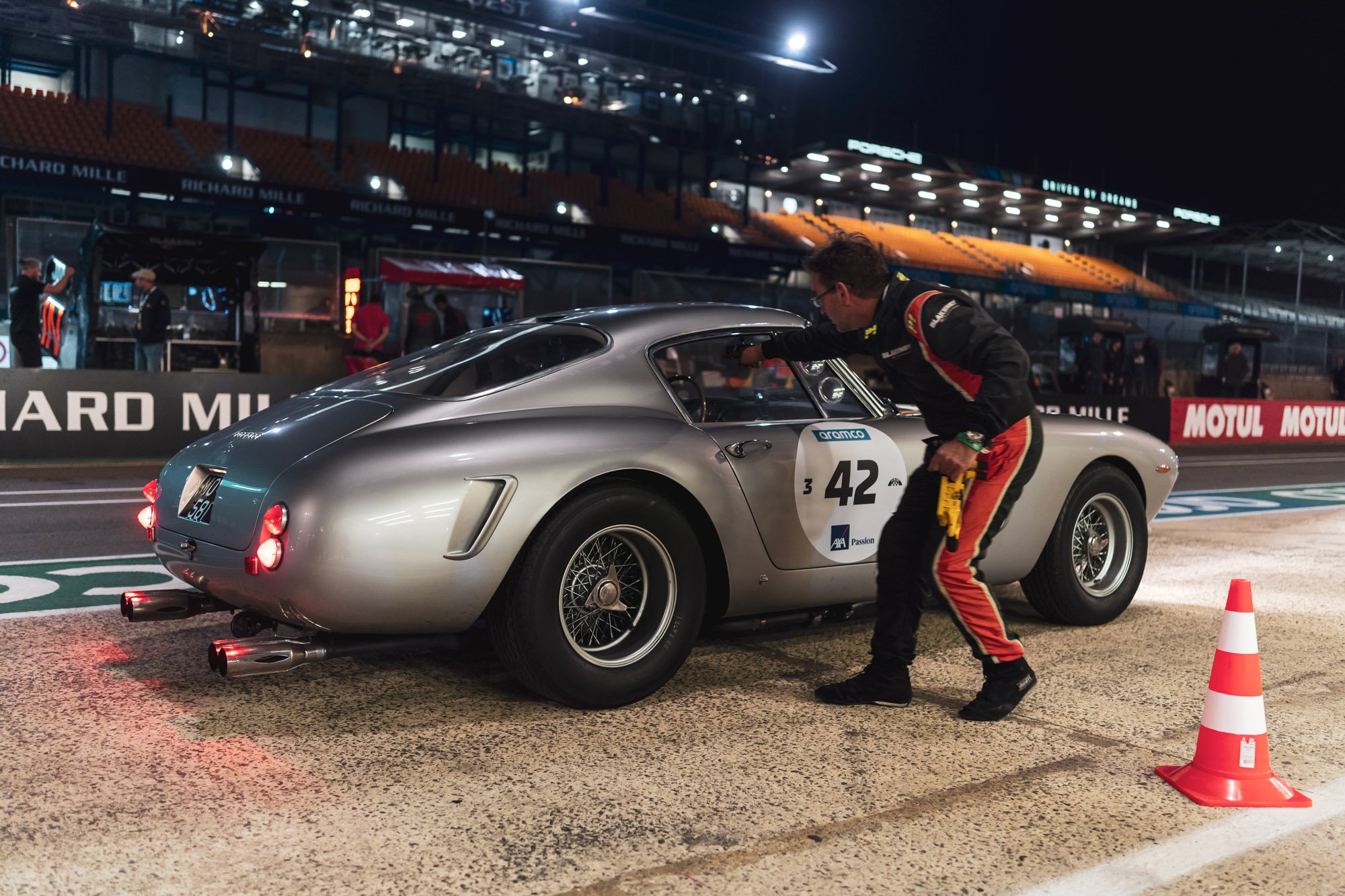
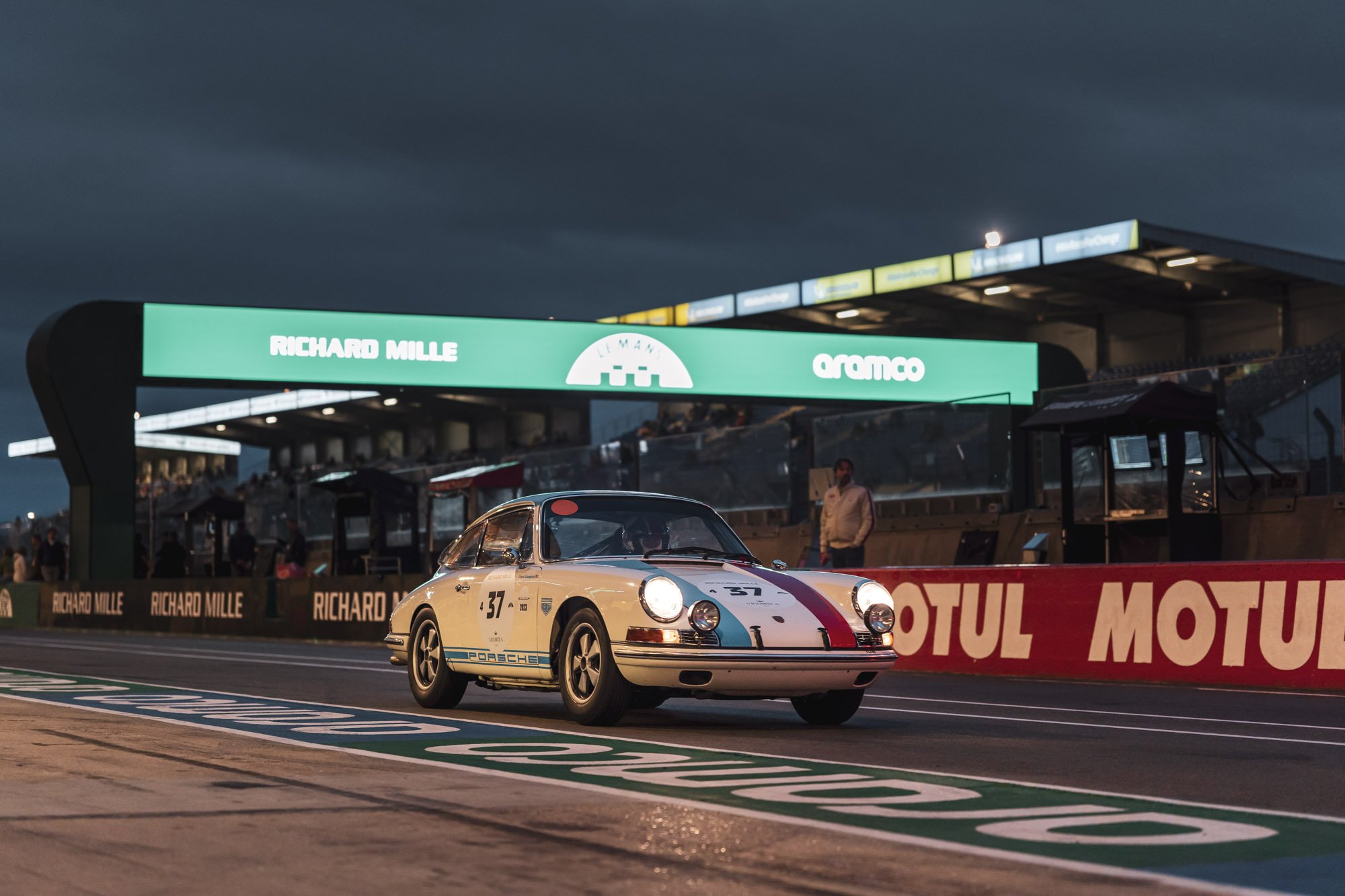
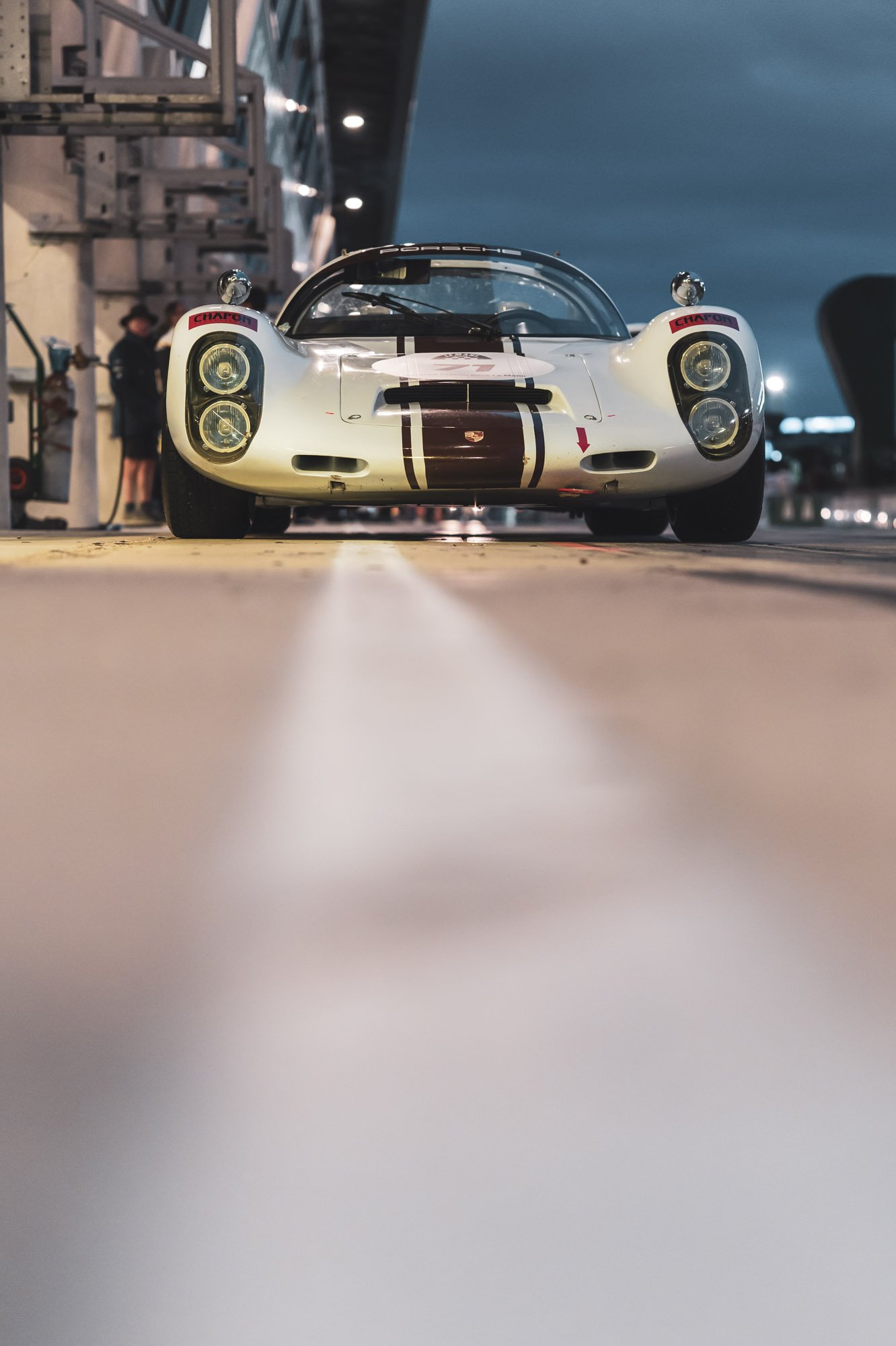
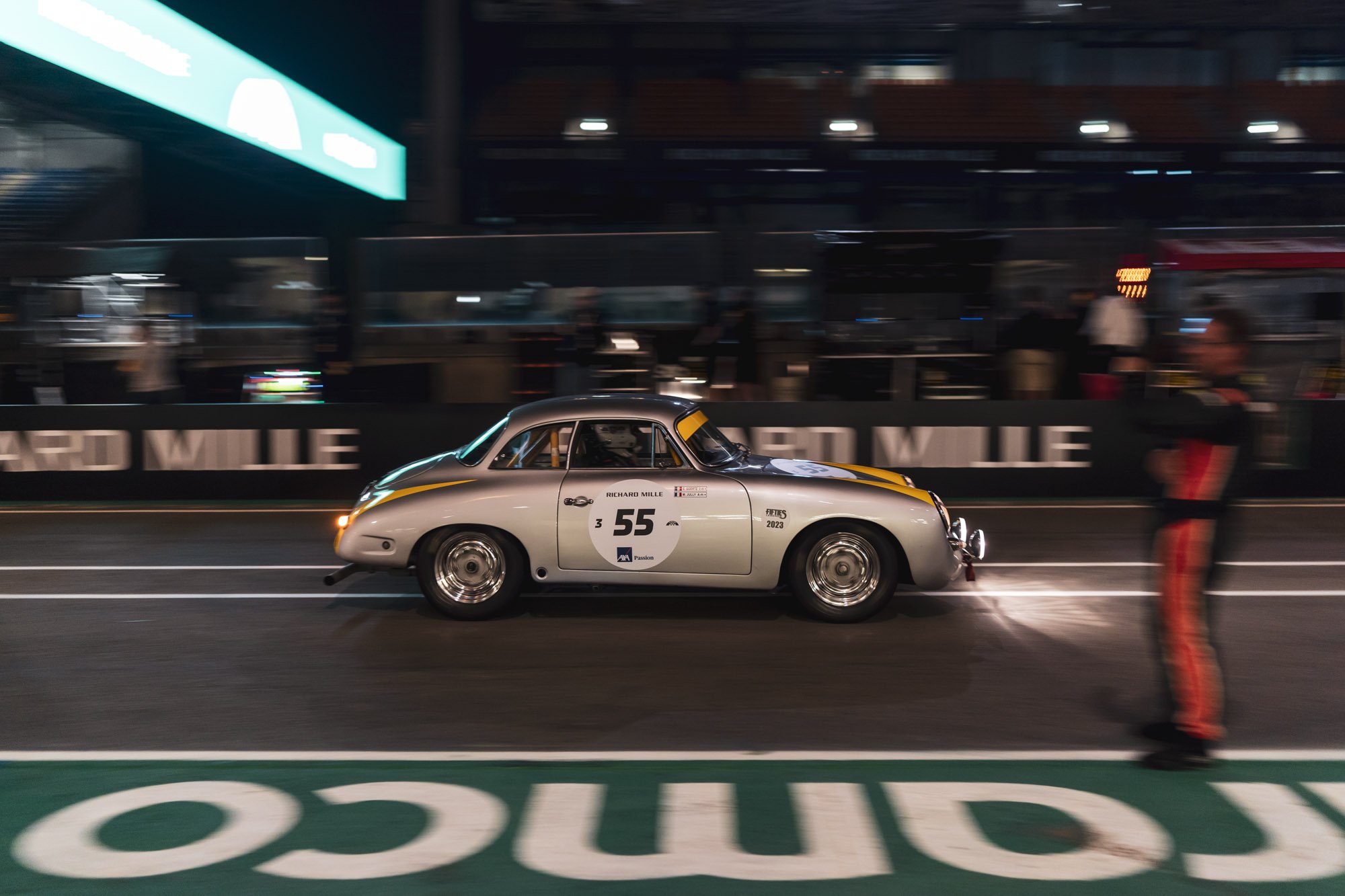
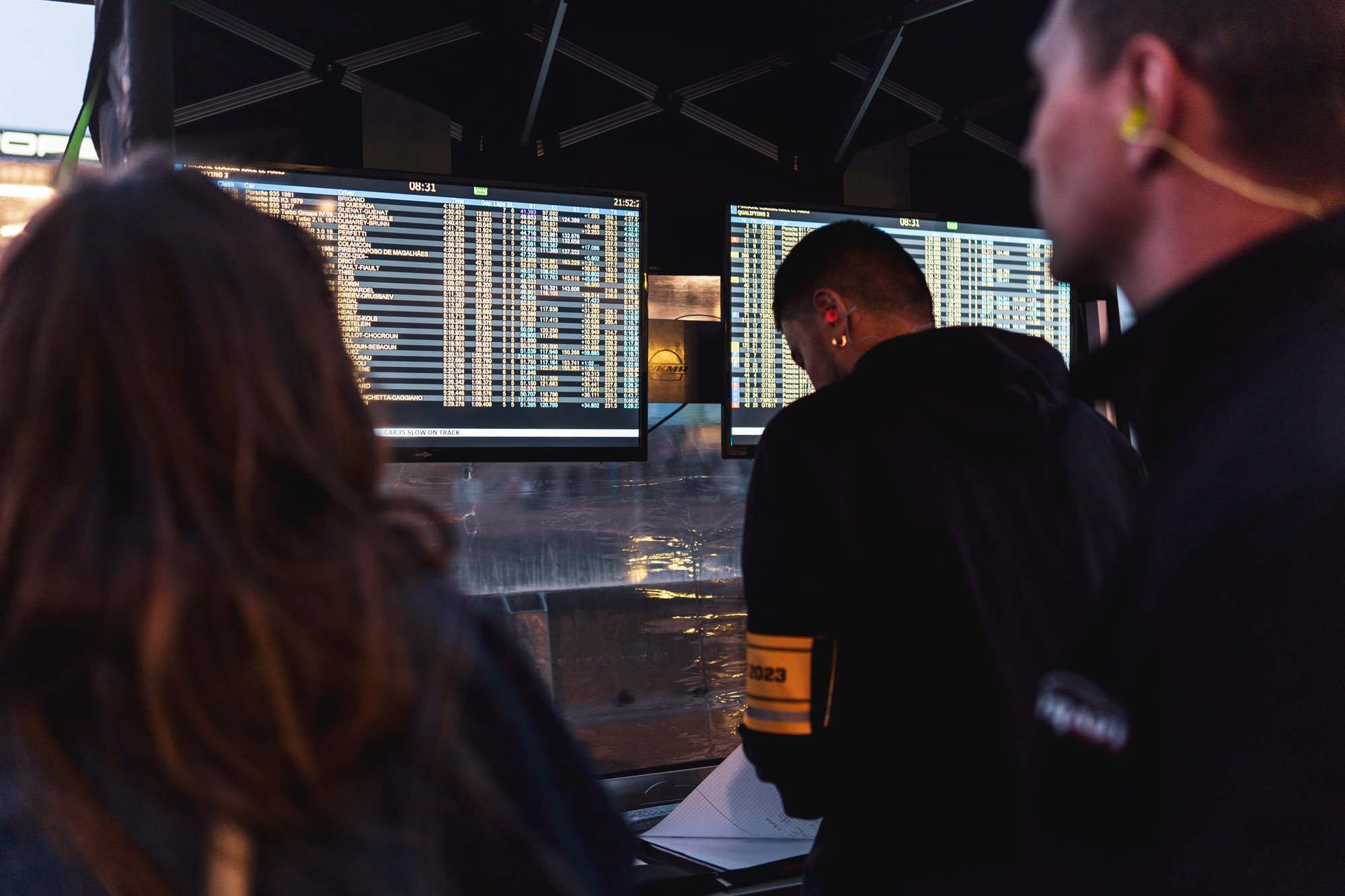
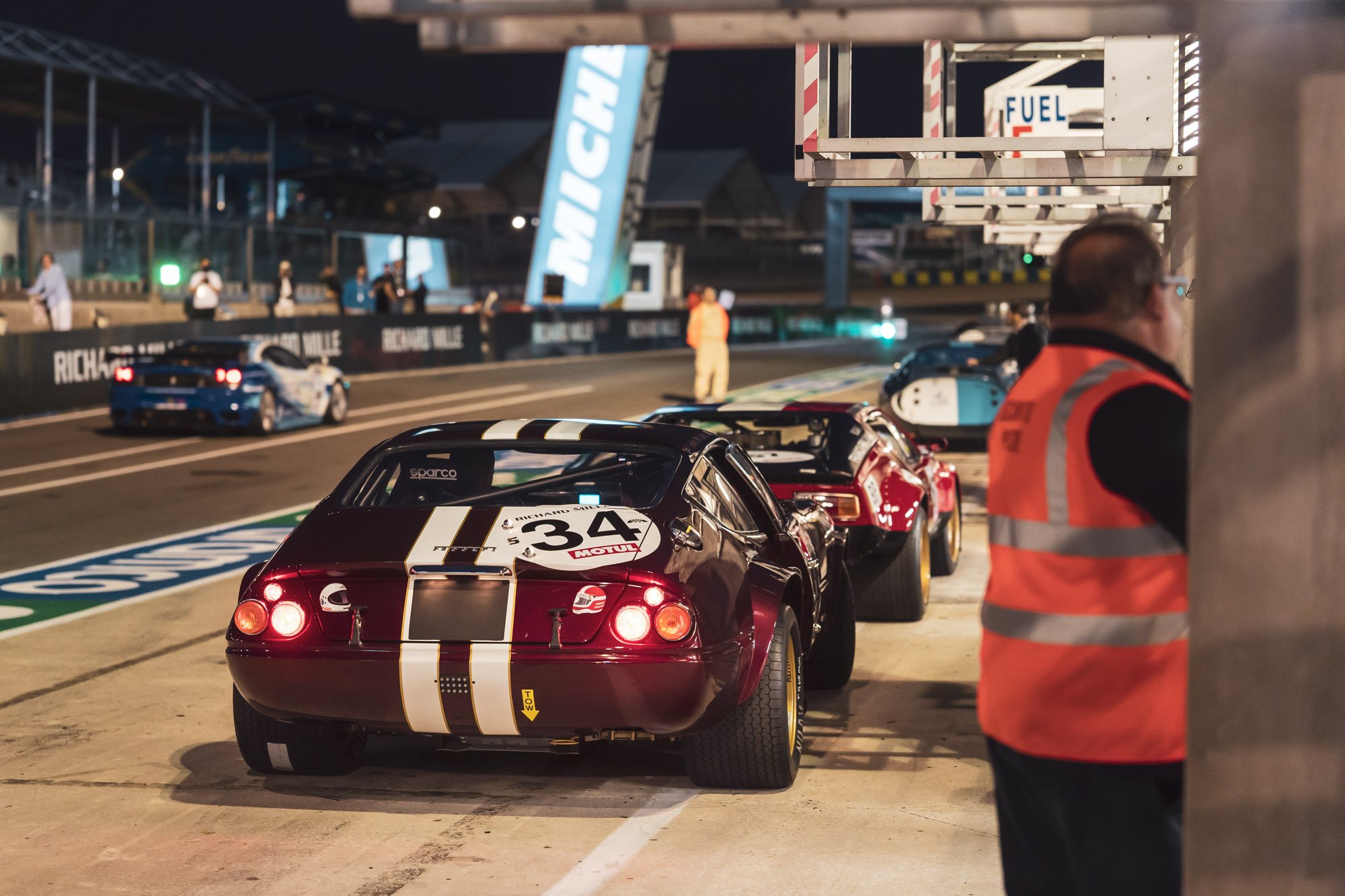
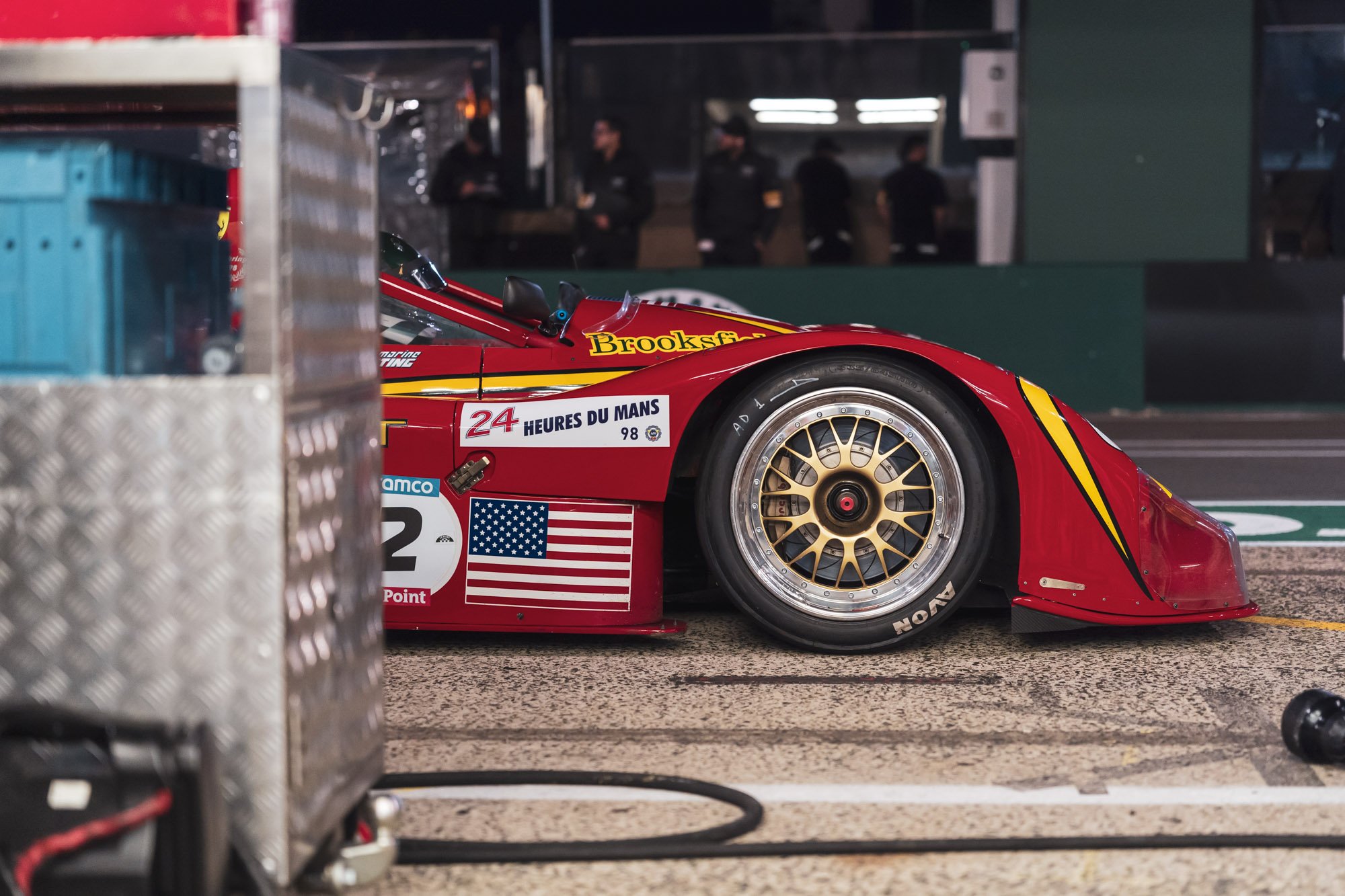

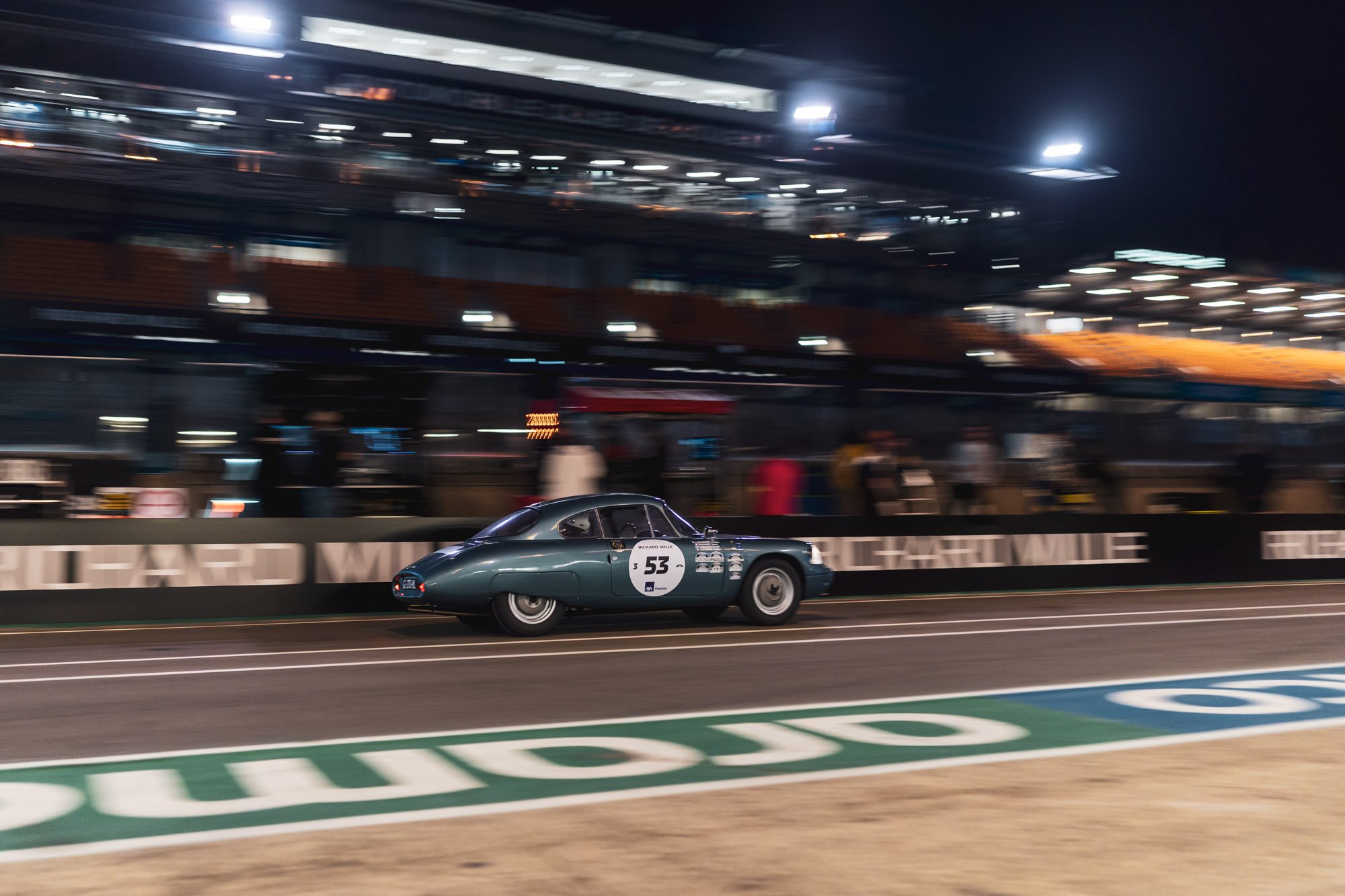
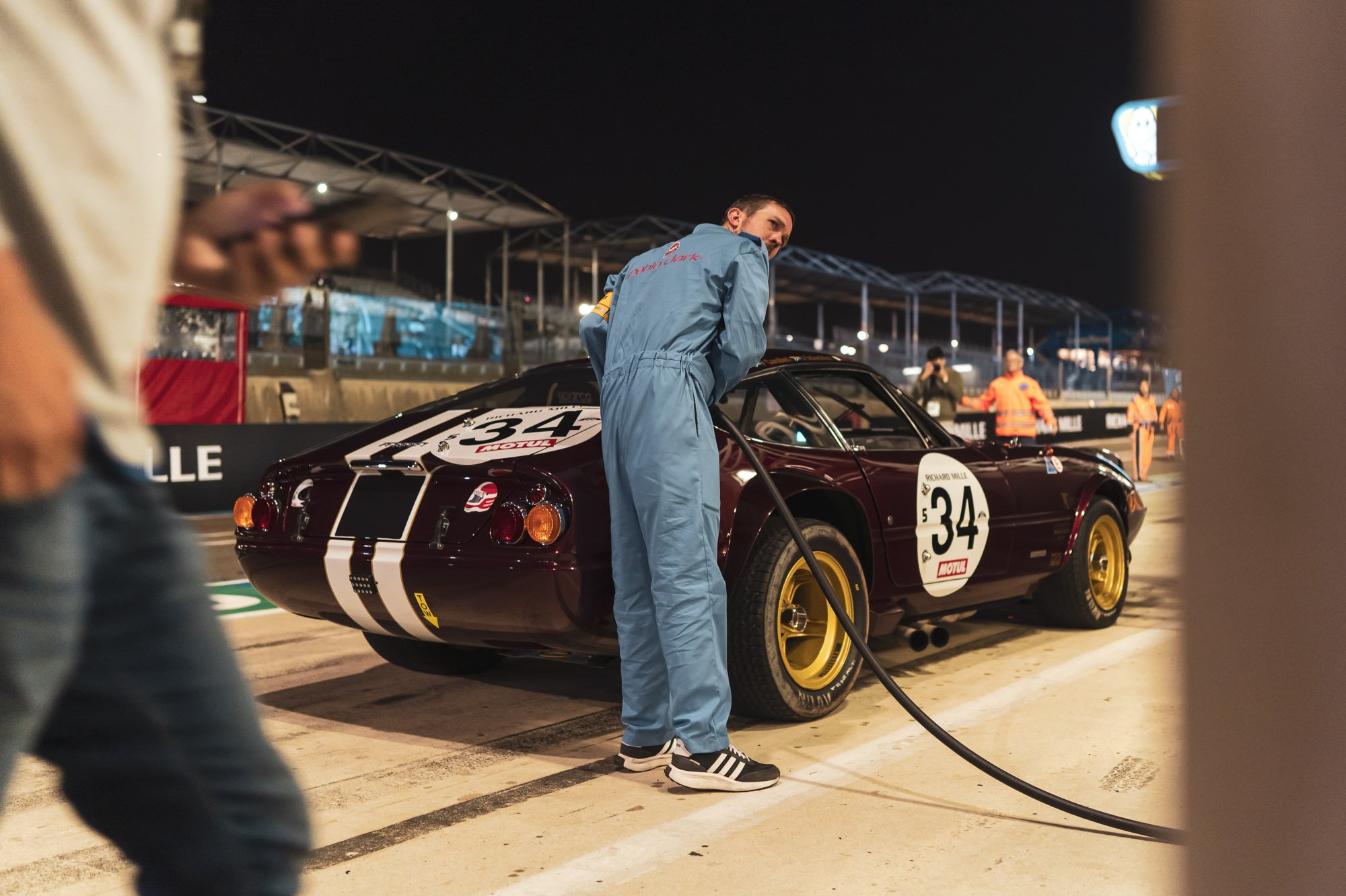
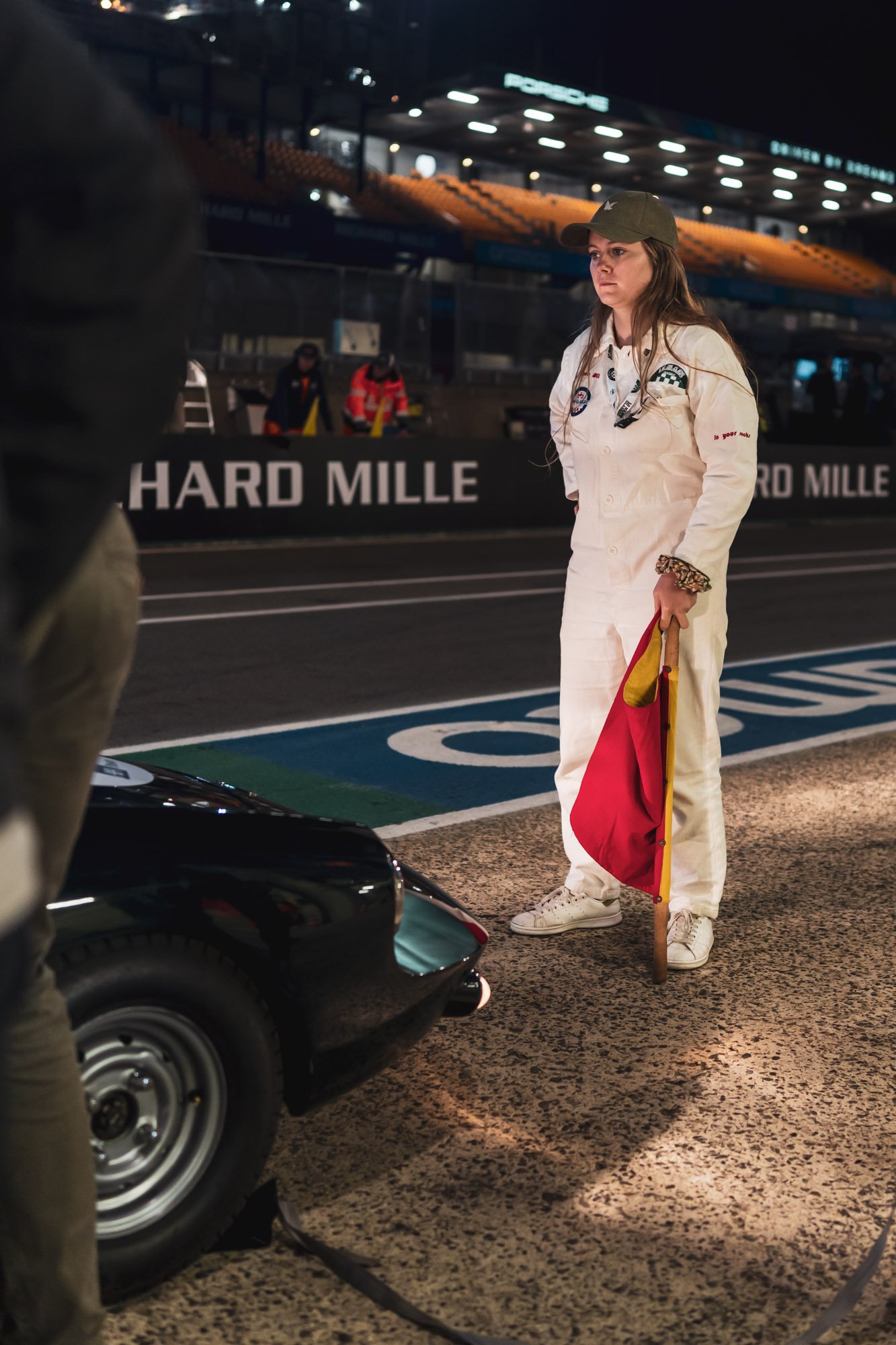

However, Friday sessions were ‘just’ about practicing and qualifying, with true night racing about to come the day after. It was then when I stayed at the circuit until early morning, getting under my skin what 24 Heures du Mans is all about. That night, everything was special. Standing at the Dunlop Chicane and capturing pre-war racers? Check. Admiring pure speed overtake by an Alfa Romeo Giulia TZ1 from a near empty grandstand? Check. Experiencing drivers changing seats in a 1961 Ferrari 250 SWB at 3am? Check, check, check!
Whereas only the diehard fans were there at the grandstands until the end, more spectators chose to stay in the circuit village and… party! There were numerous clubs, bars and dancefloors ready to welcome those in need of venting their automotive emotions. Volunteers were aplenty!
A FOCAL POINT FOR THE AUTOMOTIVE WORLD
Three weeks earlier, eyes of the entire automotive world were focused on a Ferrari 499P crossing the finish line in the marque’s spectacular comeback to La Sarthe. Having clinched the title of the centenary race, they made history. Such fame doubtlessly affected race’s vintage recreation and to say that Le Mans Classic was popular would be a huge understatement. Aside countless spectators in-person and online, on Saturday the circuit was even visited by the tennis superstar Rafael Nadal and famous football striker Didier Drogba.
As they walked down the main straight just before ‘Little Big Mans’ they were welcomed not only with a huge applause from the crowds, but also with the awe-looks of all the kids preparing for their race in scaled-down bolides. This part of the programme was magical, too! Seeing the young generation picking up what seems like a dying passion was for me a very emotional moment, filled with the kind of joy only children can express. Just look at them in their cars!
MOTOR RACING TIME CAPSULE
However, if I was to pinpoint one inimitable moment so specific to this place it must be the historical Le Mans start of the Plateau 1. First, 83 vintage racers from the 1920-30s line up against the pit wall – a very spectacular parallel parking, if you ask me! Then, all drivers prepare on the opposite side of the track, waiting for the start sign. On the sound of the starting gun everyone runs up to their vehicle, literally jumps in, starts the engine and drives away. Depending how well igniting these 100-years-old machines goes, one can gain a dozen positions or even fall at the very end of the stake – a costly setback! I was lucky to experience this extraordinary moment both from the grandstand as well as standing by the sidetrack. Simply unforgettable!
But Le Mans Classic is much more than that. It is a time capsule, and it is one of a kind. Where else could one see 71 vintage Bentleys racing against each other as Benjafield’s Racing Club? What other event offers old-school racing to the core, with dedicated drivers pushing unique cars such as 250 GT SWB “Breadvan” against other legends in form of numerous D-Types or Lotuses? Eventually, where on earth is the entire entourage matching so well and at such a scale, with drivers wearing historic-yet-attested overalls, sporting vintage hairstyles or helmets?
Circuit de la Sarthe inscribed itself in my automotive memories as a racetrack that never sleeps. It provided me with some unique encounters with vehicles I have not seen in person before – most memorably the blue Ferrari 250 LM, which had me at hello. Also, I will never forget post-race conversations with drivers, who nervously and proudly cheered for their co-driver still on track… or even casually bumping into a friend in the pits, whom I hadn’t expected to see there at all!


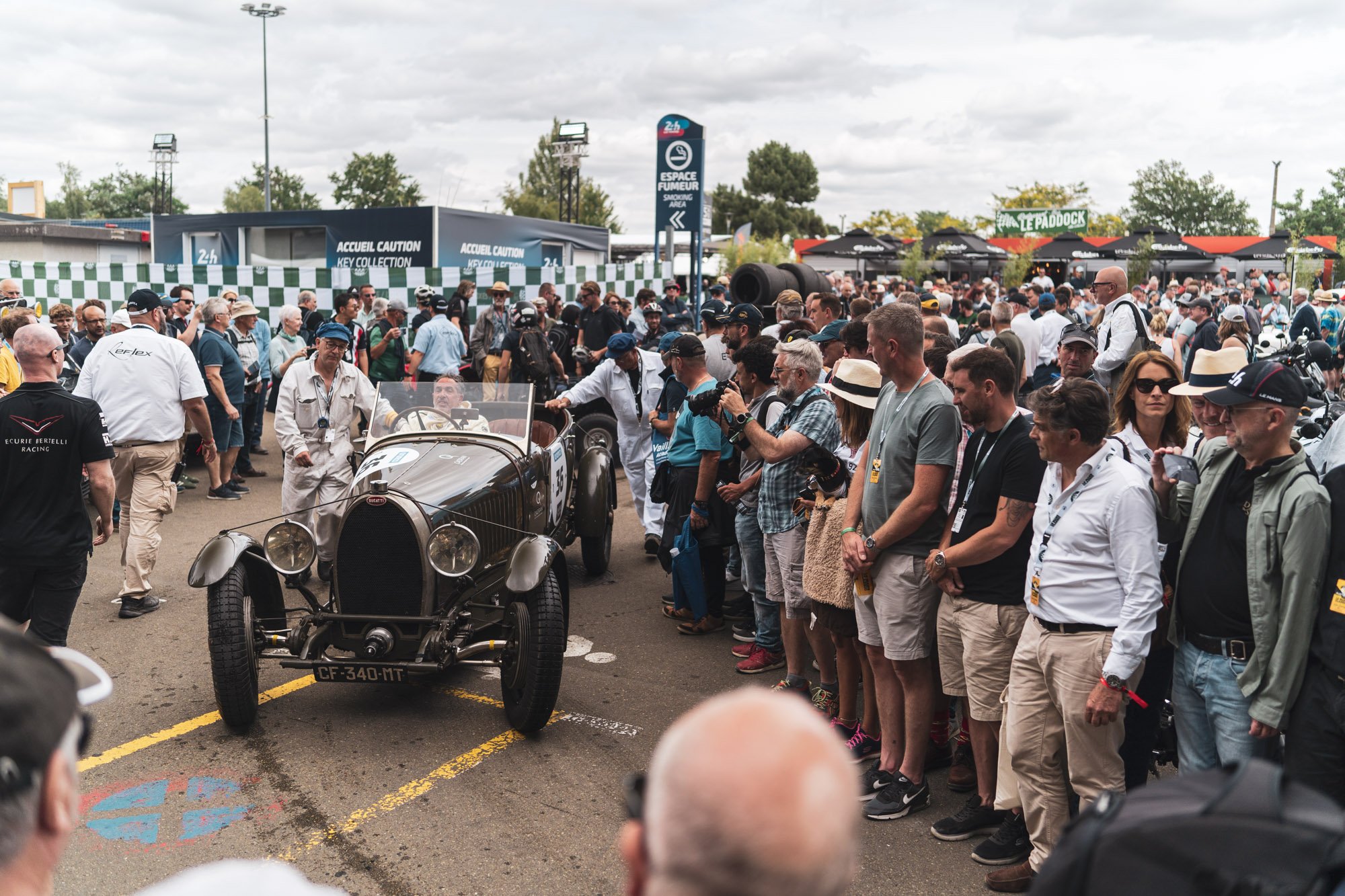

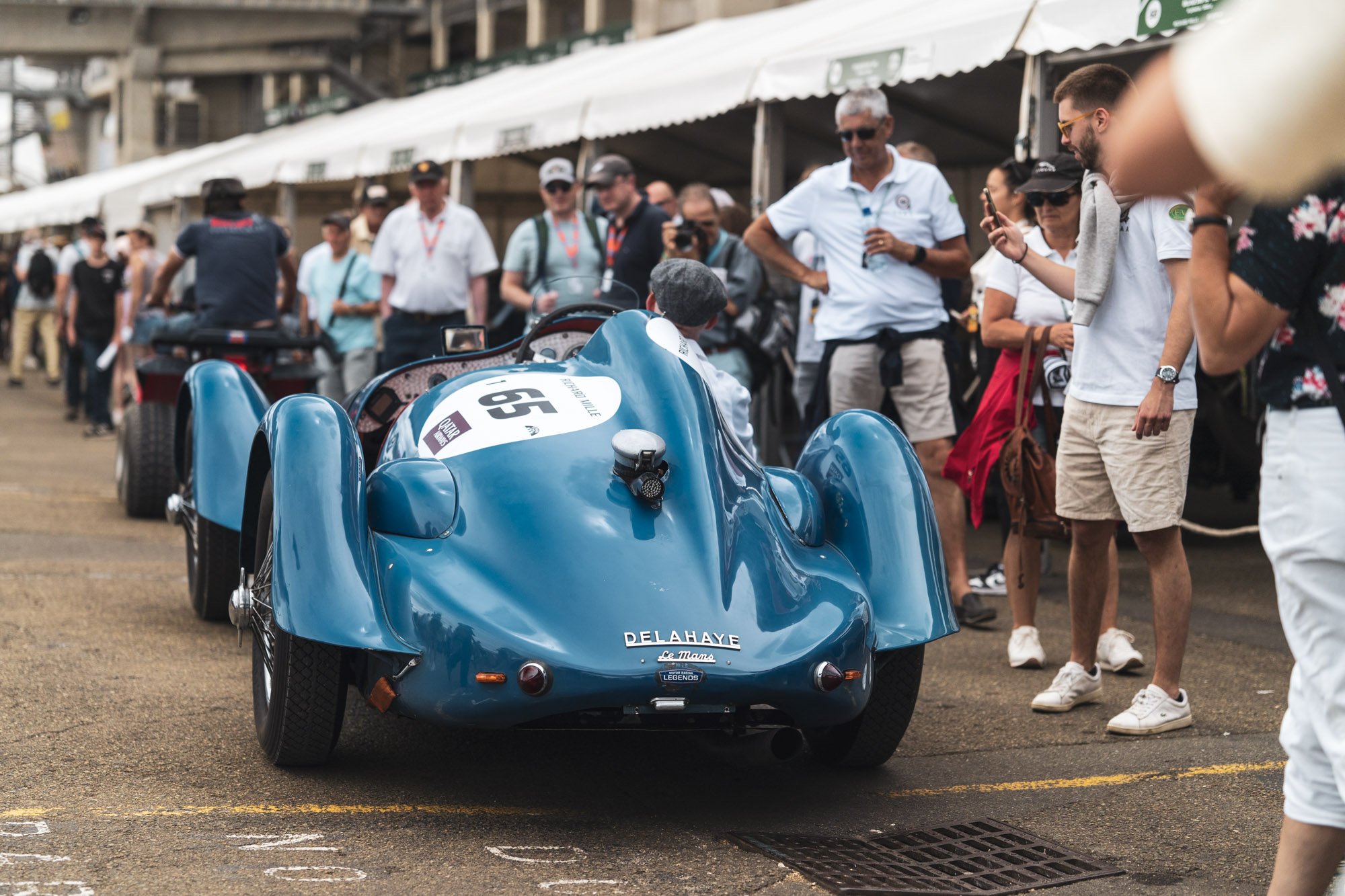
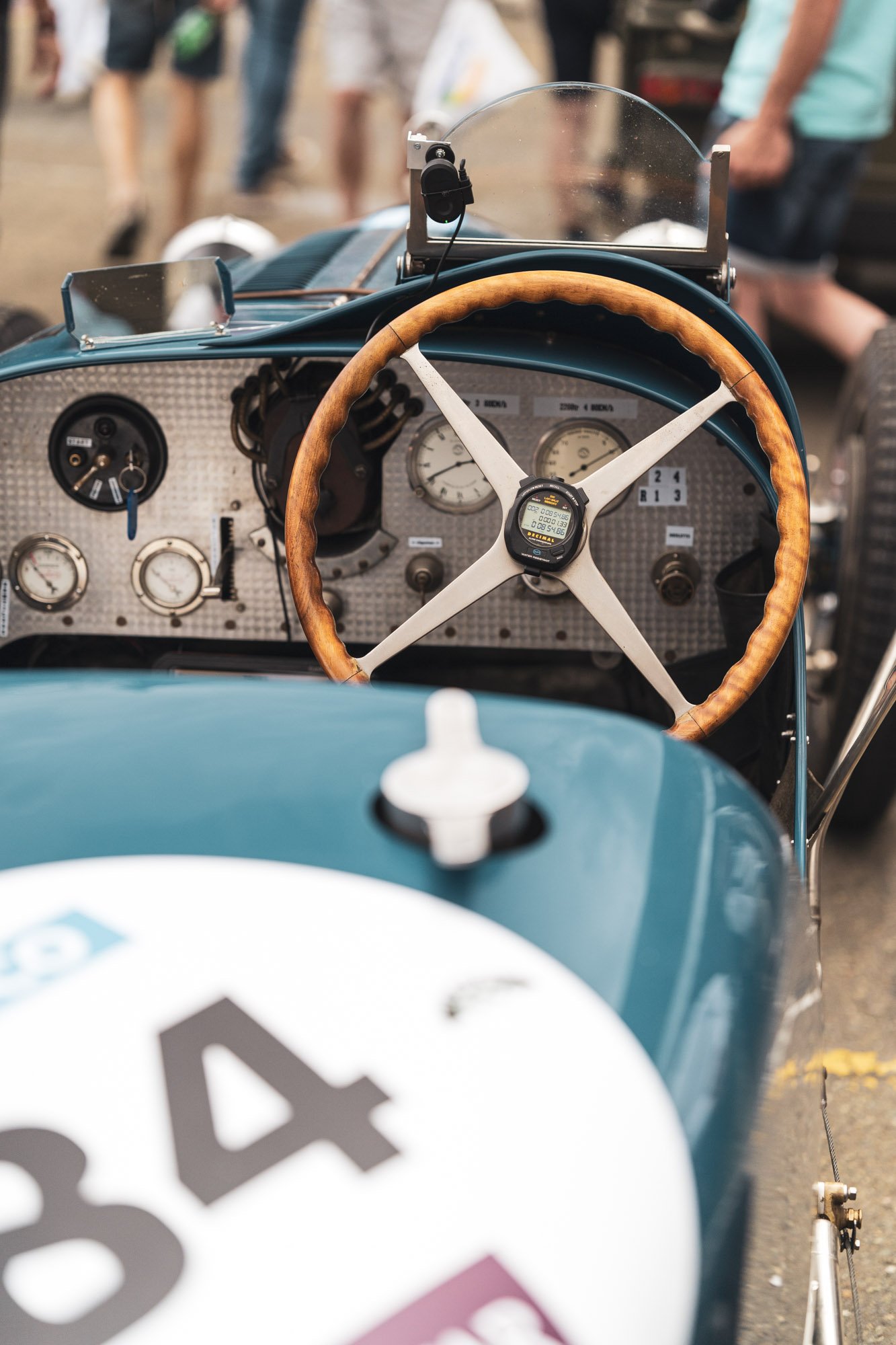
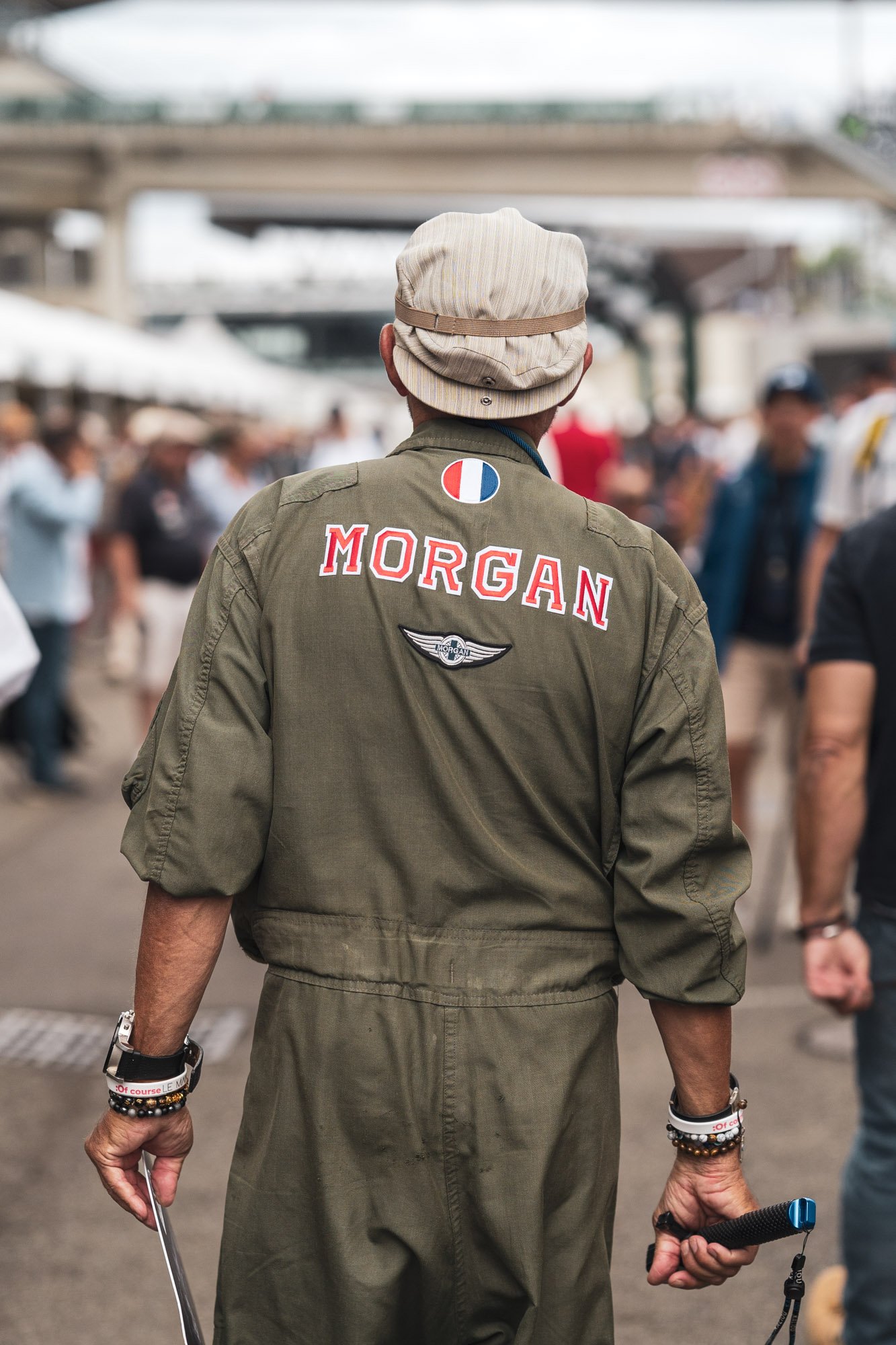
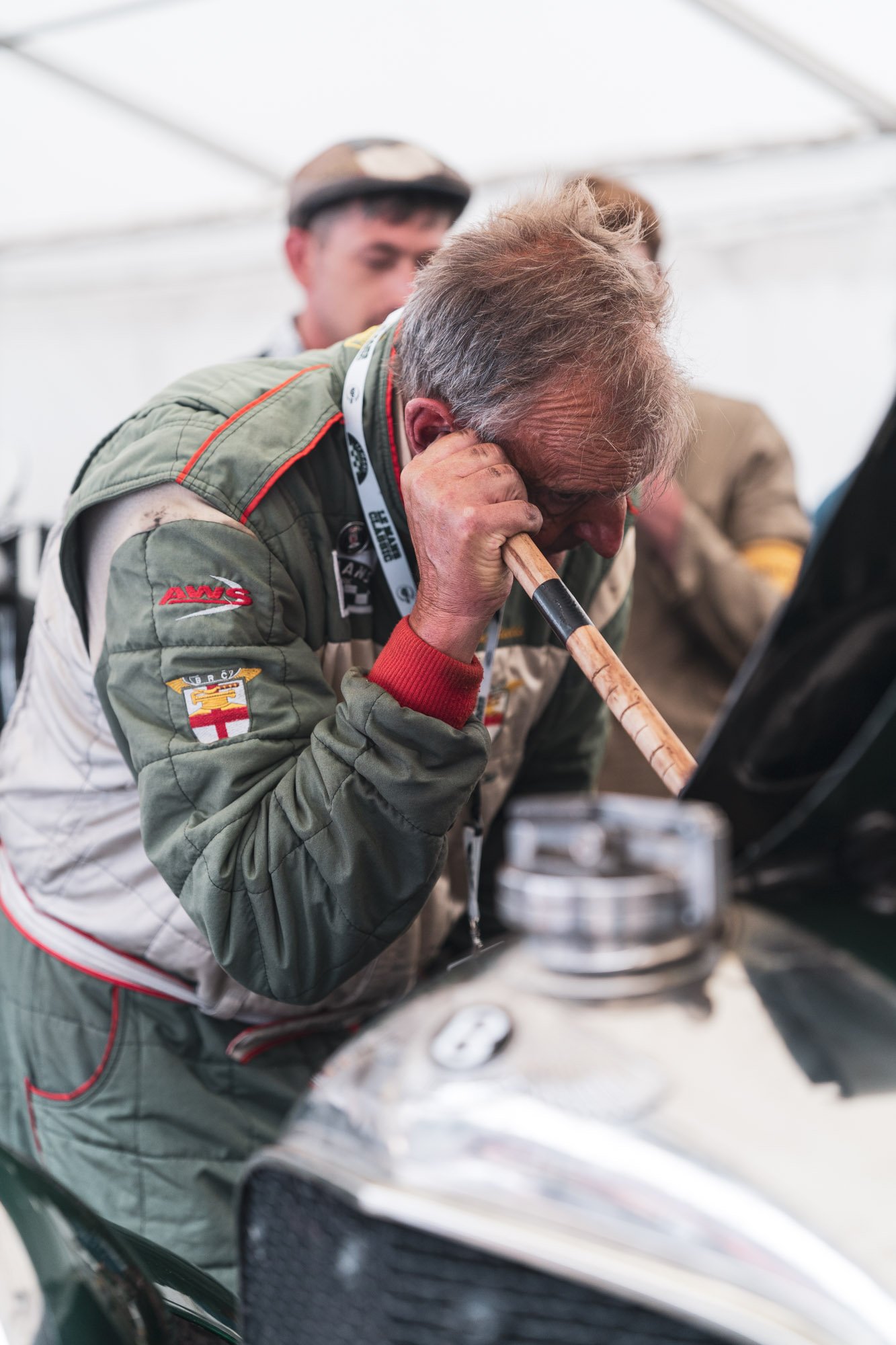
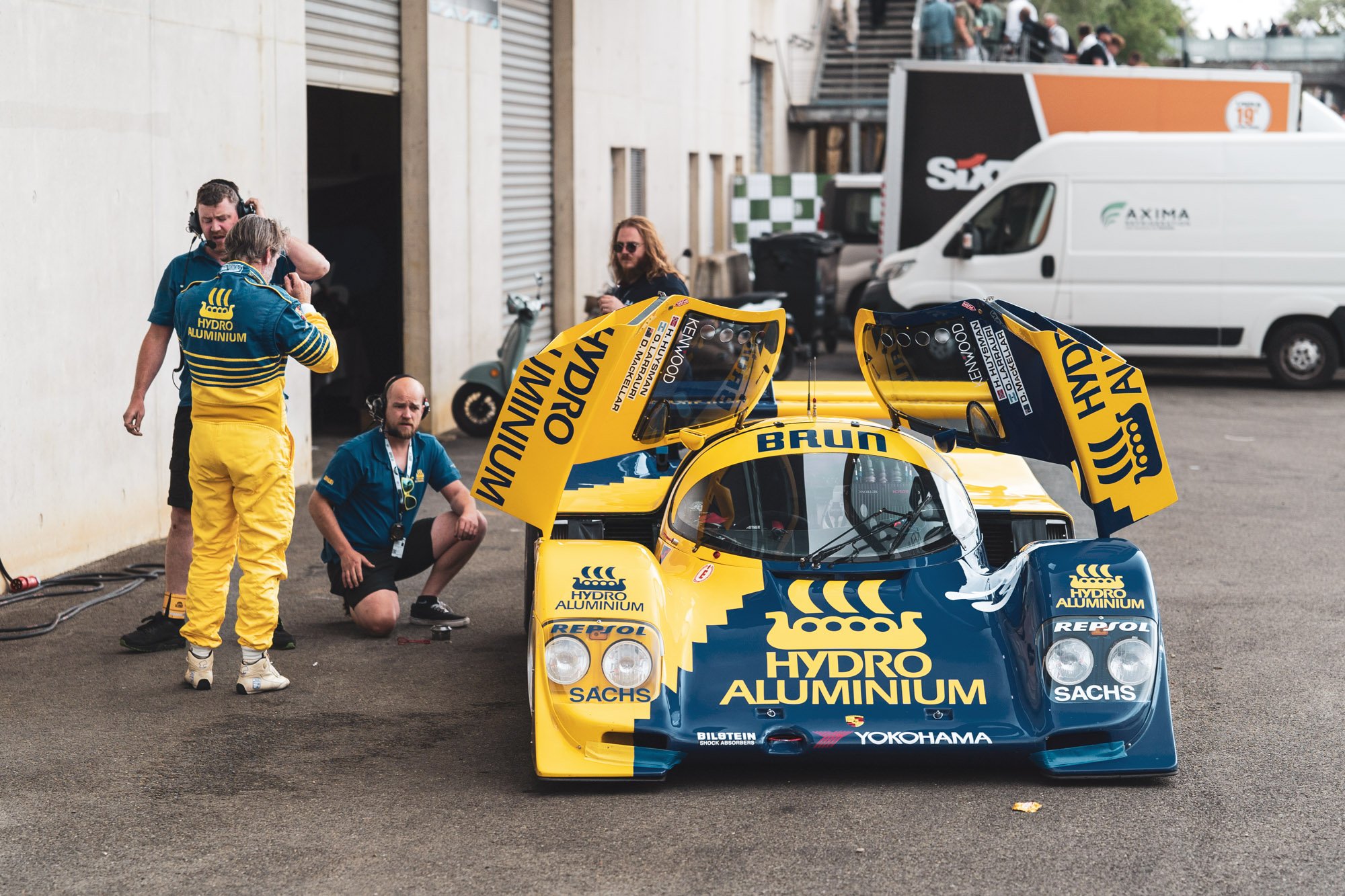
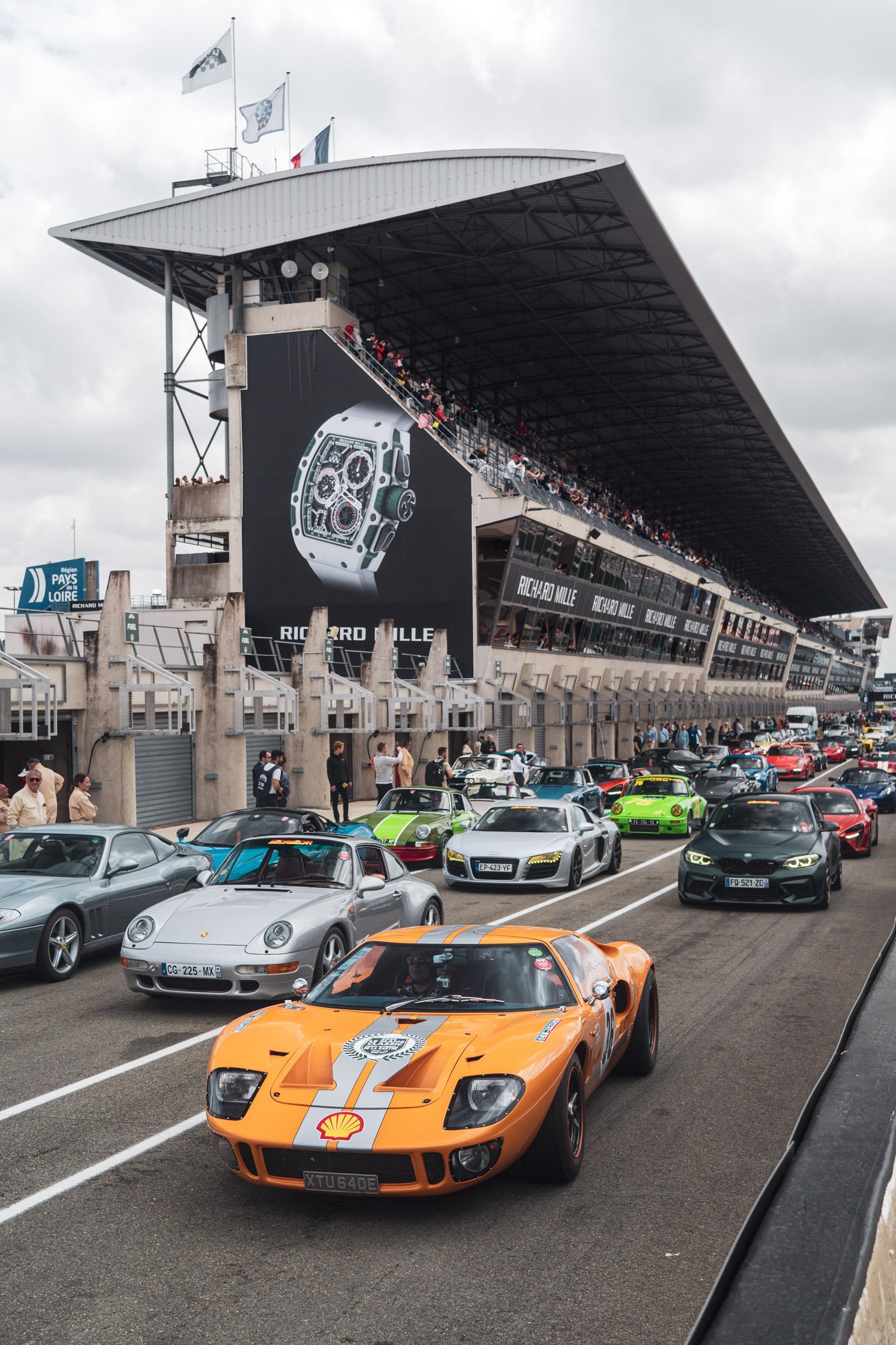
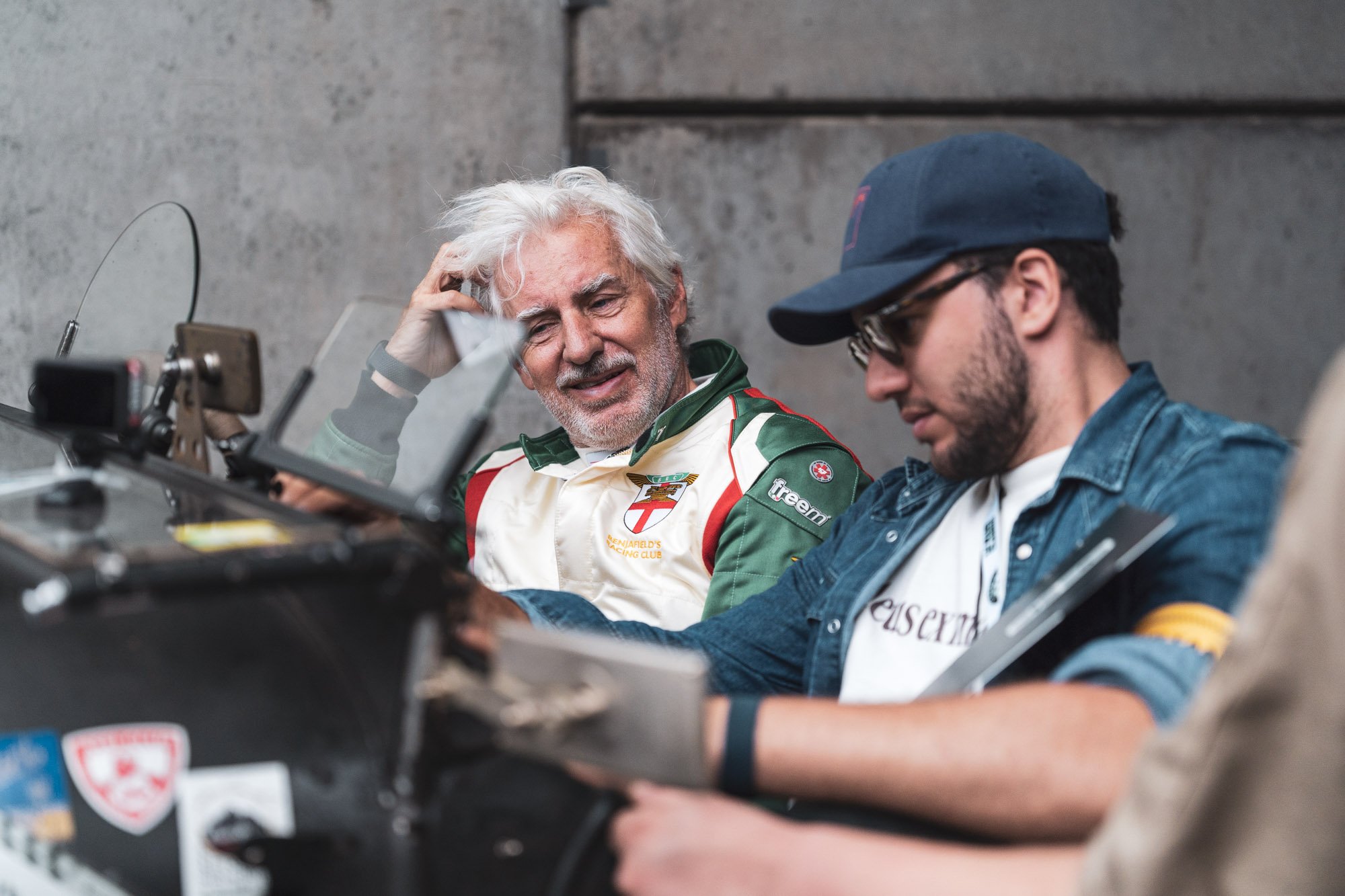
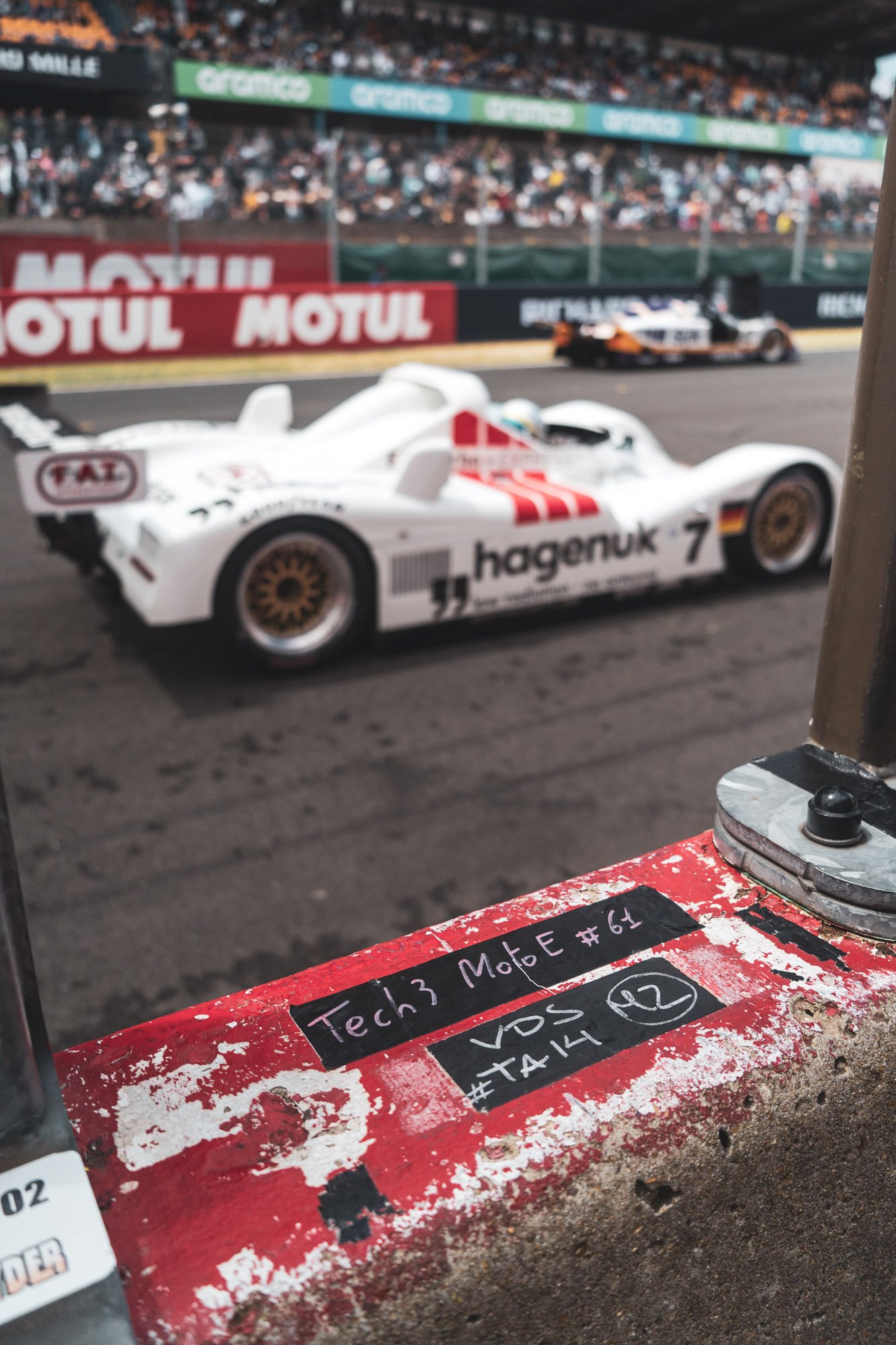
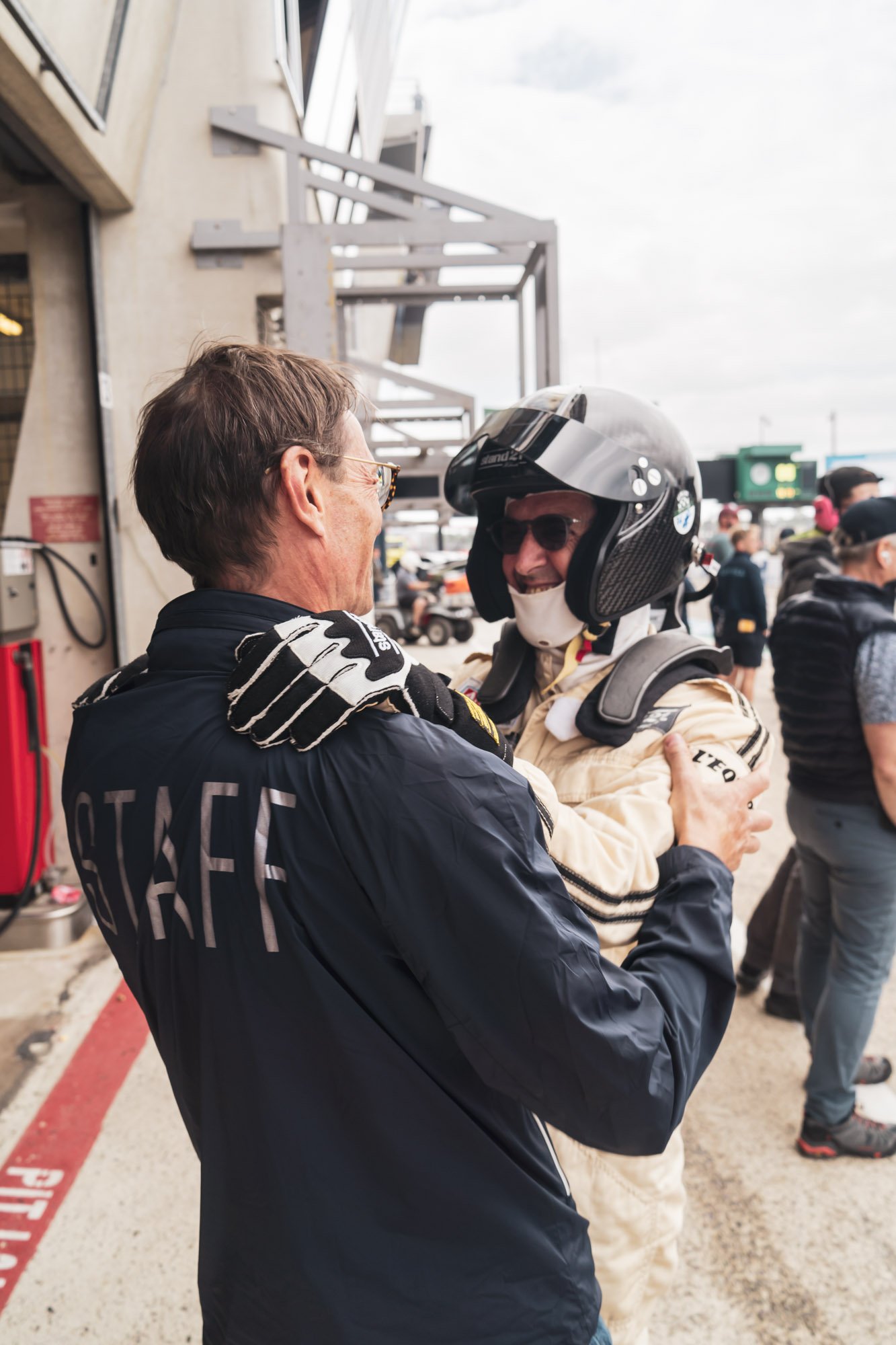
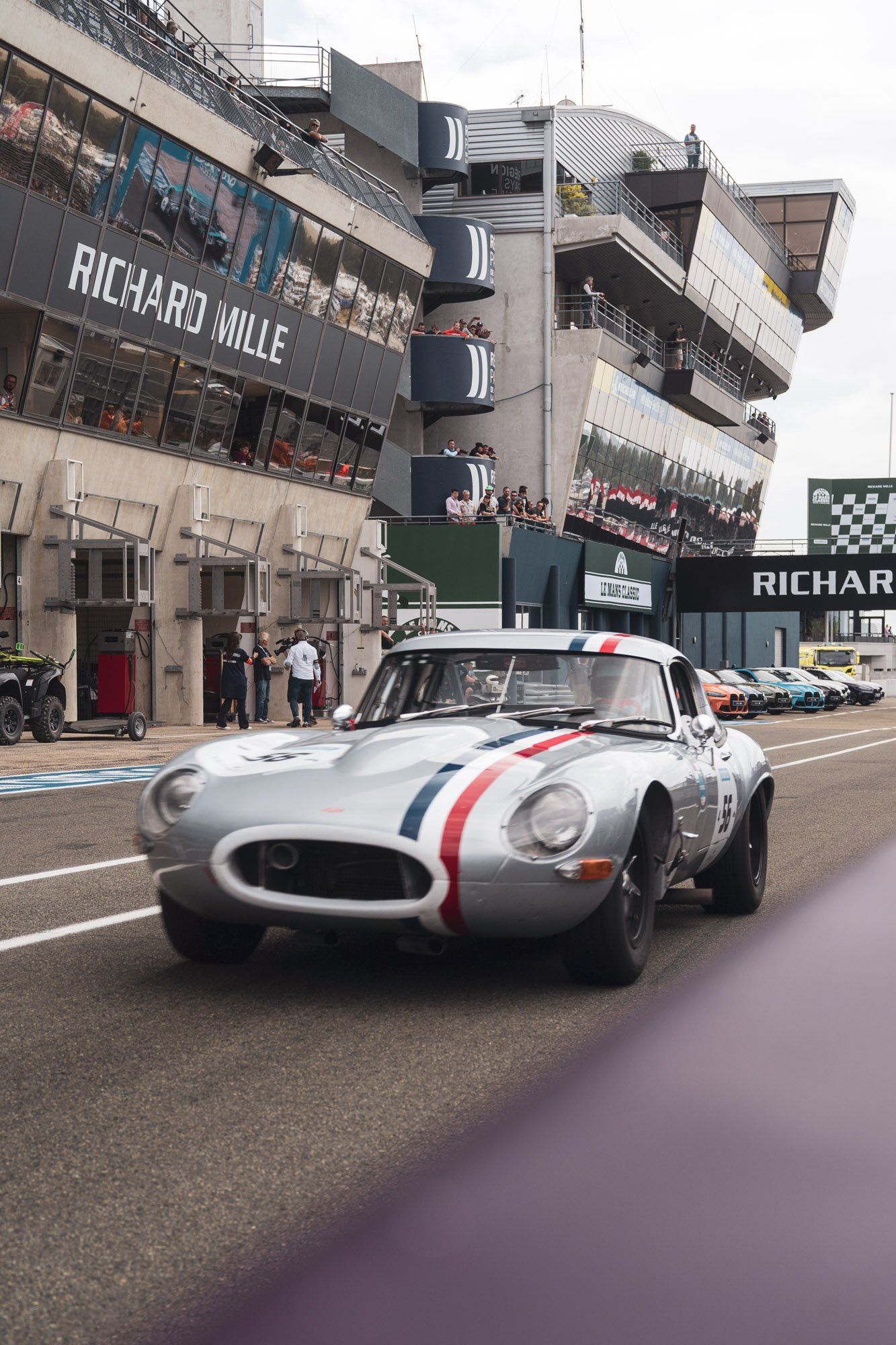
HOW I COULD HAVE NEARLY MISSED IT?!
After quick but very intensive three-and-a-half days I was simply elated. Ever since my debut on an automotive event of such class in 2017 have I been as ecstatic, as I felt that weekend on Circuit des 24 Heures. Sitting on the plane back to Copenhagen, my ears were still buzzing with high-revving race engines and my chest suppressed with countless double-choked Webers hungry for more air.
Whilst earlier that week I was questioning the sanity of booking my flights to Paris for Thursday, arriving late at night in Le Mans, spending most time on the circuit sacrificing sleep and asking my body to run mostly on pain au raisin, almond croissants and coffee, now I can say with clear conscience – it was well worth it! Huge thanks to Peter Auto for preparing such a treat, to all the drivers for putting on a show and after all… to Circuit de la Sarthe. You’ve enchanted me with your magic. Merci!
Text & Photos: Adam Pekala ©


